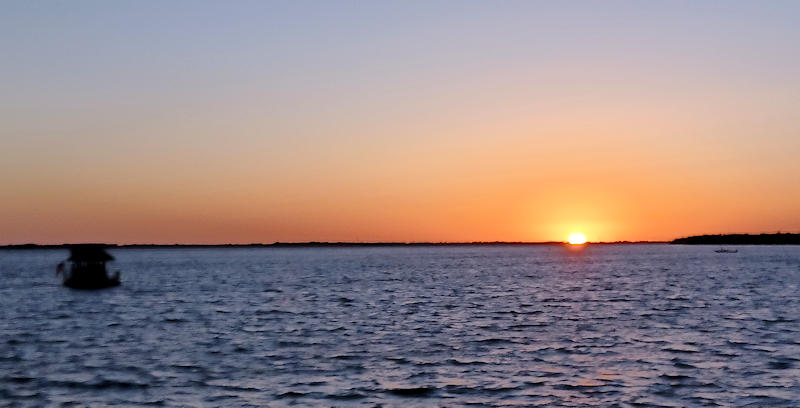March 22, 2022 It’s going to happen–maybe!
It’s been forever coming–first it was the first of the year, then the first of March, then last Monday—now I am again cautiously optimistic. Tomorrow we will move on board and Thursday we get off the dock. It was so easy when everything we had was on the boat.
Instead of posting on Facebook, I will be sharing my adventures and pictures here so that my friends who don’t do FB will be able to see them.
Seal Encounter
August 25
We spent three days in fog anchored in Rockland Harbor and finally the sun broke through and we were ready to leave. I stepped out to get ready to pull the anchor and glanced out over the stern. I was surprised to see someone looking back!

Yesterday several lobster boats were netting for baitfish in the harbor and I noticed seals hanging around just outside the nets. Perhaps this one was looking for a handout. I was lucky to have my camera nearby and the seal stayed for several minutes.
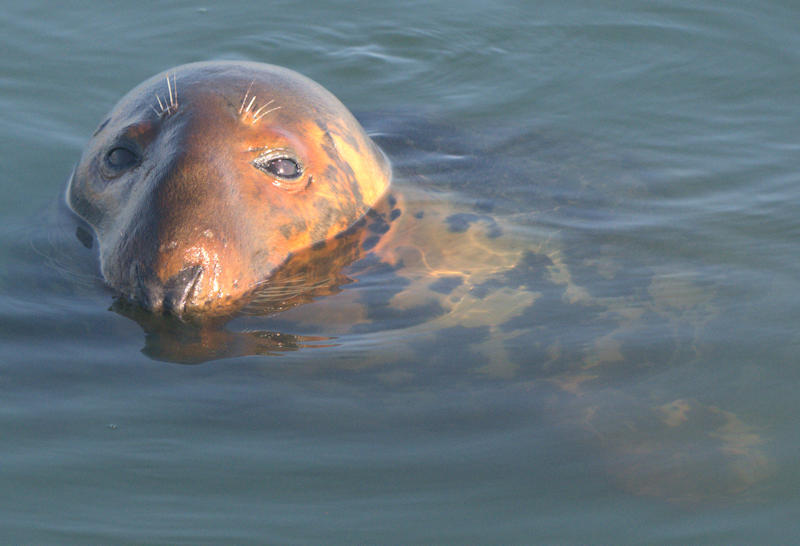
As I said, the seal just starred at me expectantly, then decided to move on.
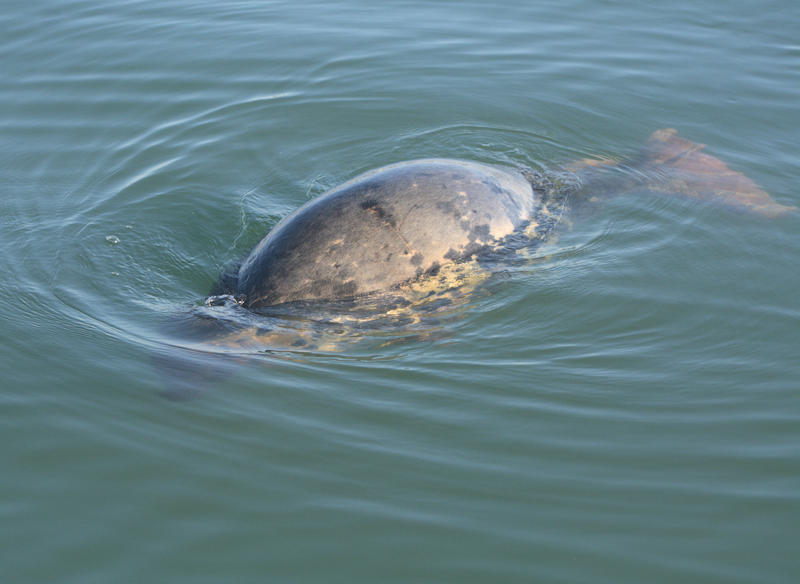
Maine Is Another Planet
August 14
Time Flies!! We travelled our 2000th mile a couple of weeks ago. I am finding it very difficult to get time to process and post photos so I have to make this quick. Maybe I will add to it later. We finally made it to Maine last week and was there just in time to catch 2 days of summer in Linekin Bay near Booth Bay Harbor. It was over 90 degrees and I set out in my kayak to explore. While paddling around some rocks I realized it was mid-day at low tide, the water was not really cold–perfect snorkeling!! I went back and got out my gear.
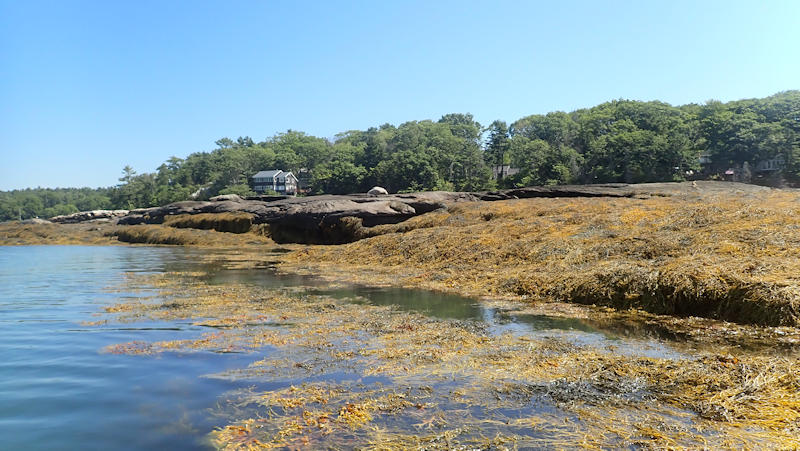
The tide runs about 7 -9 ft here and if you don’t go at low tide, all you will see is seaweed.
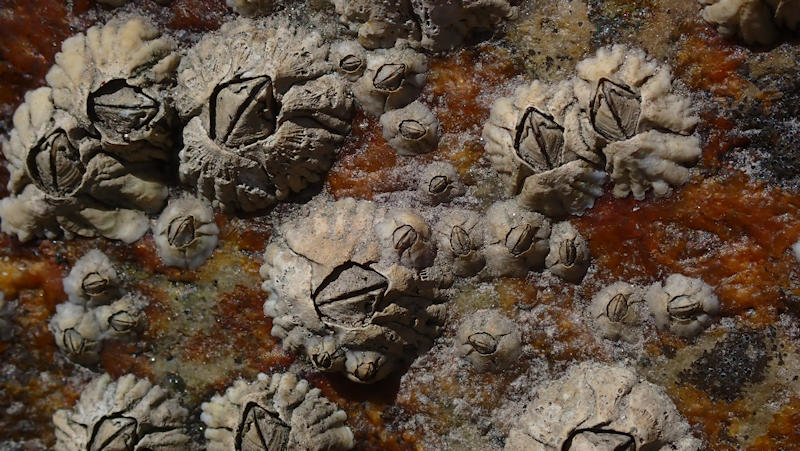
Northern Rock Barnacles are found not too far above the low tide line.
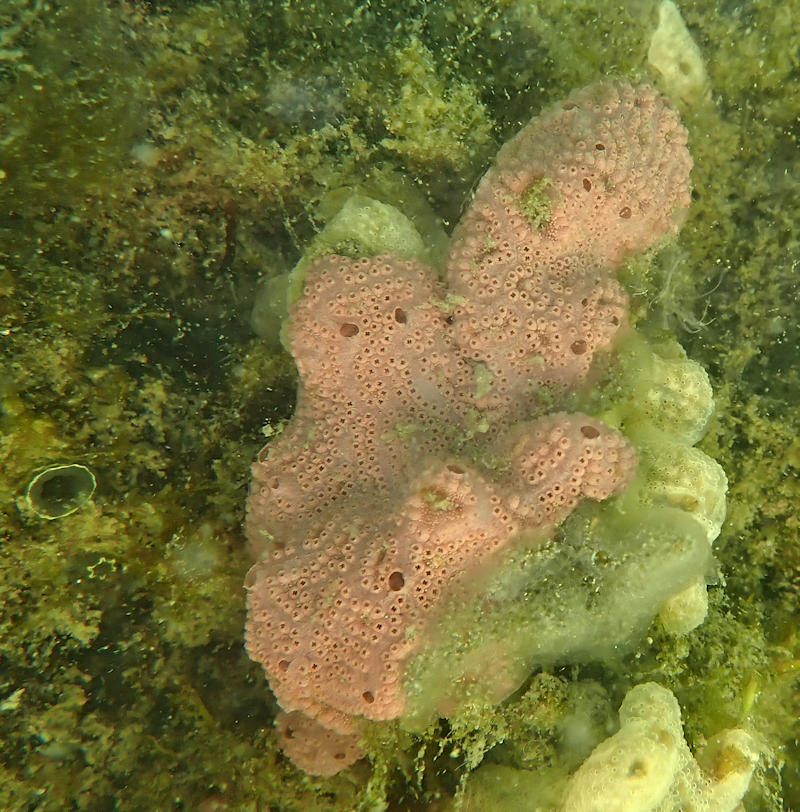

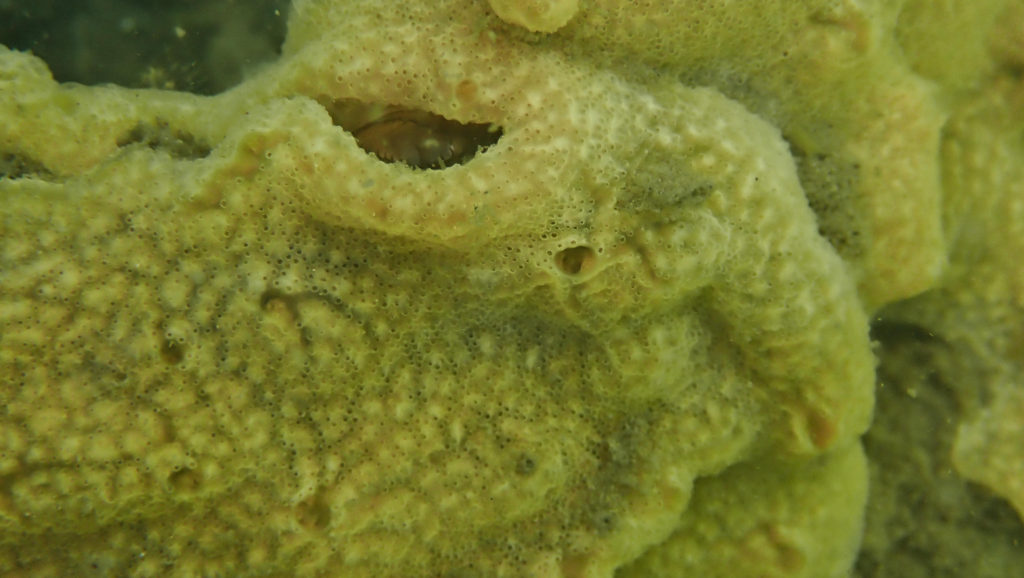
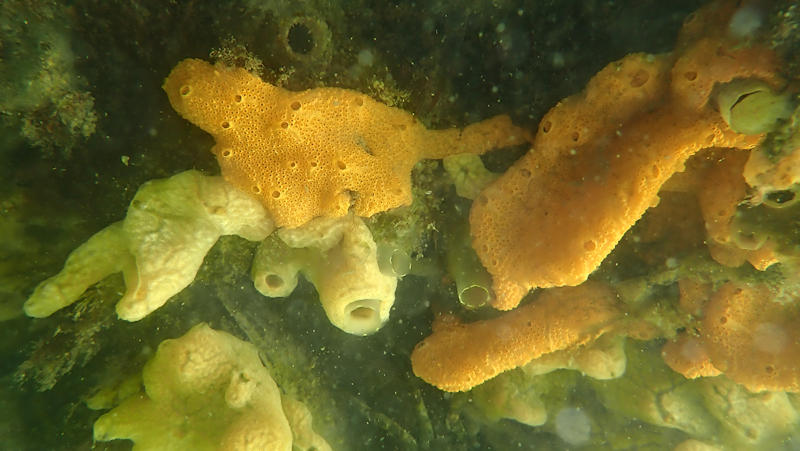
Compound Tunicates of several colors cover many of the rocks.
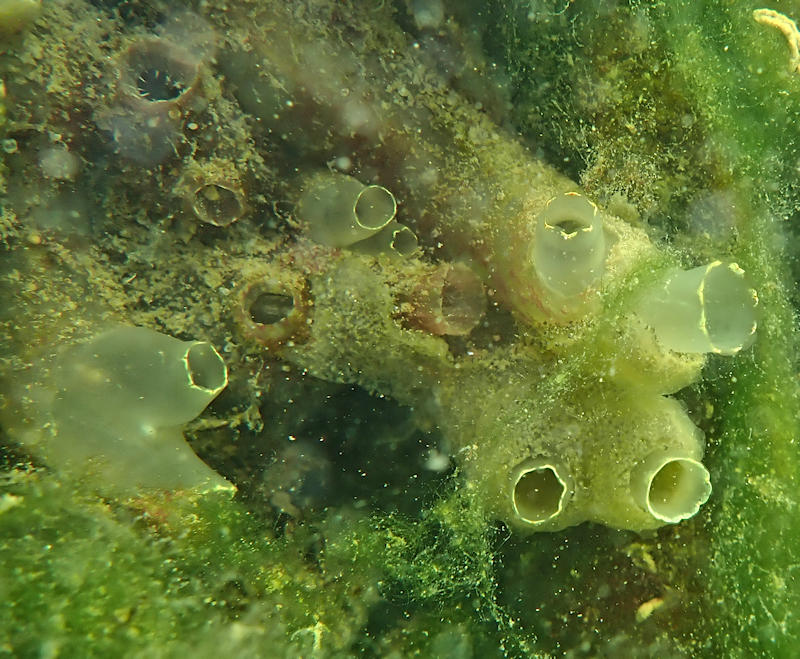
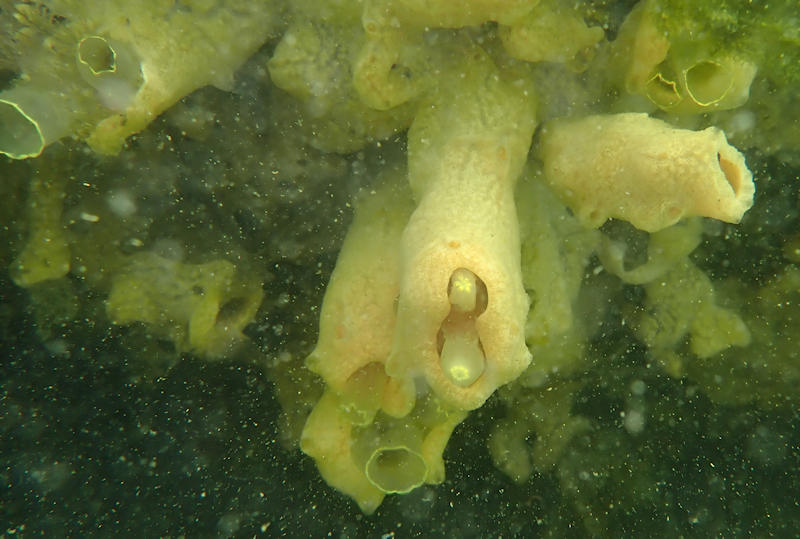
Even the single Tunicates are covered with compound Tunicates.
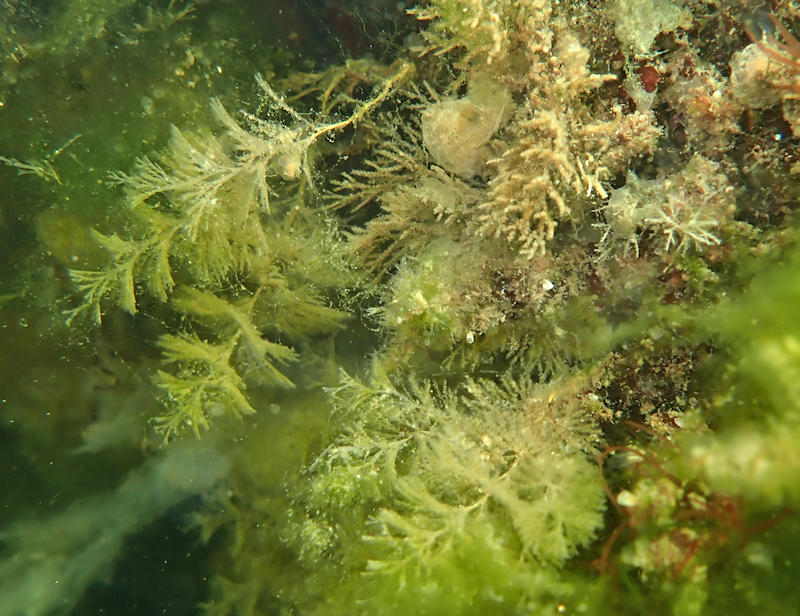

Bryozoans come in the bushy variety and the rubbery variety.
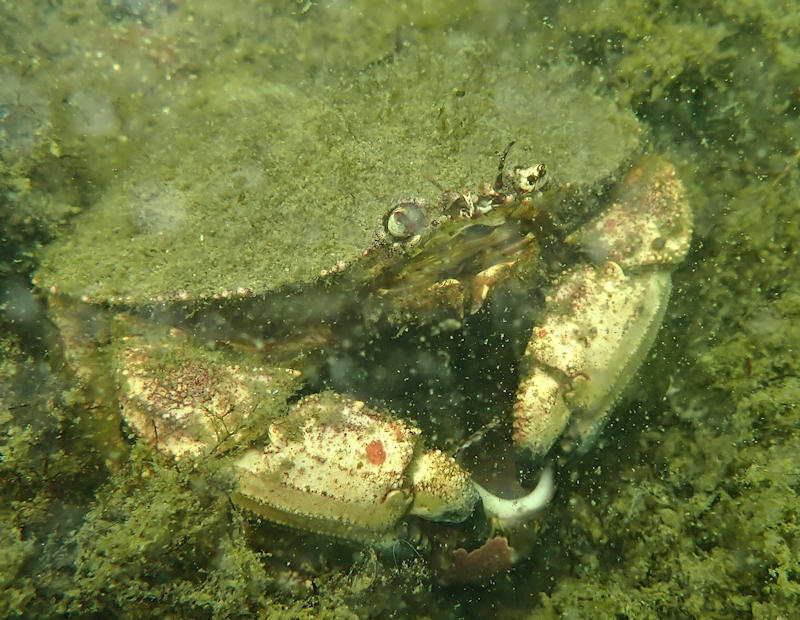
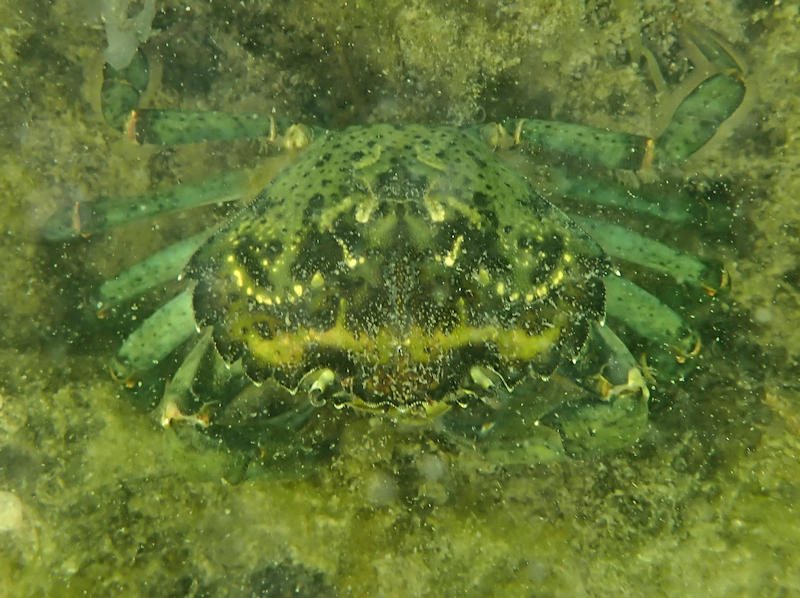
I encountered a Rock Crab and many Green Crabs.
And, of course:
Bird Watching and A Change In The Weather
May 19
One of the first things you notice after anchoring in the Dry Tortugas is the bird colonies on shore. This time of year, the Sooty Terns and Noddy Terns are fledging their young and the cacophonous calls are continuous day and night. Other sea birds include gulls, pelicans and a colony of Frigate birds that live on a small island that you can see in the second picture. The nesting birds are protected so you are not allowed to walk on the beach.


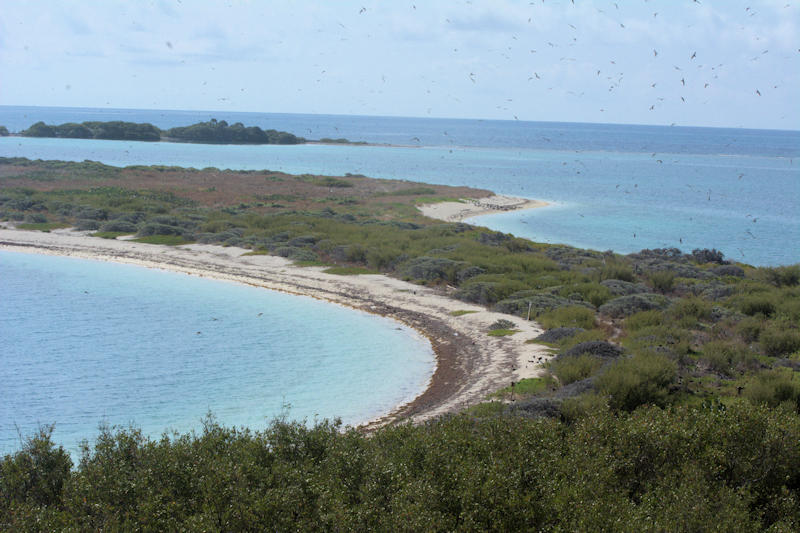
The Frigate Birds soar above. You can tell this one is a female by her black head. Juveniles will have white heads and the males have a red throat pouch. Both Noddy and Sooty Terns feed on the wing and the Noddys will dip their feet in the water, maybe to attract small fish.
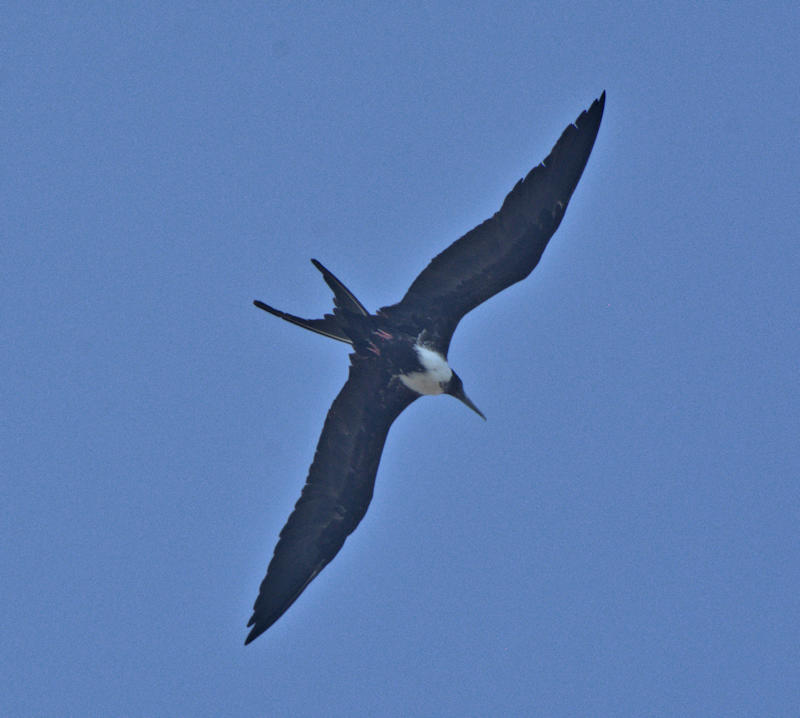

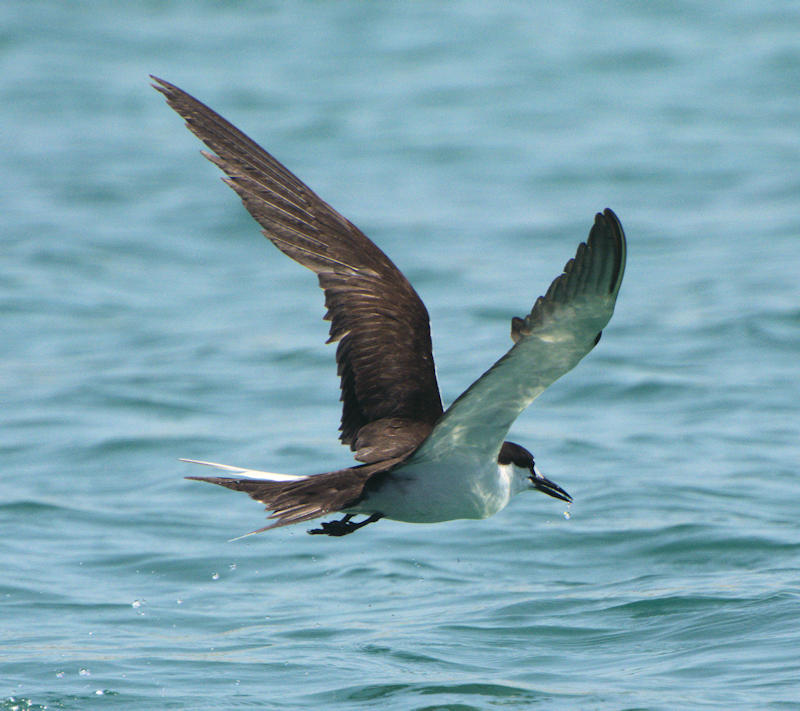
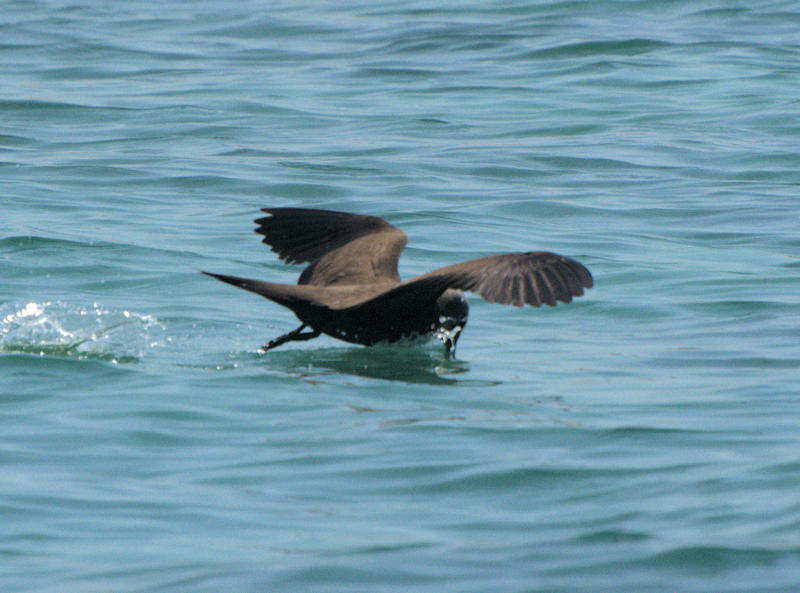
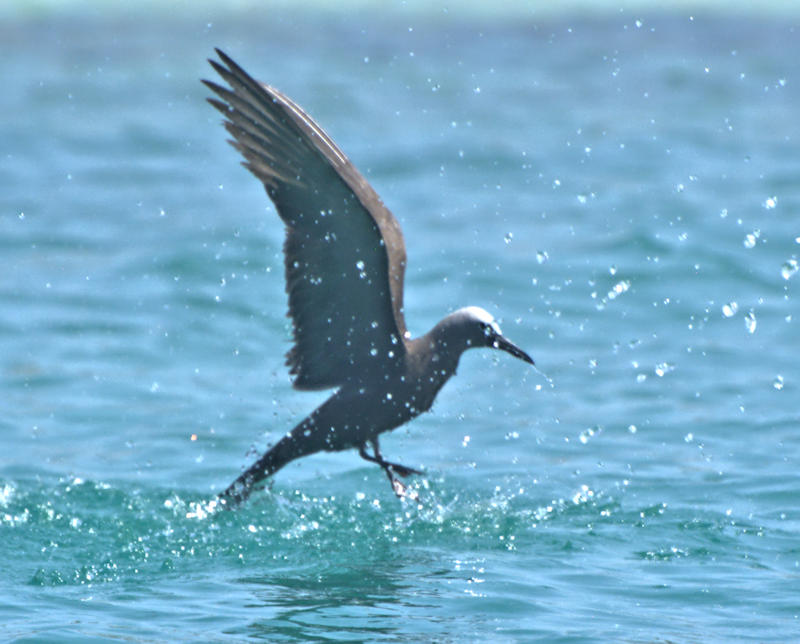

The Dry Tortugas is a stopover for songbirds migrating from South and Central America and Mexico. These birds have traveled a long way and find food and water here. There is a fountain, near some very large Buttonwood Trees, that the staff keeps clean and running for the birds. We sat on the bench nearly every day and watched what would come in. One of the park volunteers thought we were cute and took a picture of us.
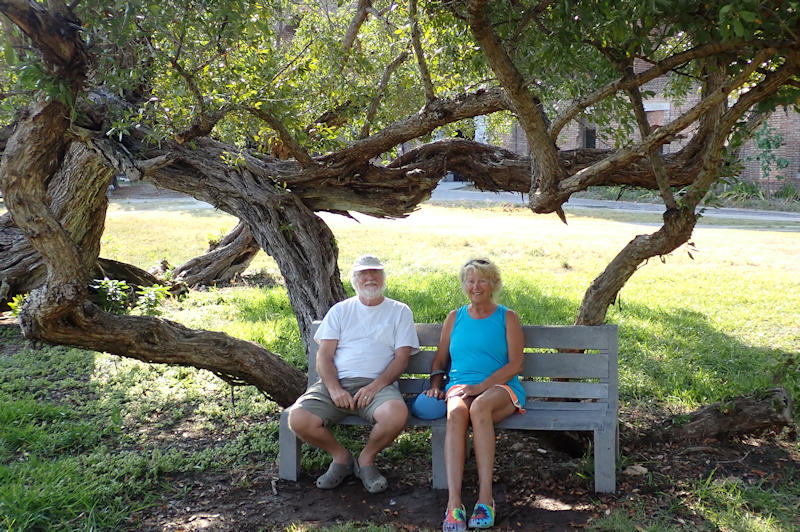

Mid May is nearing the end of the migration but there were plenty of birds there.
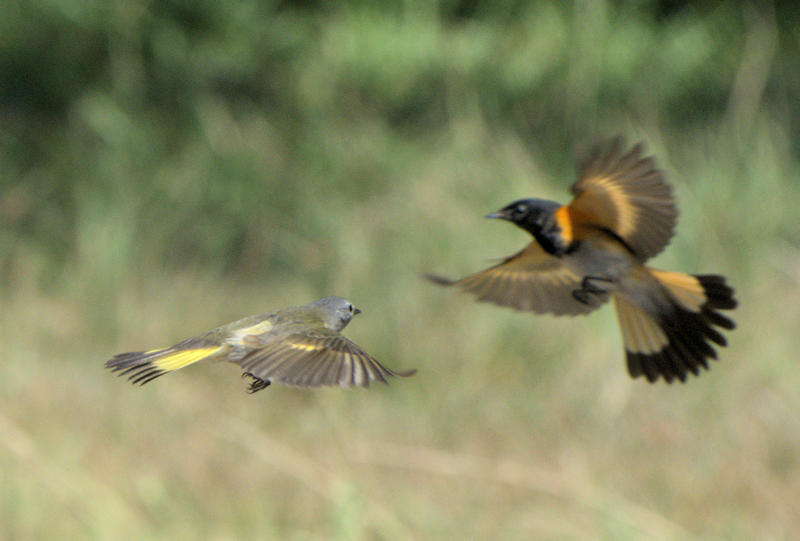
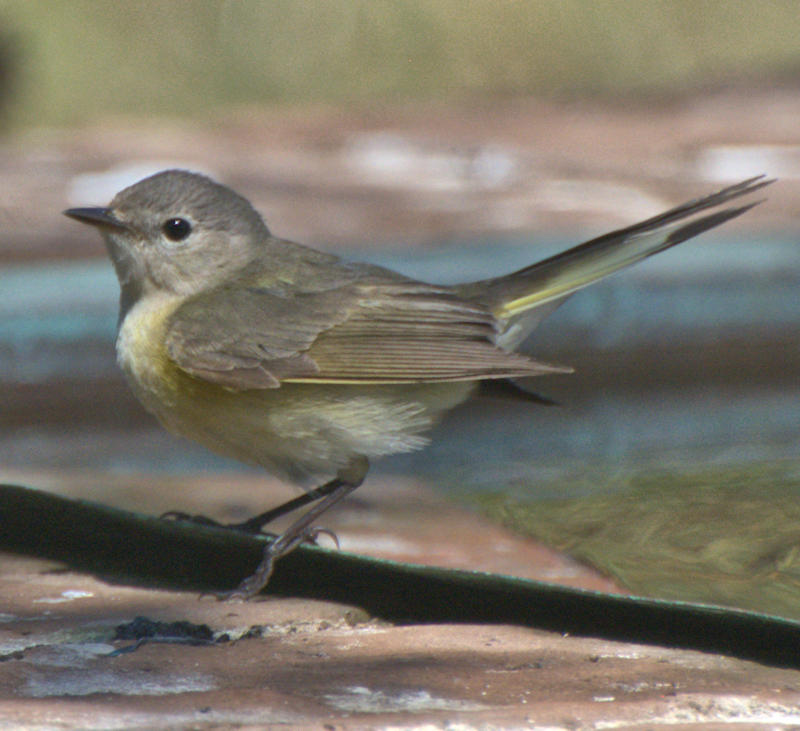


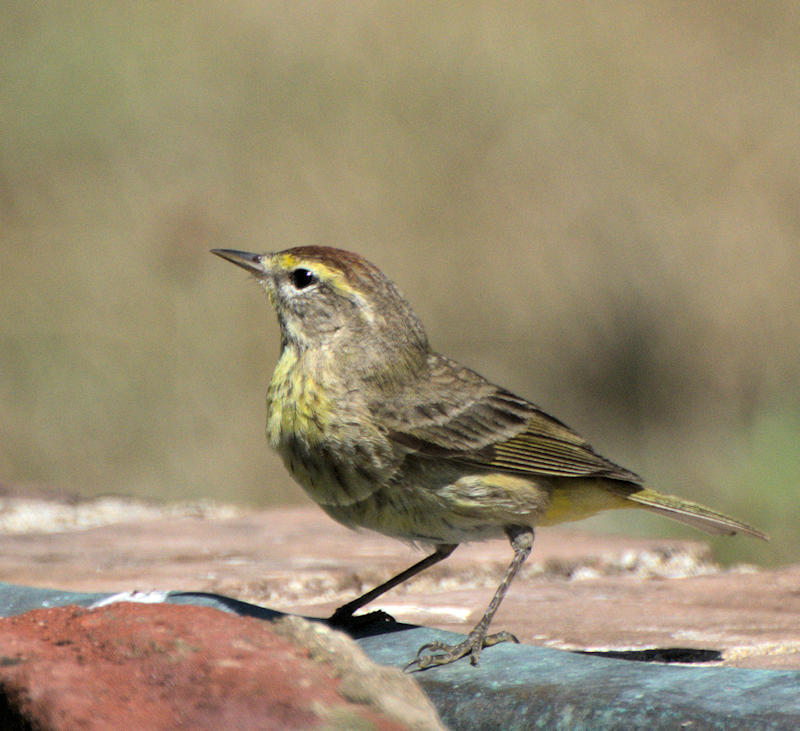
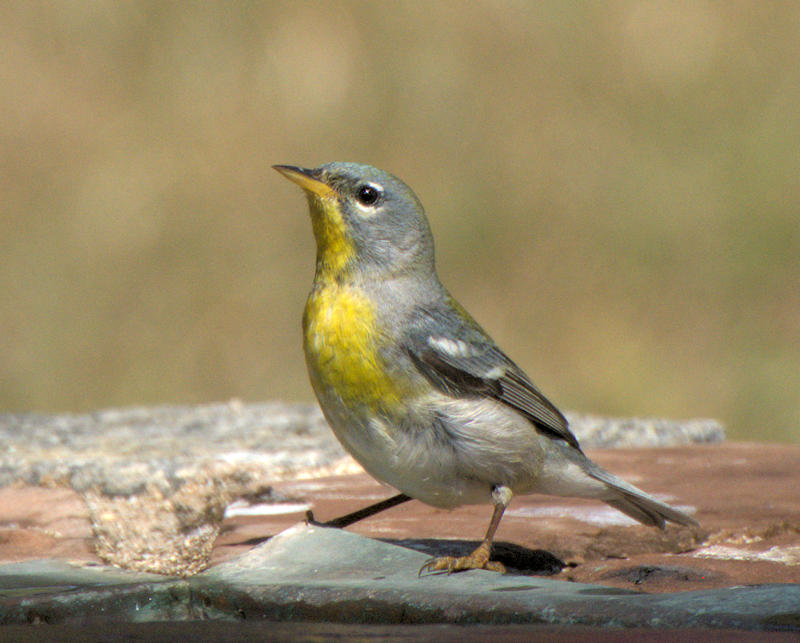
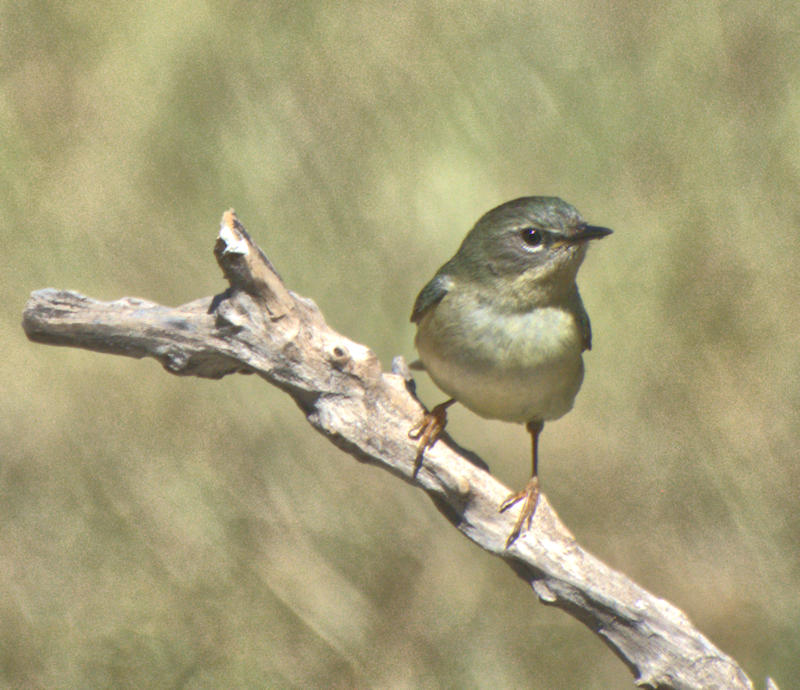
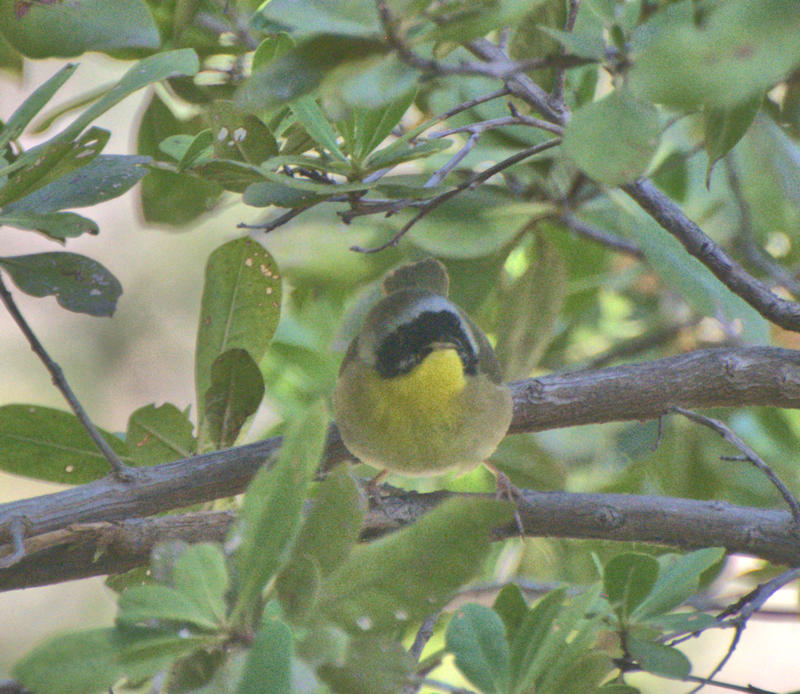
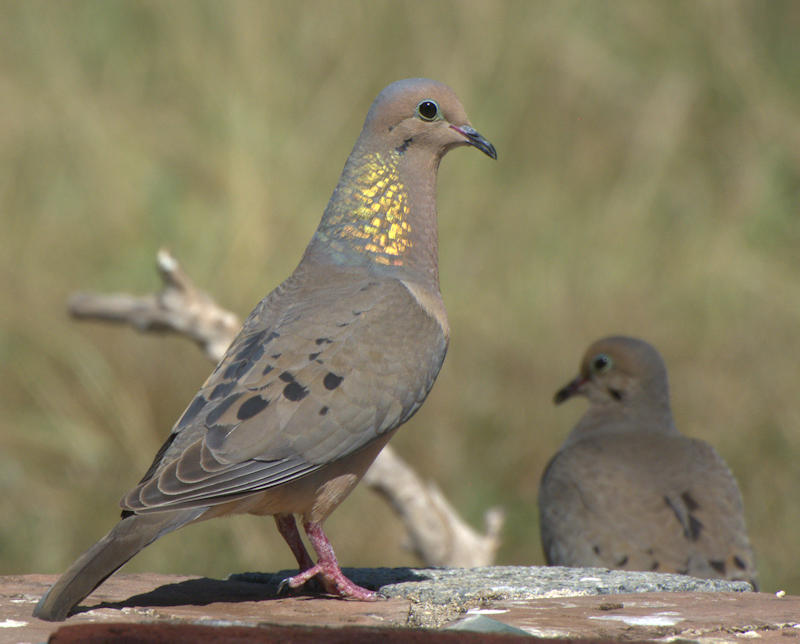
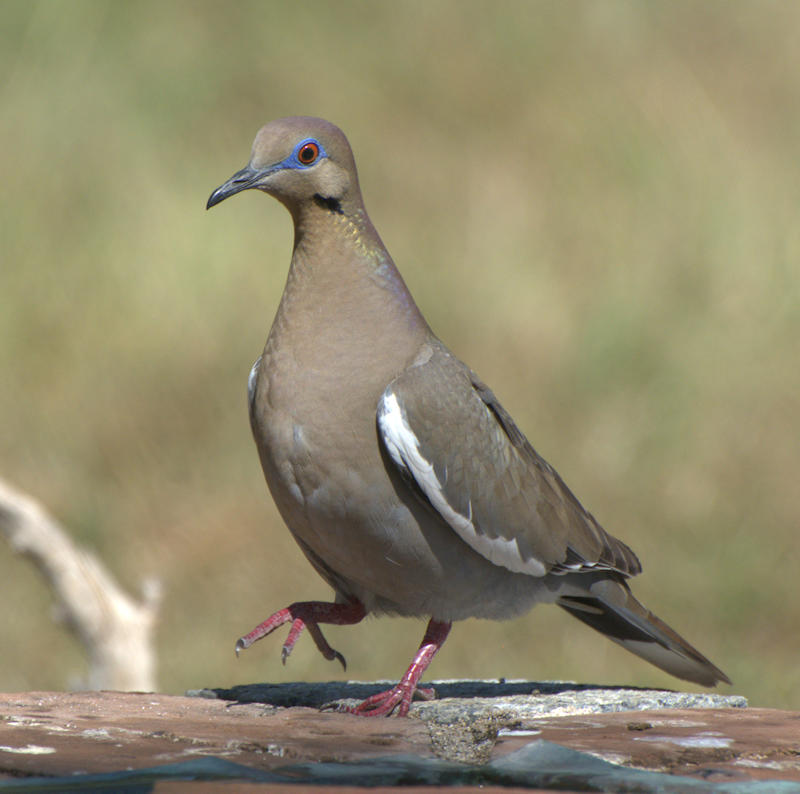
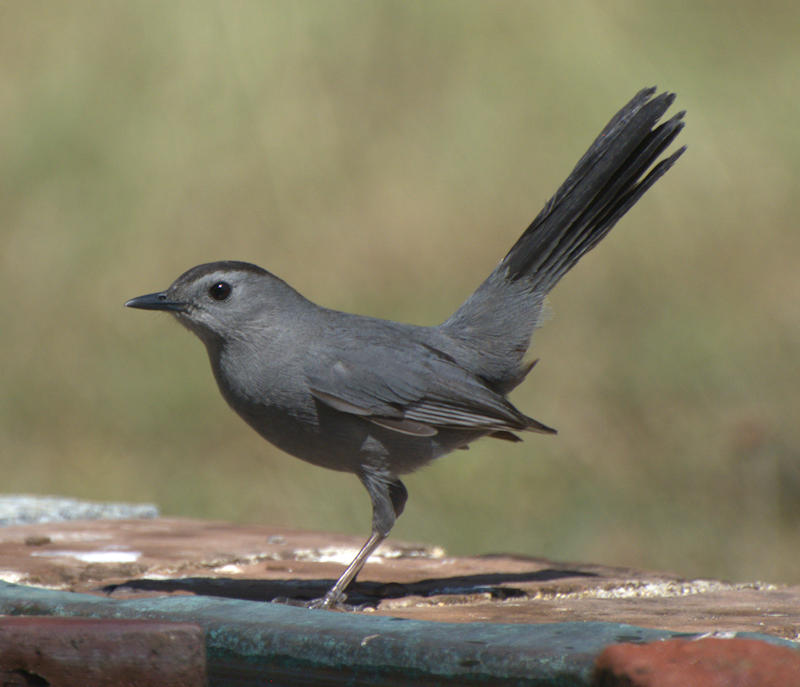
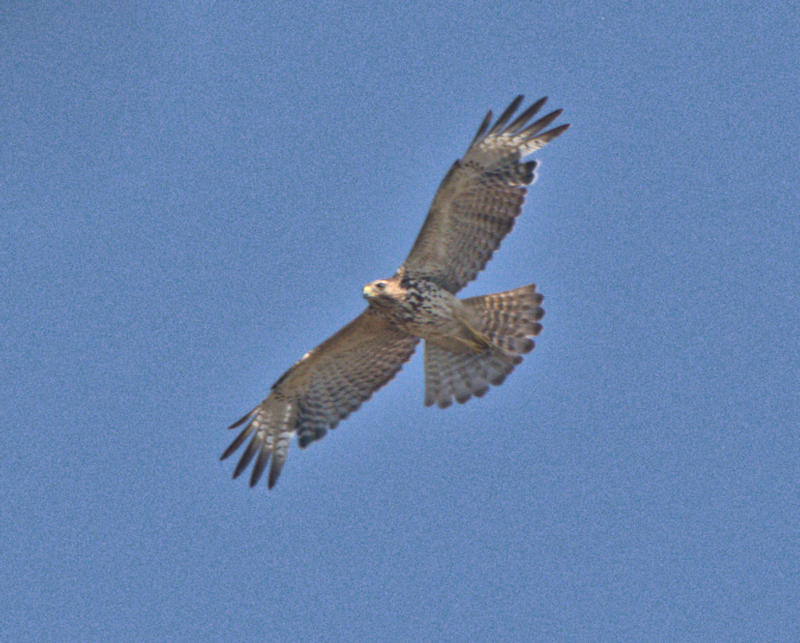
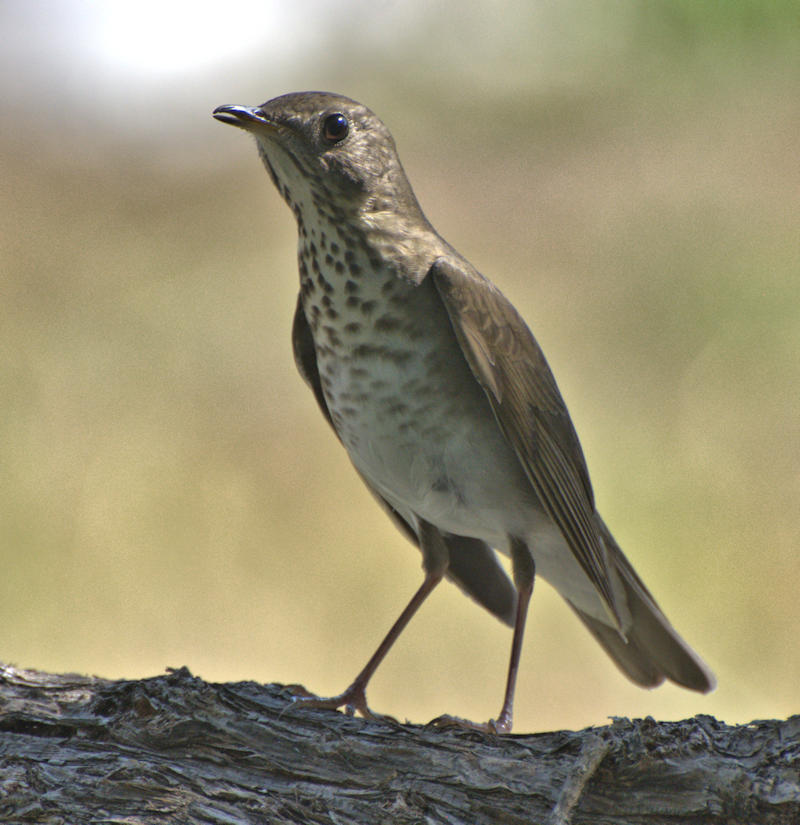
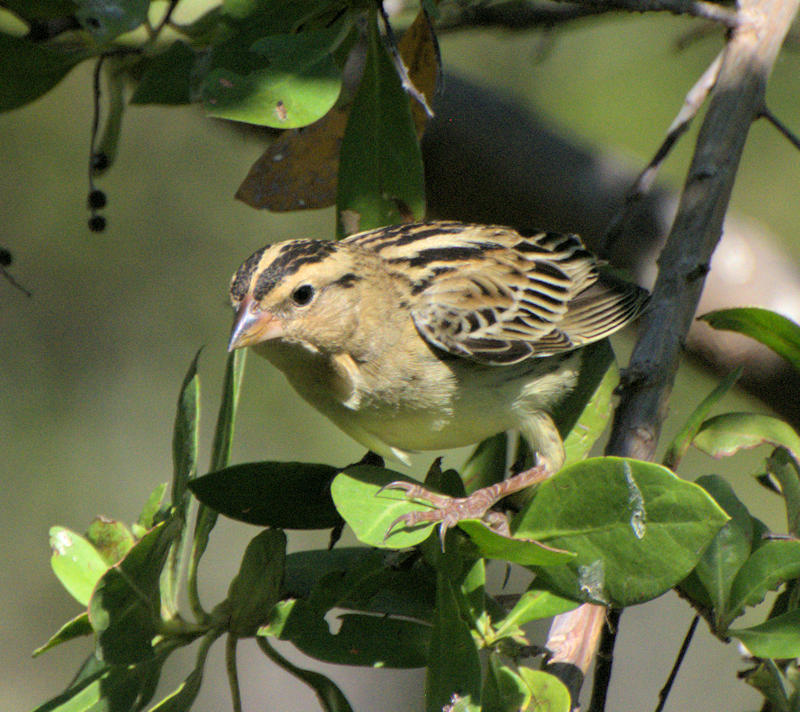
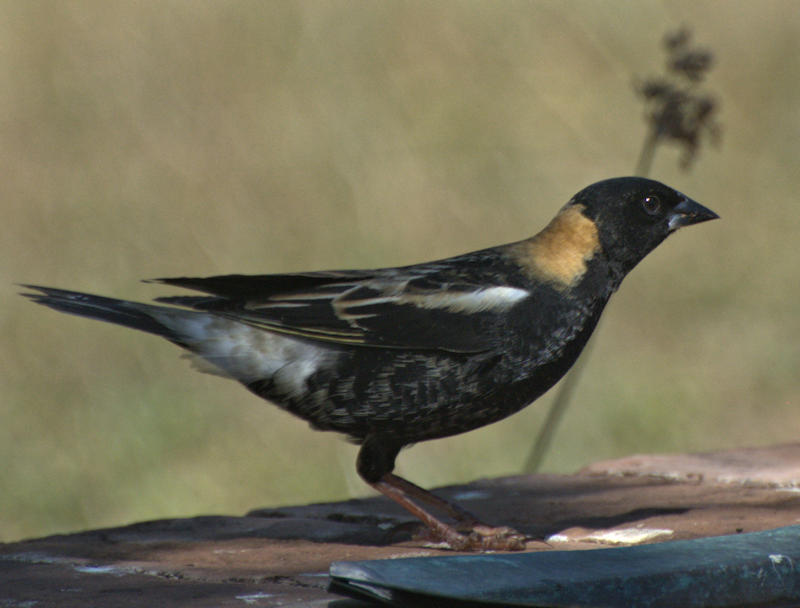
On the 19th, the wind had switched, coming from the south. We took our seats at the fountain that morning and immediately noticed that very few birds were visiting. The north traveling birds had taken off with the south wind to continue on their way. As we made it back to the boat, we noticed that all but one boat was gone and they were just about ready to leave. The wind switch also meant that our window of nice weather was soon going to disappear. We had figured that we could have one more day but why risk our pleasant visit with a miserable ride back. We were the last one out of the harbor. Since we left late, we did stay overnight in the Marquesas then sailed to Marathon the next day to order hookah parts.
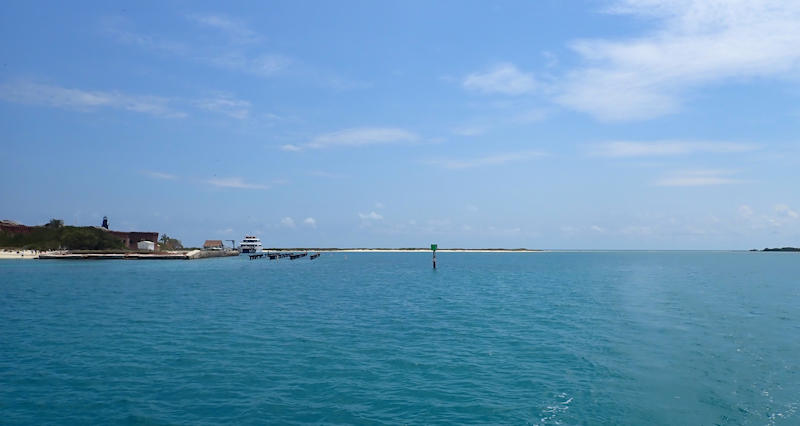
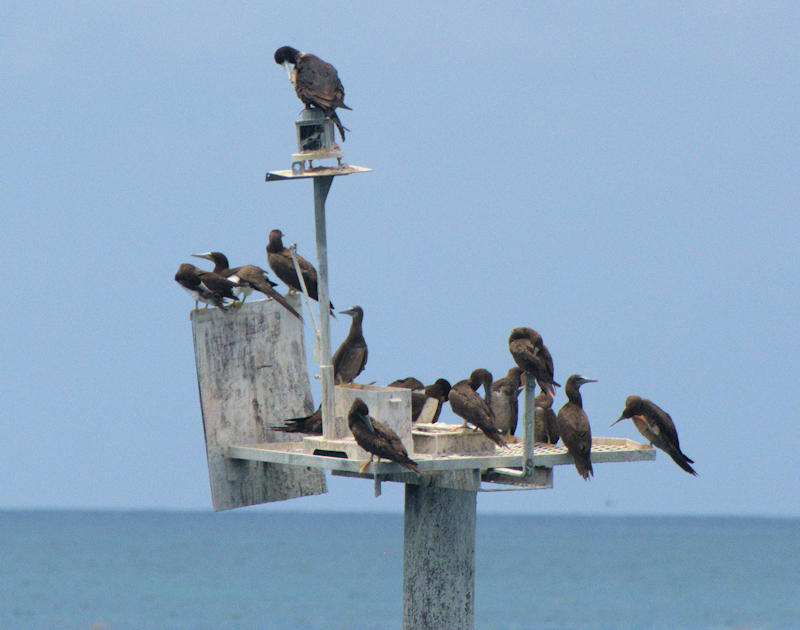
The Windjammer Wreck And Farewell Snorkel, Dry Tortugas
May 18
Note: On July 7 we are still on the hard awaiting parts which will be coming tomorrow or Monday. Friends have lent us a car, which is a much appreciated kindness. Hoping for a splash early next week. Now back to the Tortugas.
Good weather allowed for continued use of the dinghy to explore so, this day, we headed out to the wreck of the Avanti, a three-masted, iron-hulled cargo ship that sank in 1907. When we had visited the site a couple of days before, what was left of the mooring appeared to be adequate for the dinghy, but now we found the lines and floats unreachable under water at a higher tide. Anchoring was not allowed so we decided to take turns while one of us circled with the boat.
The iron hull has rendered the wreck fairly intact but the structure is confused by the mass of corals growing on it. You can see the wreck layout here: https://www.nps.gov/drto/learn/historyculture/images/Windjammer_Guide-front.jpg?maxwidth=650&autorotate=false&quality=78&format=webp

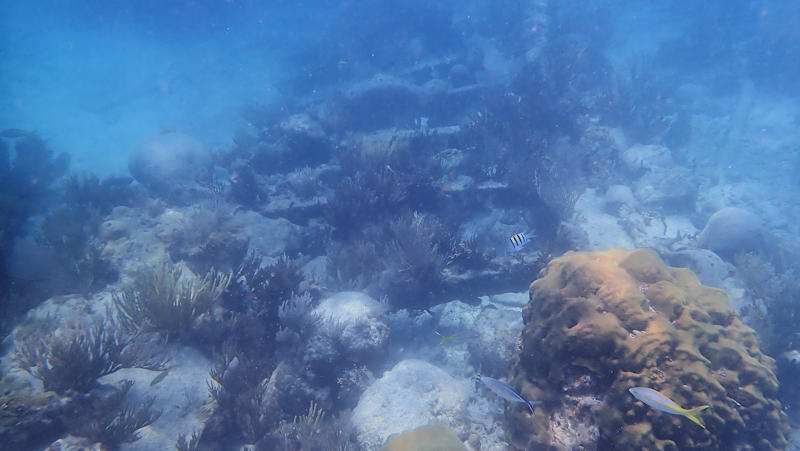
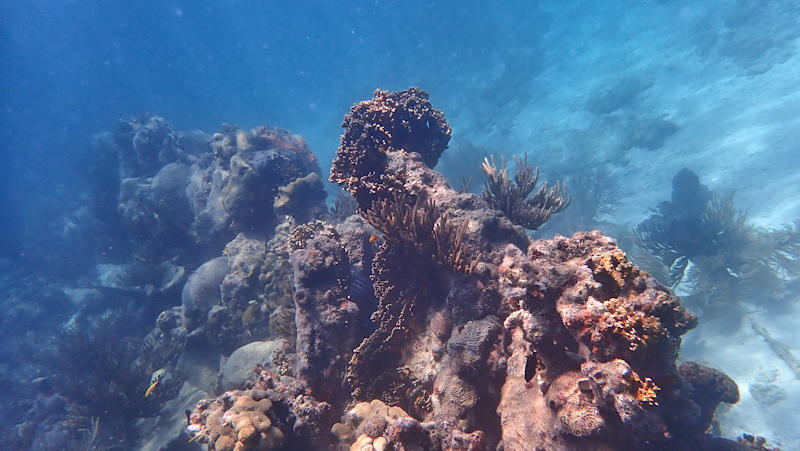
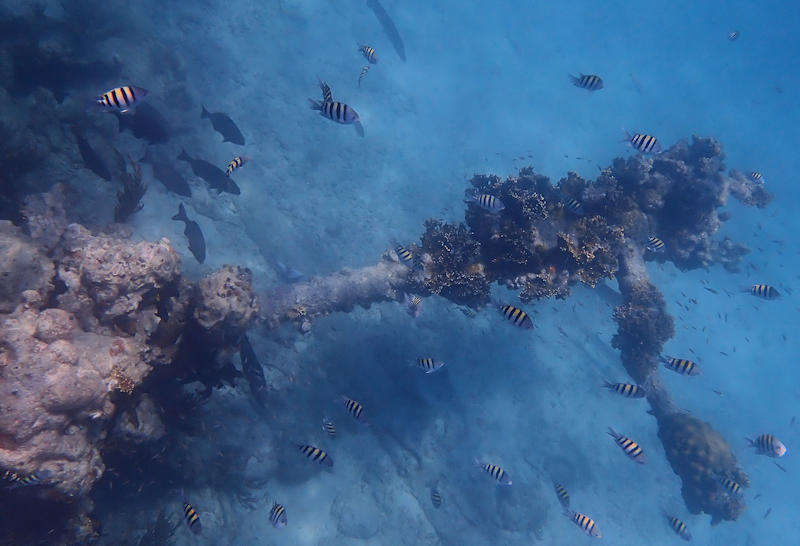
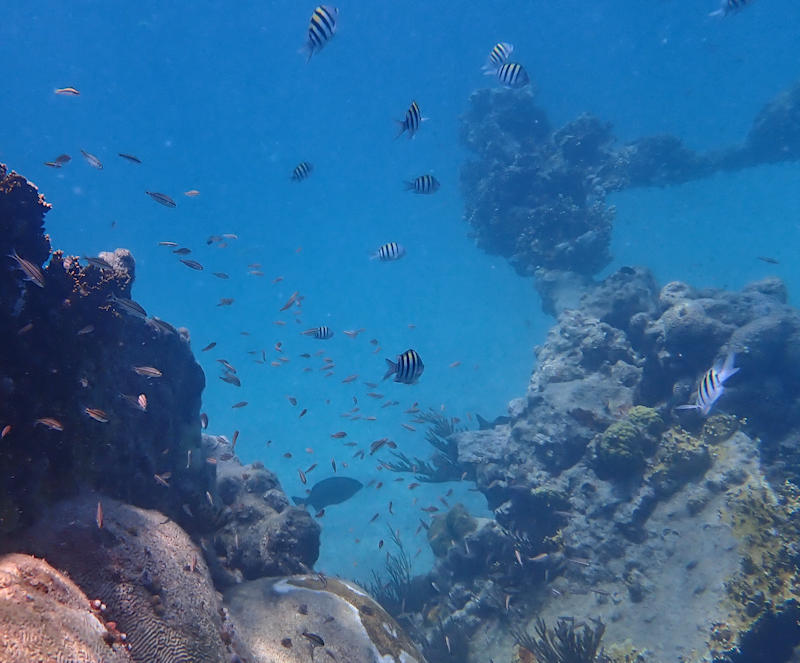
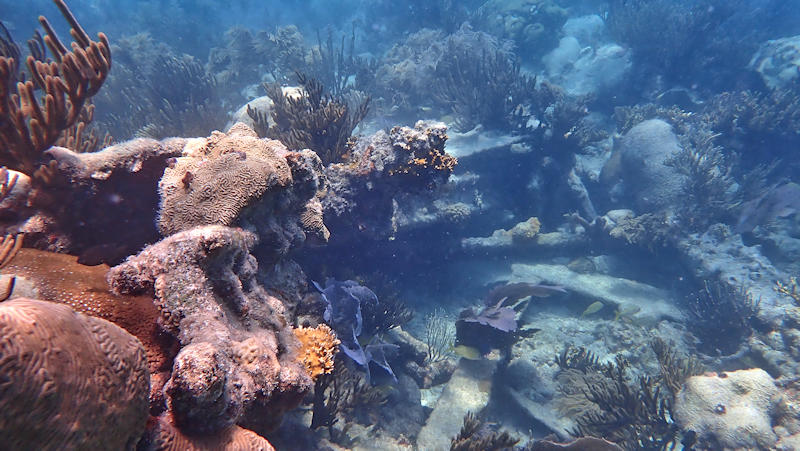



Schools of black striped Sargent Majors inhabited the wreck along with clouds of juvenile grunts and a patrolling Barracuda or two. Unfortunately, this area has been hit hard by coral disease and most of the 100 year old brain corals were dead or sick. Fire Coral and Star Corals, along with gorgonians, still looked healthy.

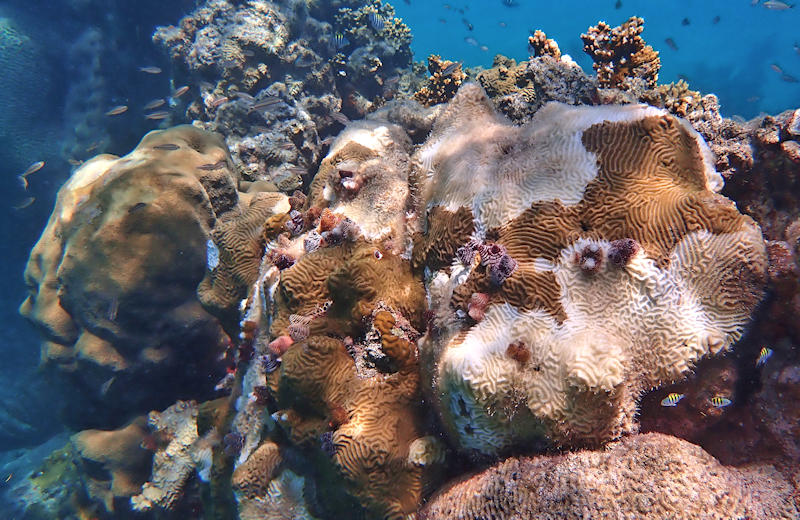
The Fire Coral is the branching species but the branches are curiously short and stubby. I don’t think there is anything wrong with it and this is probably due to environmental factors like currents, which were fairly strong here.
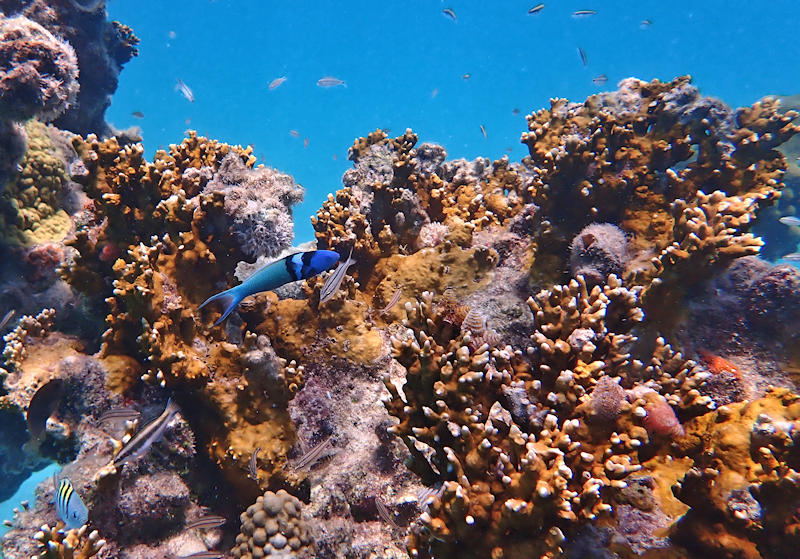
We were snorkeling and the current was strong but I still managed to get down to look at some smaller critters. You can see the tiny polyps lined up on the feathery branches of the hydrozoan, a relative of the corals and jellyfish. Many of them will give you a nasty sting if you run into them. The blue compound Tunicate, on the right, is often mistaken for a coral or sponge but you can see the ring of incurrent openings surrounding a central excurrent one.
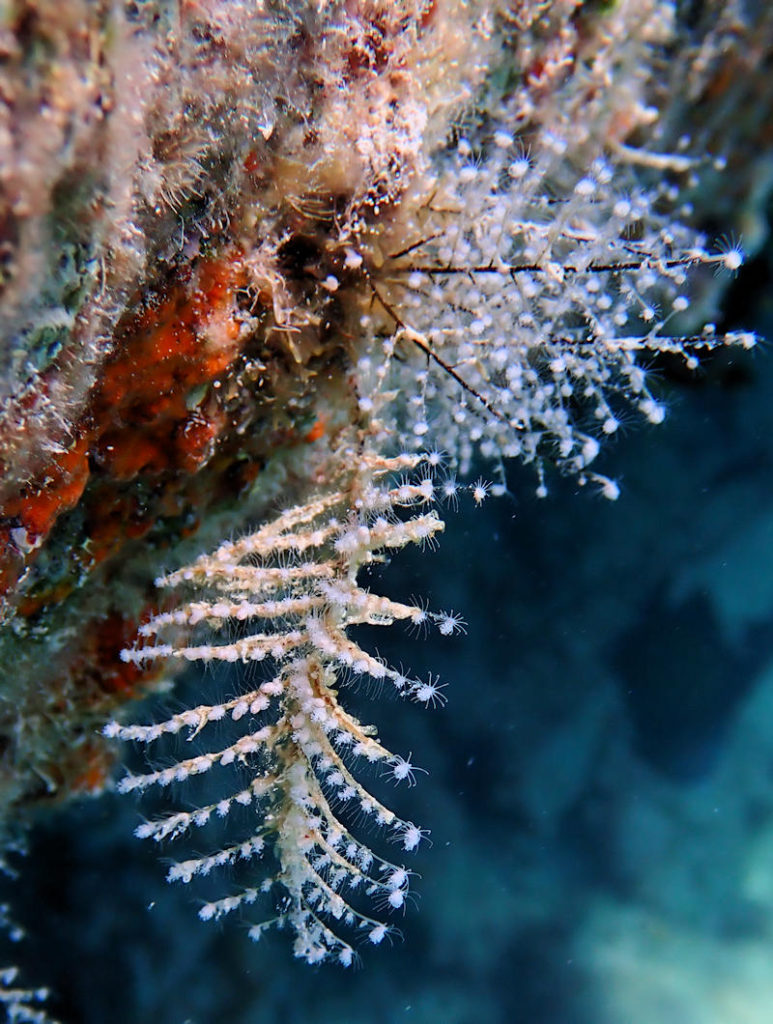

There appeared to be a Porcupinefish race going on in one section of the ship. One was still chasing the other around when I got out to let Bill have a turn.
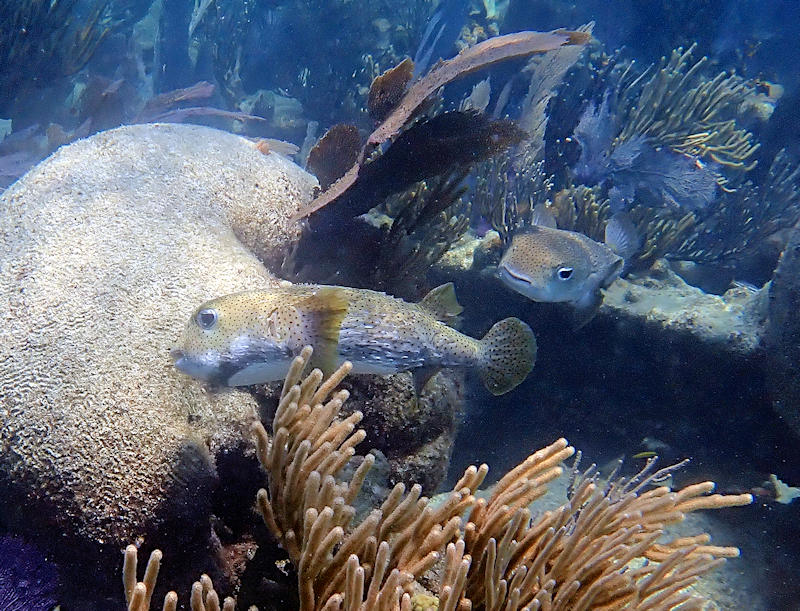
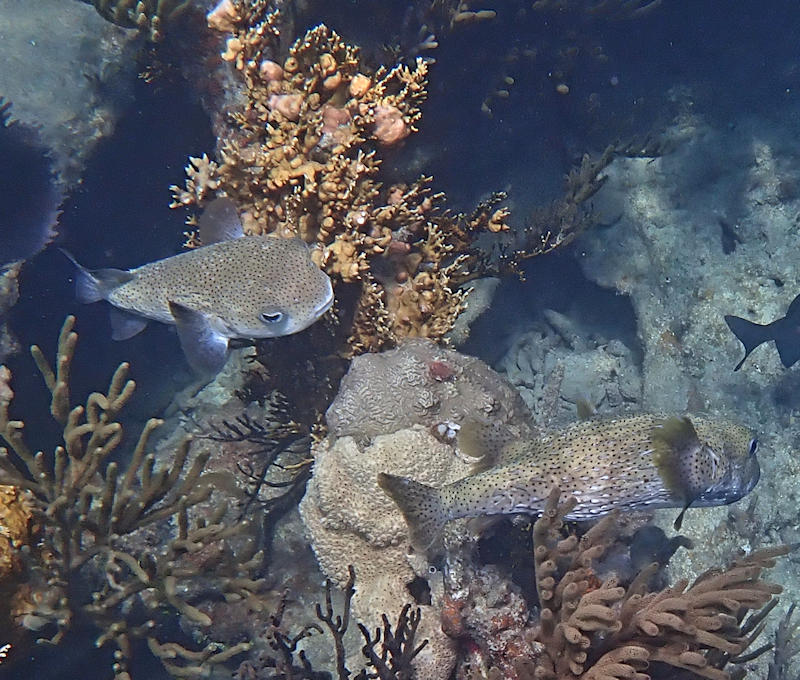
Bill witnessed a faceoff between a Caribbean Reef Shark and a large Goliath Grouper. As the shark approached the wreck, the grouper came out to meet it. Bill said they got nose to nose then the shark turned and swam away. The grouper was probably in the range of 400 pounds (about half the maximum size of this species). Goliath Groupers have been protected since 1990 and the population appears to be recovering to the point where limited fishing may be resumed. Large individuals are only good for trophies, since they accumulate dangerous amounts of mercury in their flesh.
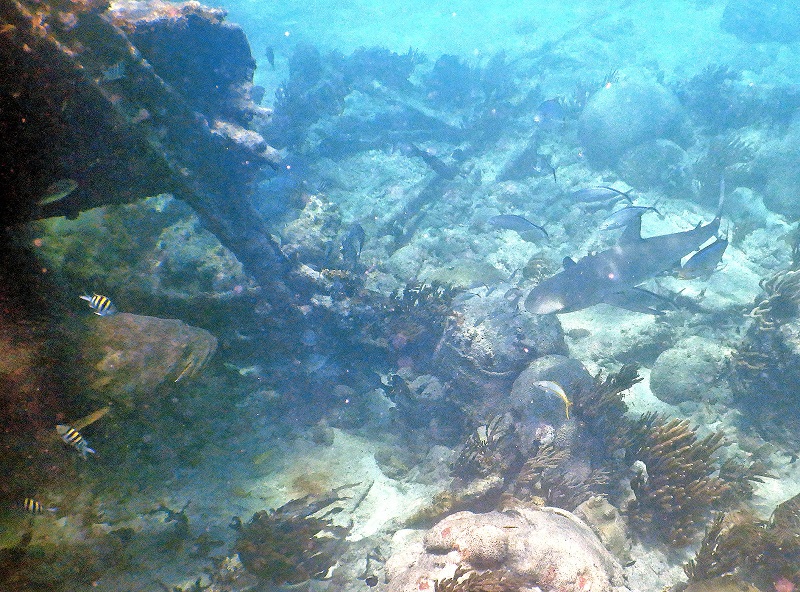
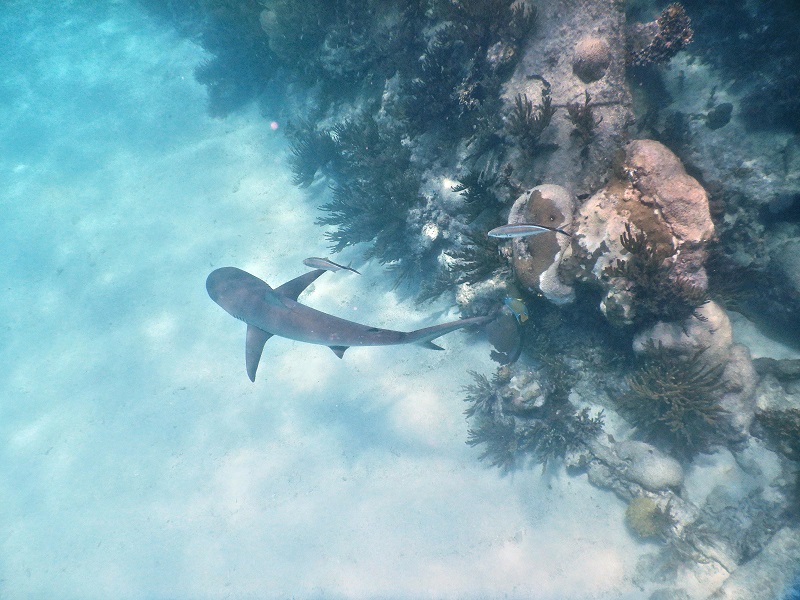
The wreck dive was shorter than I would have liked so, when we got back, I snorkeled on some coral heads near the fort. Small Star Corals and Knobby Brain Corals arose here and there in the seagrass along with Seafans and other gorgonians. It was really good to see some healthy brains.
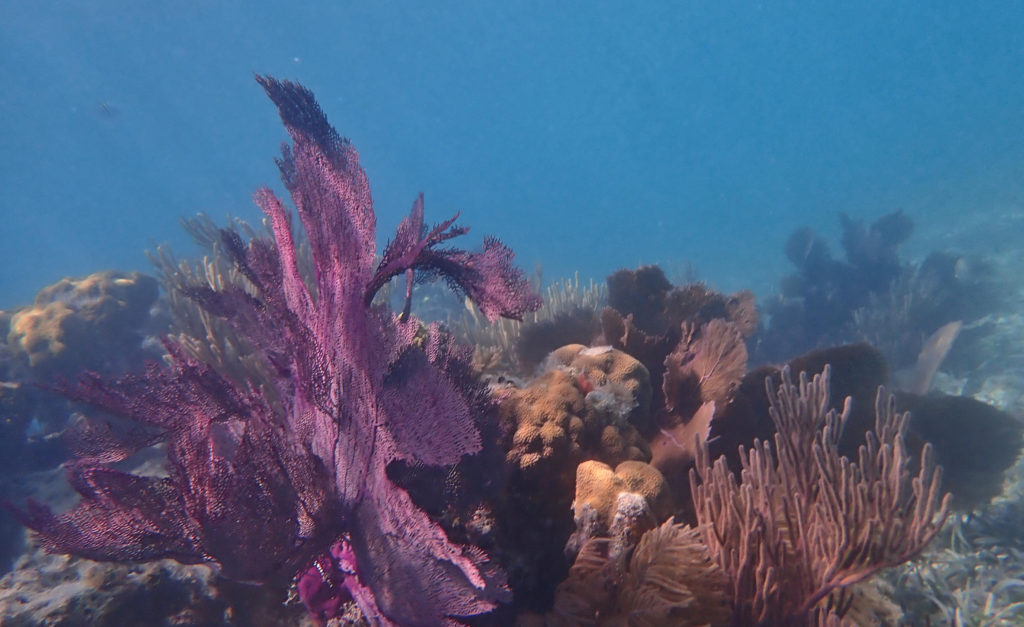
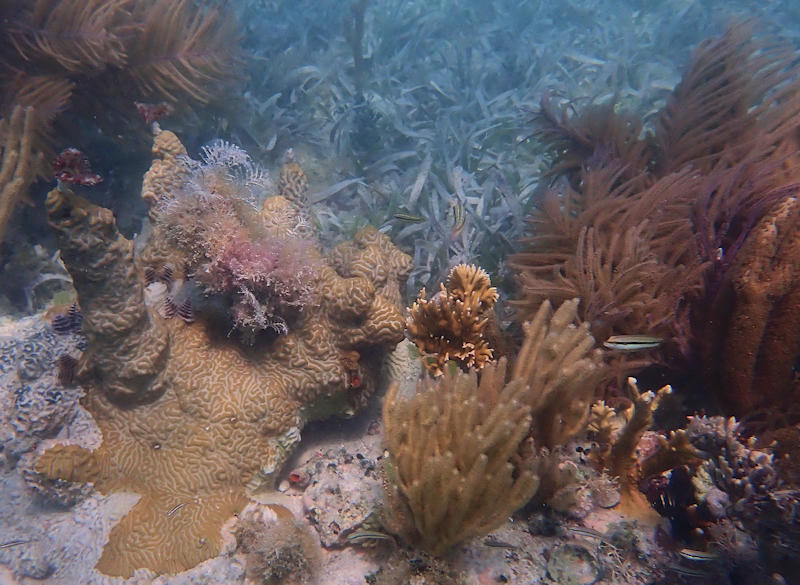

Christmas Tree Worms are one of my favorites, and they are quite large and plentiful here. I have zillions of pictures of these. I love the varied colors and patterns on the branchae (gills).

I can spend hours looking at just one small coral head. The longer I look the more I see. Saddled Blennies are common everywhere in the Keys and Bahamas, but some in the Dry Tortugas are red.
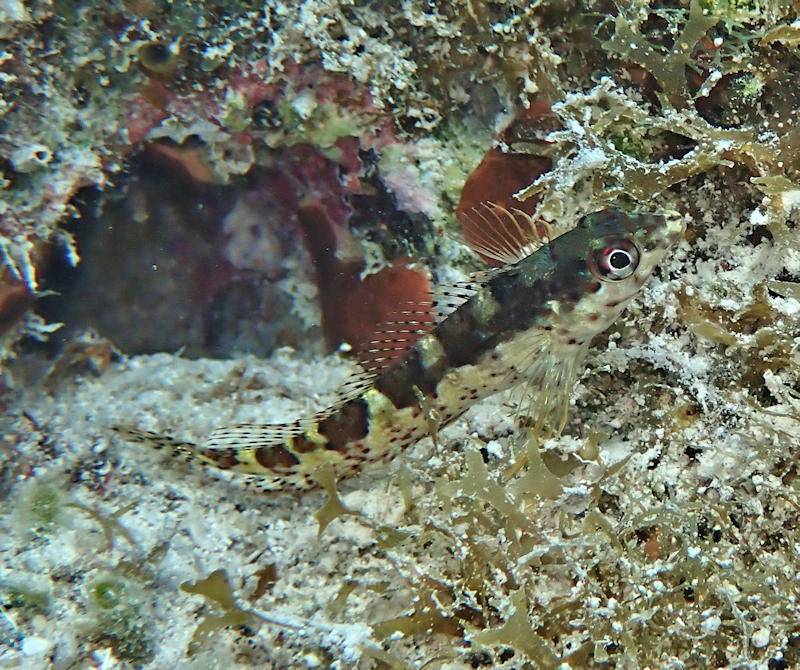
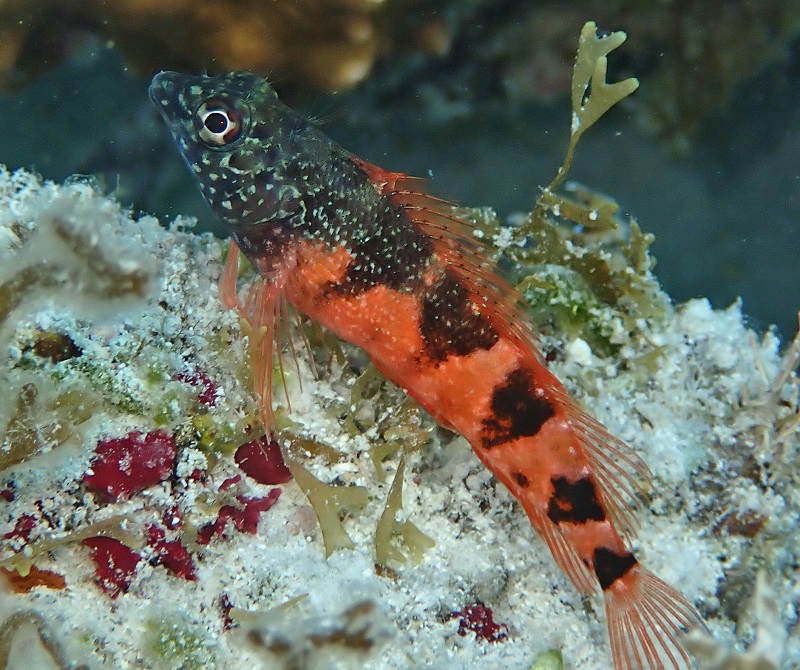
Seaweed Blennies were also on this coral head. This one was tiny. Its head was about 1/2 inch. Under the rock I found this juvenile High Hat.
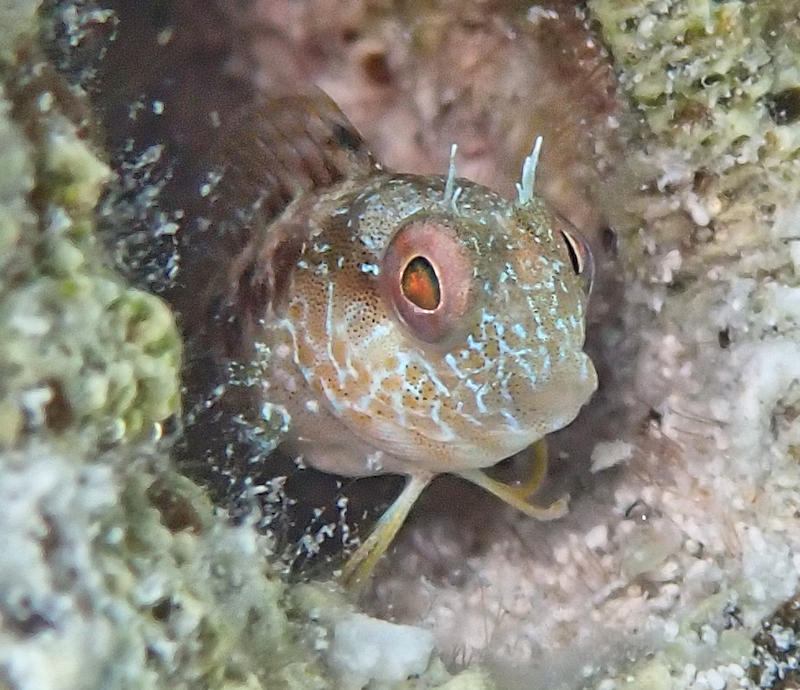
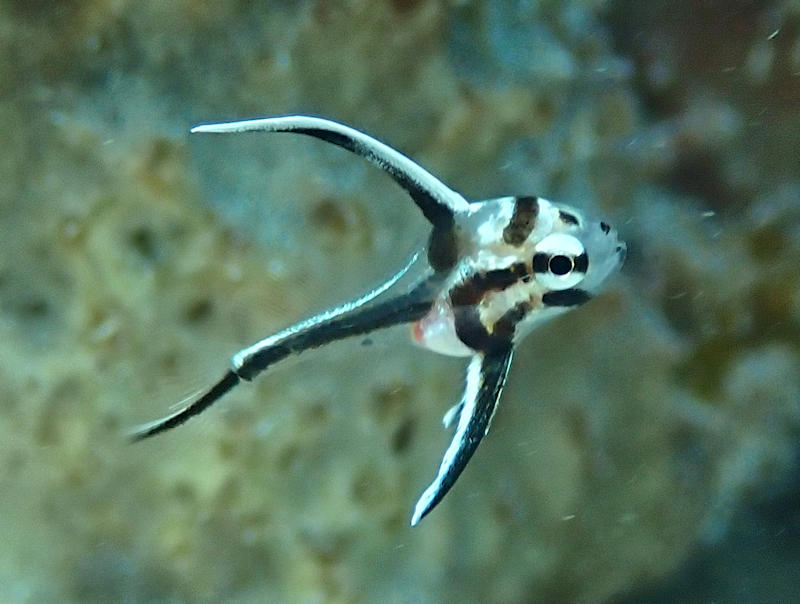
I was meaning to take a picture of this West Indian Sea Egg, a type of Sea Urchin but kept getting photobombed by fish swimming around in the hole. Sea urchins are Echinoderms and are related to starfish. There is even a small blue Porcelain Crab just to the bottom right of the sea urchin that I didn’t see until I looked at the picture. The long black spines are those of the Long Spined Sea Urchin (Diadema antillarum).
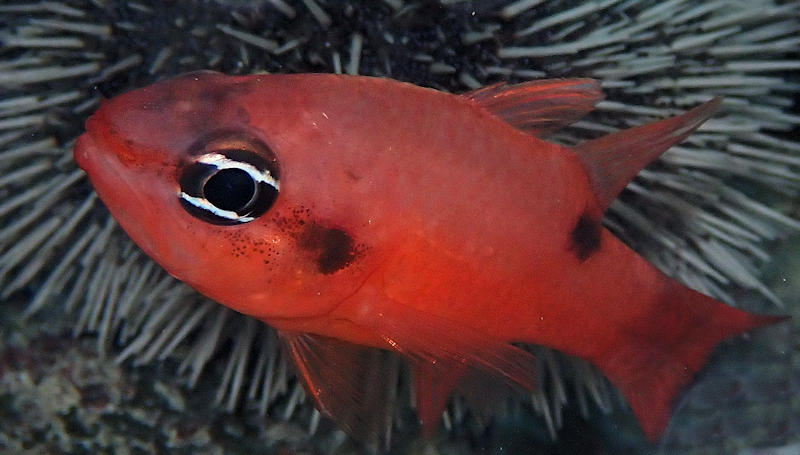
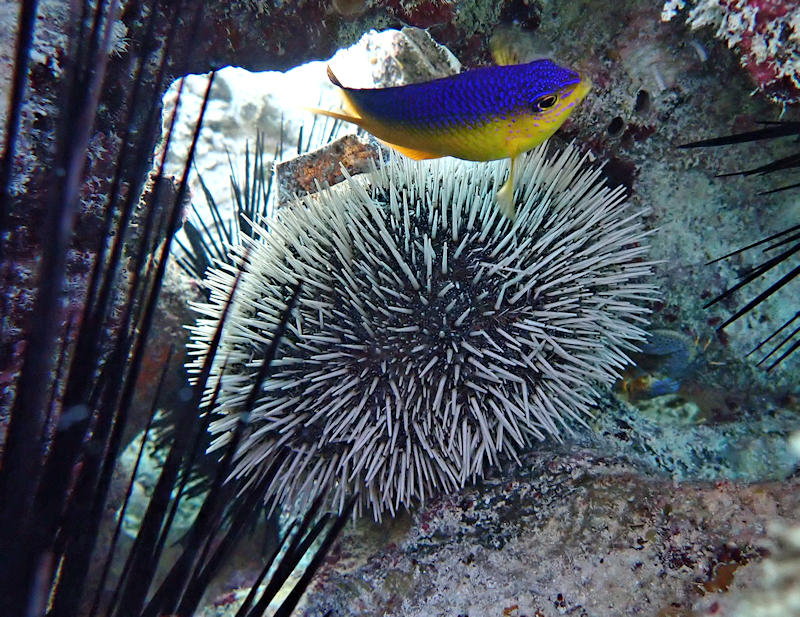
Nearby were some anemones and corallimorphs. Corallimorphs are similar in structure to both anemones and corals. They do not have a skeleton like corals. In the right-hand picture the Featherduster Worm (red and white stripes) is right under a Warty Corallimorph that is closed up. Above it are open ones with their forked tentacles expanded.

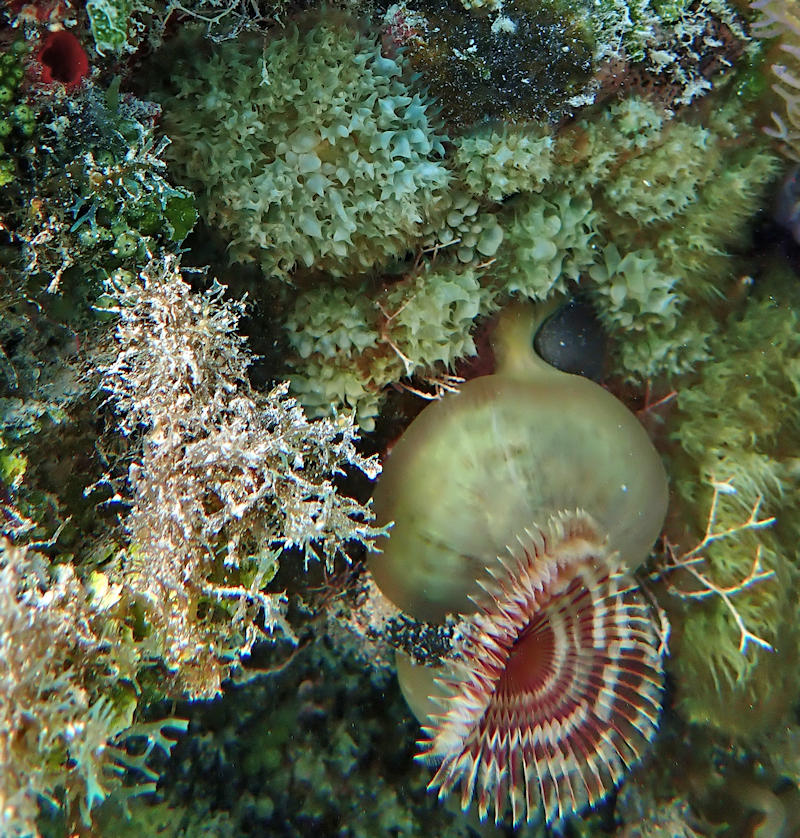
This Red Grouper posed for a picture. At this point I did not know this was going to be my last dive here.

Beach Dive At Loggerhead Key, Dry Tortugas
May 17
Having had little luck anchoring and mooring the big boat, we decided to see if the dinghy would give us more flexibility. So we set out for Loggerhead Key, named for the abundance of Sea Turtles that use the island for nesting, and that once served as food for the inhabitants of the fort. Loggerhead Key is the largest island in the Dry Tortugas and has a lighthouse built in 1857. It was also the site of a Marine Biological Laboratory sponsored by the Carnegie Research Institute from 1904-1939 which did some of the first investigations of mangrove and coral reef habitats (https://www.nps.gov/drto/planyourvisit/explore-loggerhead-key.htm).
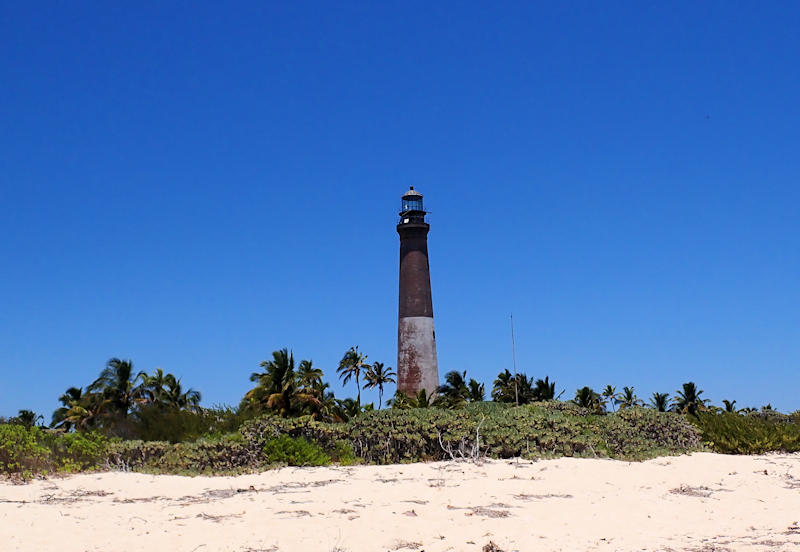
After beaching the dinghy, we started snorkeling northwest along the shoreline and soon found a small patch reef with mostly healthy coral.

At first we saw sea grass and a few Knobby Brain Corals here and there. The Knobby Brain Corals here are usually covered with some of the biggest and prettiest Christmas Tree Worms I have ever seen.
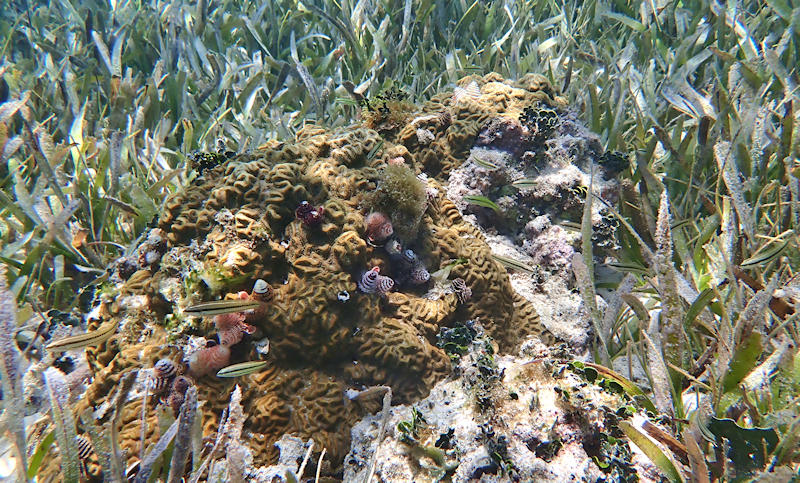
Then the seagrass opened up and we came upon some coral heads. I was happy to see some good size colonies of Star Corals and some healthy Brain Corals along with Fire Coral and Mustard Coral. Sargent Majors, the small fish with the bold vertical black stripes, grazed on plankton above the coral heads. The Mustard Coral in the photo has a white Christmas Tree Worm at the top and a small colony of Finger Coral growing on the left side. The Fire Coral is probably a hybrid of the Blade and Branching species. Numerous fish, such as juvenile Sargent Majors, Wrasses, Cocoa Damsel (the blue and yellow one) find shelter among the Fire Coral tentacles that can give you a nasty sting if you bump into it.
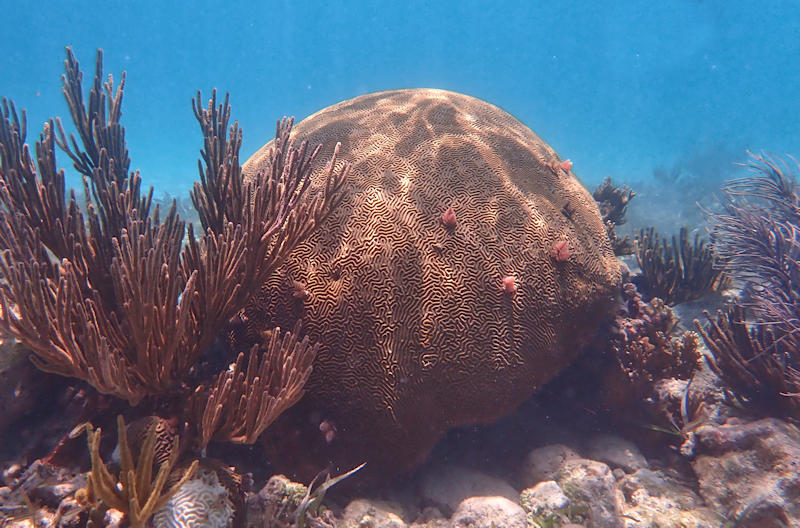
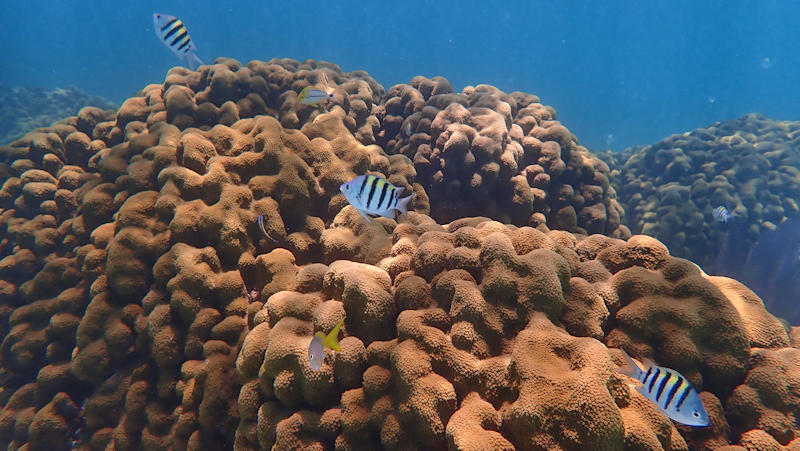
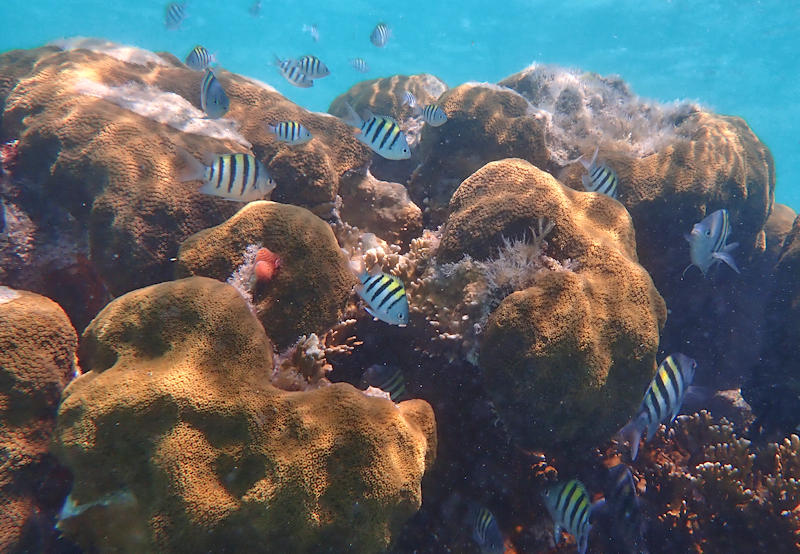
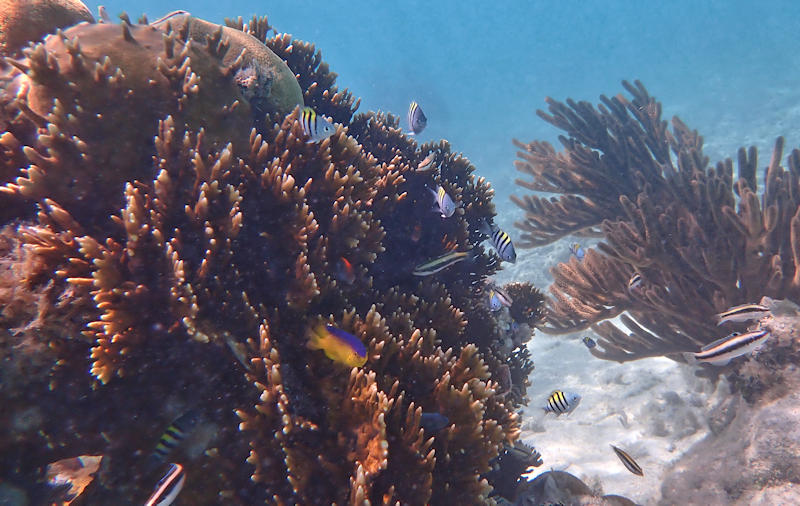

Barry stood guard near one of the Lobed Star Coral heads.

Smaller fish can be seen if you back up and look at a coral head for a while. This Seaweed Blenny is much darker than most. The Brain Coral in that photo has some of the polyps expanded and you can see the tentacles.
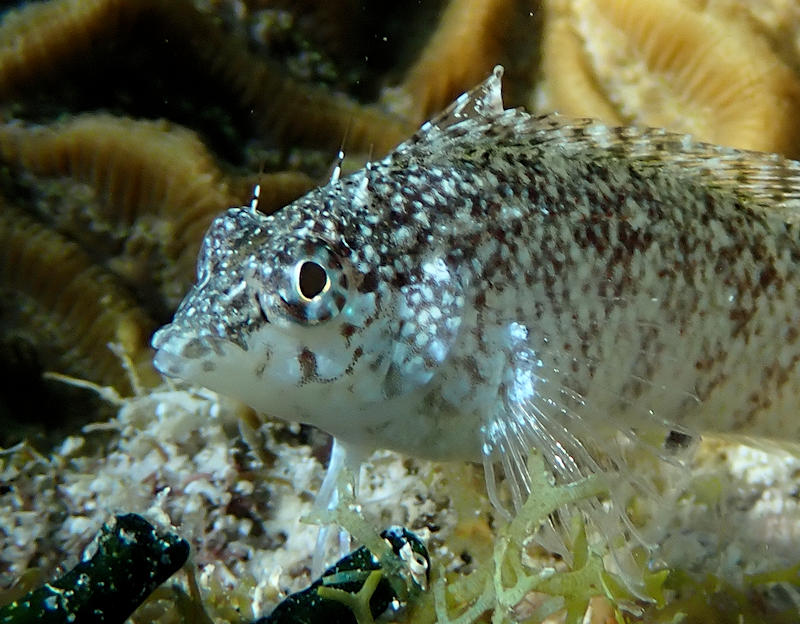

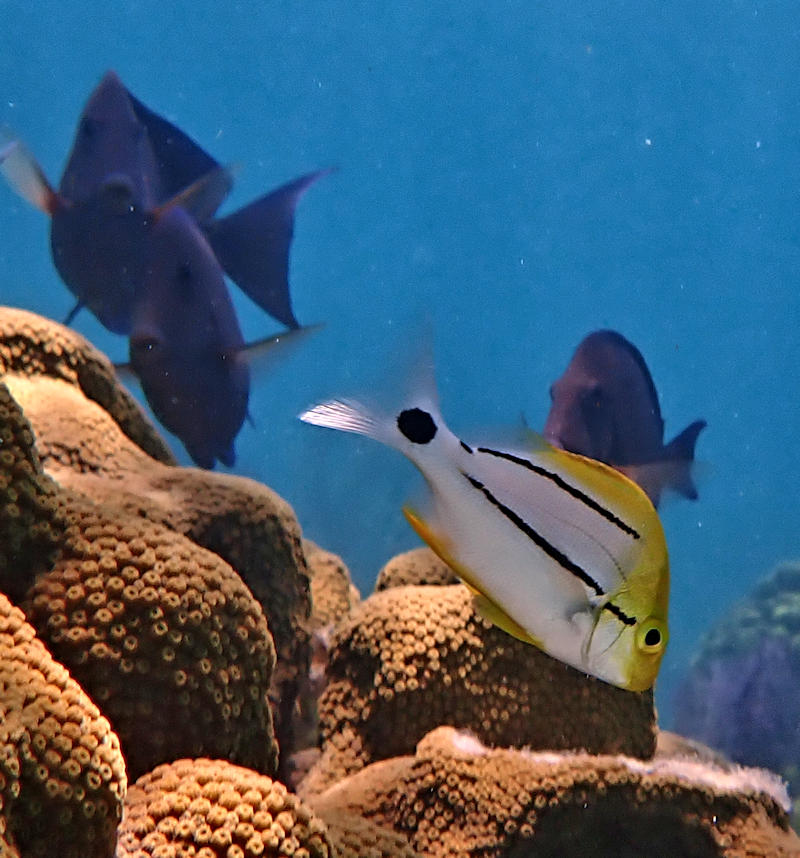

On this dive I spotted a couple of Carpet Anemones just about camouflaged in the sand and a Cocoa Damselfish photobombed my picture of a Giant Anemone. The compound tunicates are composed of several individuals that arrange their incurrent siphons around a common large excurrent siphon

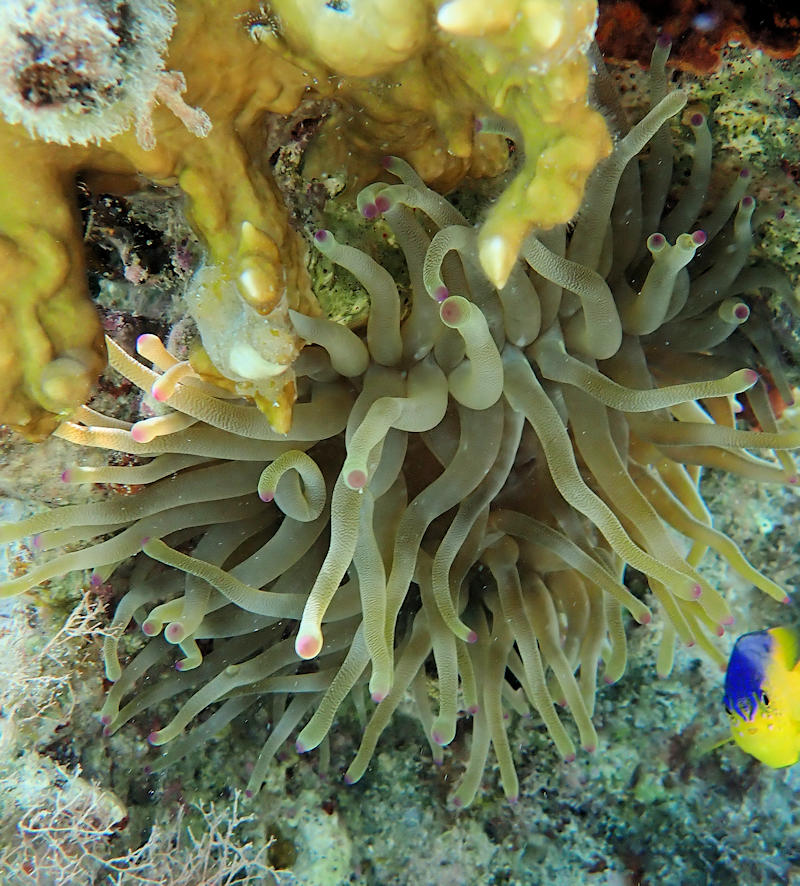
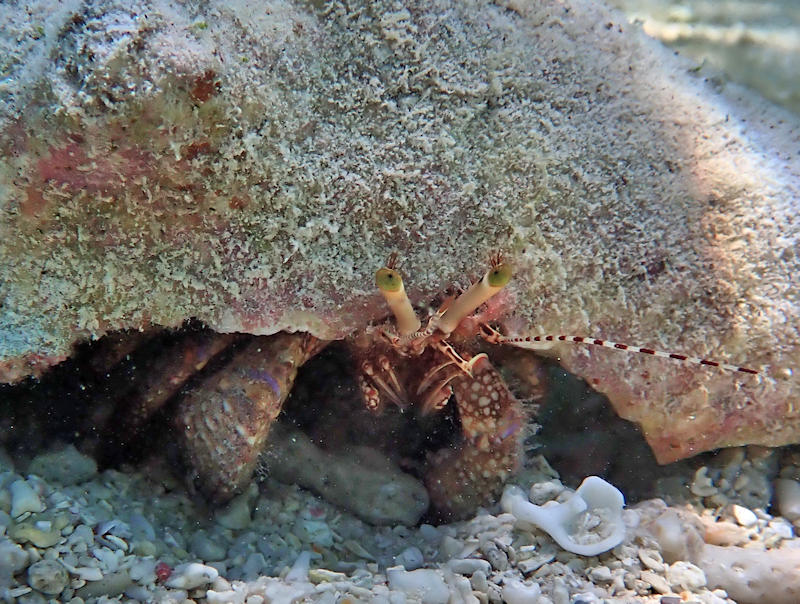


Clear, warm water and lots of critters to watch–what more can you want!
On The Hard
June 27
Right now we are in for our planned haul-out in North Carolina to get a badly needed bottom paint job and some minor maintenance done before we continue north. Even this “planned” job had its last minute changes. We sailed into Oriental, NC for a few days respite before our scheduled haul out on the 28th at Bridgeton, NC (near New Bern). Oriental is kind of a second home to us and friends met us at the town docks after which we went to dinner. There was a get together the next day and I learned how to play pickleball. When I came home from pickleball, Bill informed me that he had just learned that, at the Bridgeton boatyard, we could not live on the boat while on the hard, and there were no available hotel rooms for that week because of the coming holiday. While we were considering what we could do, he received a call from Bock Marine telling him that they could take us right away. We had been to Bock many times, and it was really our first choice, but it had appeared that they were very busy and could not give us a firm date. So, after a peaceful night tied up to a friend’s dock in Browns Creek, we headed back south on the ICW and hauled out last Wednesday.
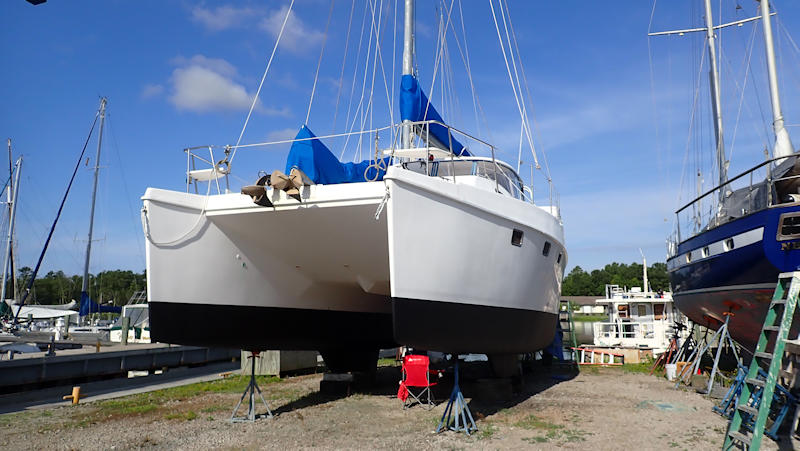
The new bottom paint is on except for a small area on the keel that needs some rebuilding. When taking the props off to clean and re-lubricate them, we found some worn parts (after 20 years of use) so now we are waiting for parts to come in and that will determine when we will get back in the water.
Living on the hard is generally not my idea of a good time. Boatyards are dirty and noisy and getting on and off the boat requires climbing a ladder. We had a pretty grueling trip from Florida. There were some high points at Cumberland Island and Georgetown, SC but in between we pressed through headwinds and storms and horseflies (even a waterspout sighting). The heat was oppressive even for me. I don’t know if it is old age or CLODLife has made us soft, but Bill and I both perceive that this cruising is more exhausting than we remember. After that, boatyard life doesn’t seem so bad. We have a nice view and some friends in the marina. The weather has been hot but cools off at night to be quite comfortable.

When I'm a CLOD, no boatyard for me No climbing the ladder when I have to pee I'm a CLOD, I'm a CLOD I'm a Cruiser Living On Dirt!
And here’s a couple of flowers for my botany friends.

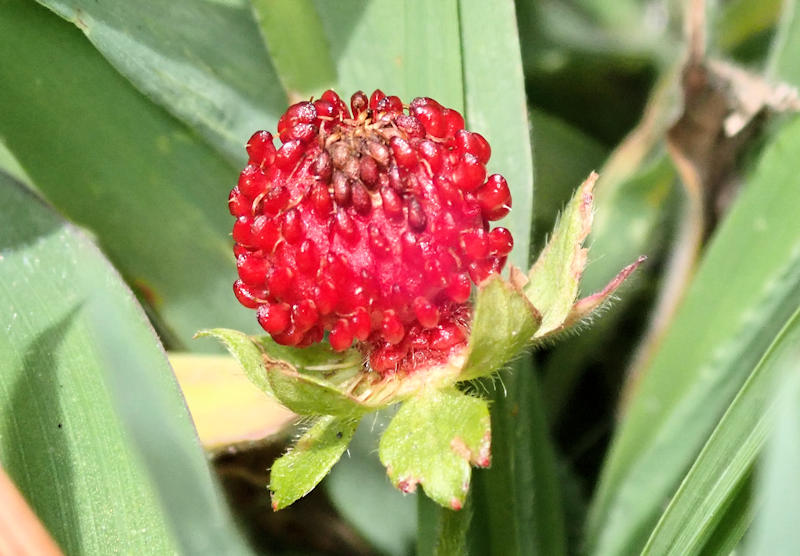
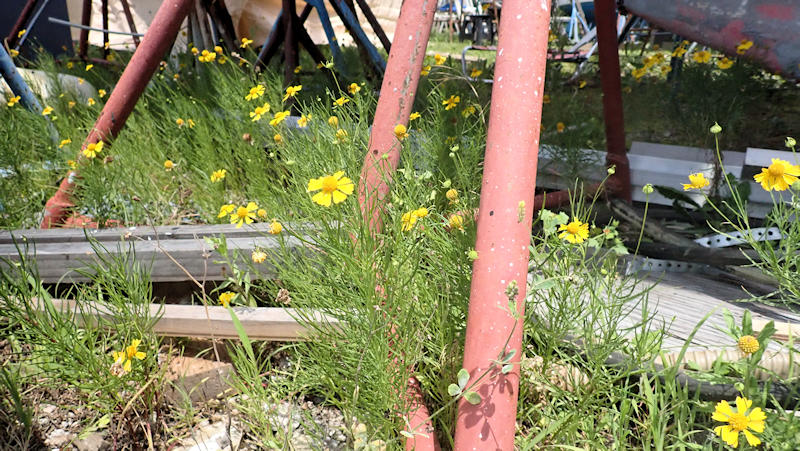
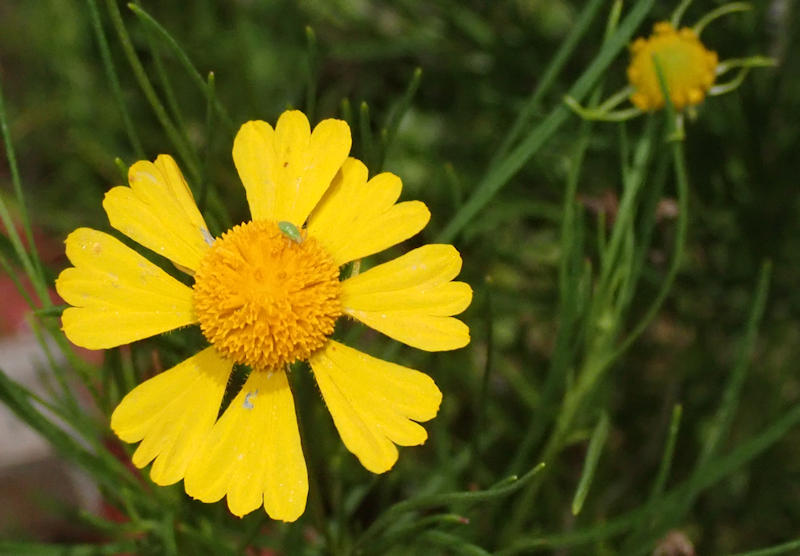
Now back to the Dry Tortugas!
Diving, Diving Everywhere But Nary An Anchor Must Drop
May 16
Having been unsuccessful with finding anchoring the previous day, we now looked up the mooring ball positions and decided to try for an interesting 3-masted wreck. When we found the wreck’s position there was only a few floats in a configuration we weren’t going to trust the big boat to so we wandered around for a good part of the rest of the day trying to get a sense of what was available—not much. Boat and diving access is strictly restricted to preserve the reefs and you cannot anchor just anywhere. Mooring balls that were supposed to be positioned around the anchorage were not there. It is difficult to maintain these structures with the limited staffing and money the park has. We finally found a decent mooring ball at a reef called The Off Ramp and dove with the hookah there.
The water was clear!

This reef was reported to have healthy coral and some Staghorn Coral. But at first, all I saw were the long ago picked bones of the massive Staghorn Coral Colonies that used to be there 30 or so years ago.
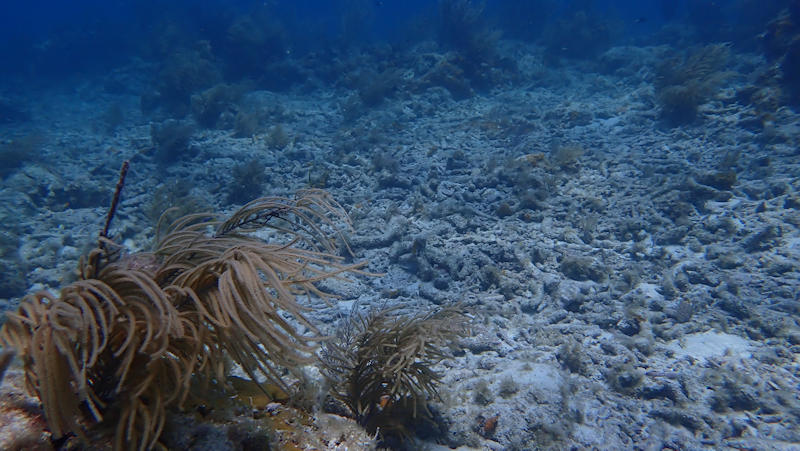
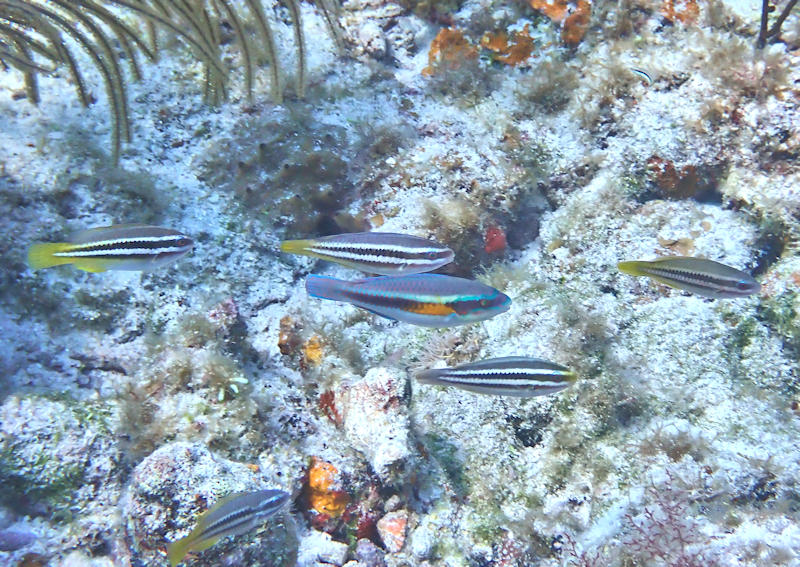
There were small to moderate sized colonies of hard corals but much of the coverage was gorgonians (sea whips and sea fans) and zoanthids.
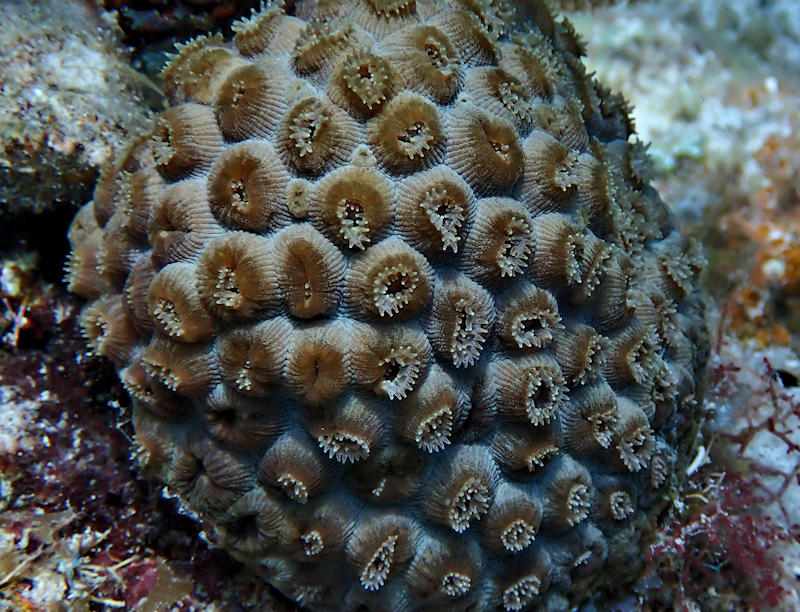
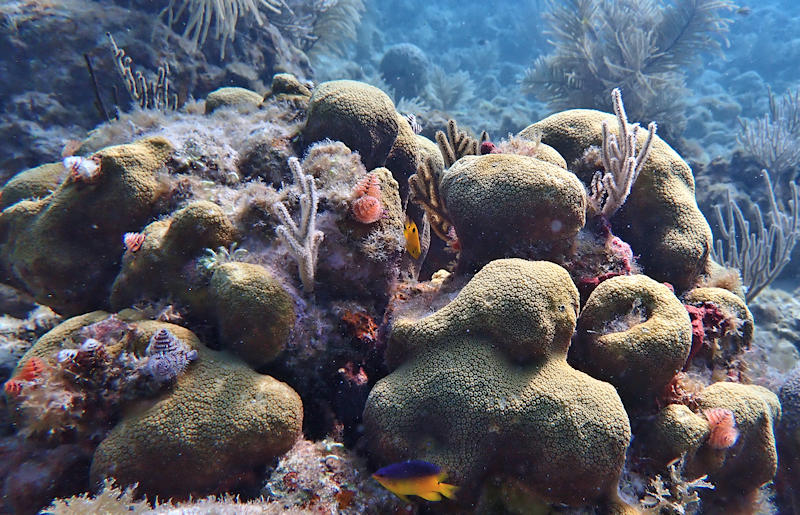
Unfortunately there was also evidence of disease in this most pristine place. Stony Coral Tissue Loss Disease (SCTLD) was detected in the Dry Tortugas in May of 2021. The cause is not yet known but there is some indication that it might be bacterial. I have noticed that this disease particularly attacks the slow growing brain corals. In the Keys there are few brain corals left.
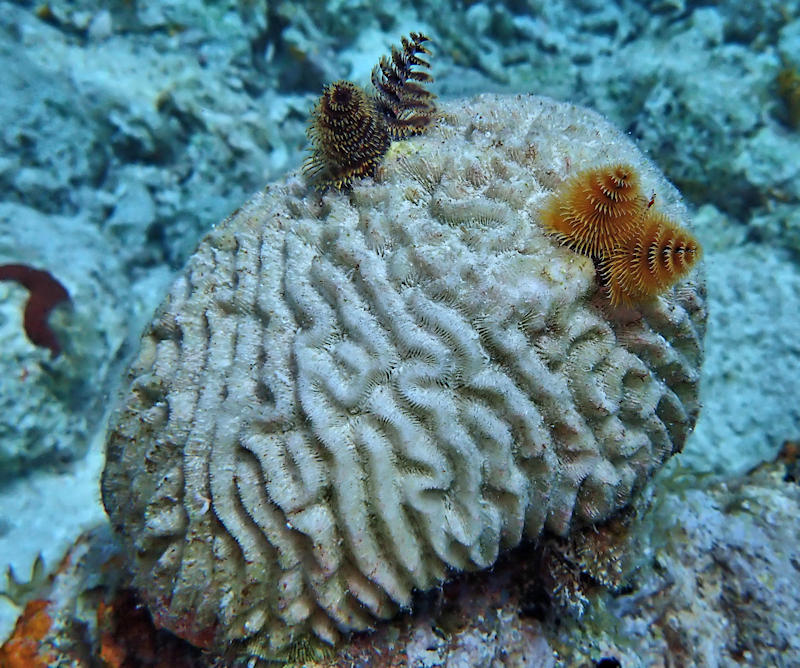
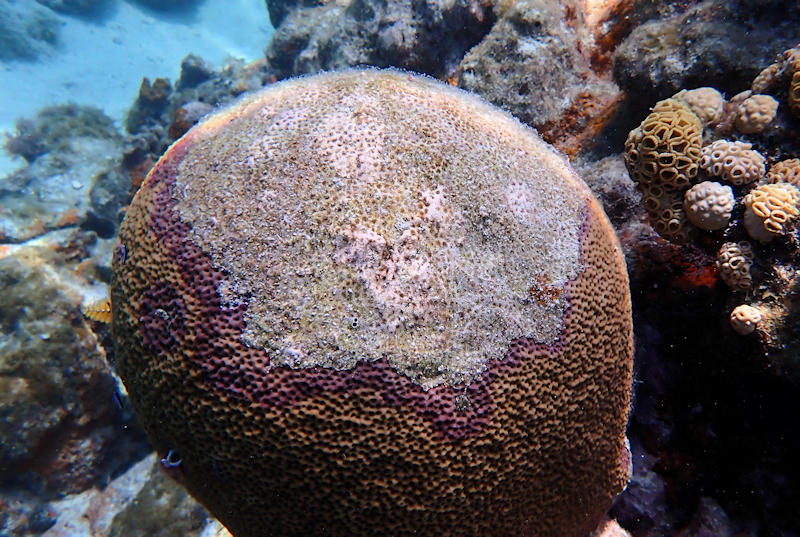
Zoanthids cover large areas of the reef where there is no live coral growing. Encrusting Zoanthid polyps are stuck together in a thick mat and have no hard skeleton. They look like small anemones with tentacles around the periphery of the oral disk. In the middle picture, you can see the open polyps along with the tightly closed ones. This species ranges in color from white to brown.
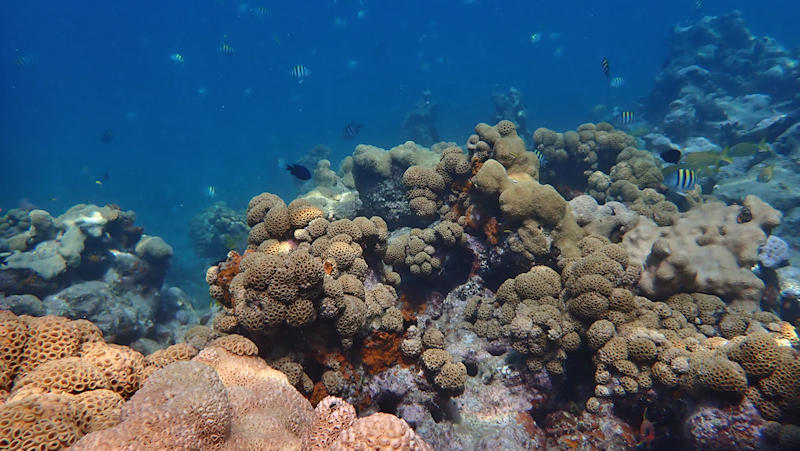
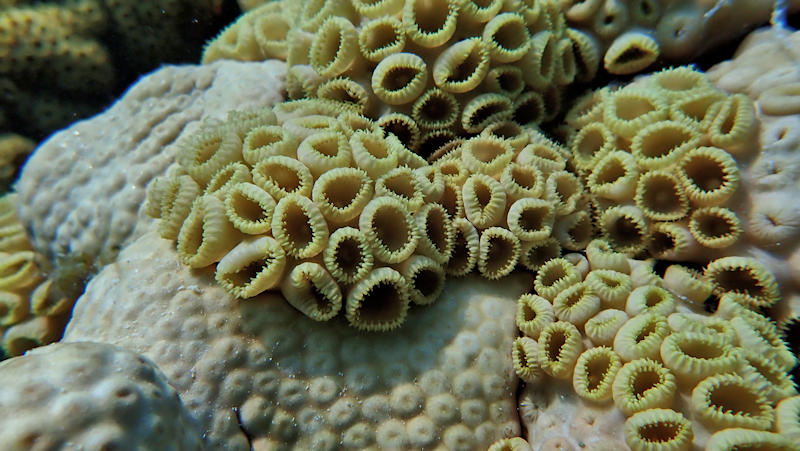
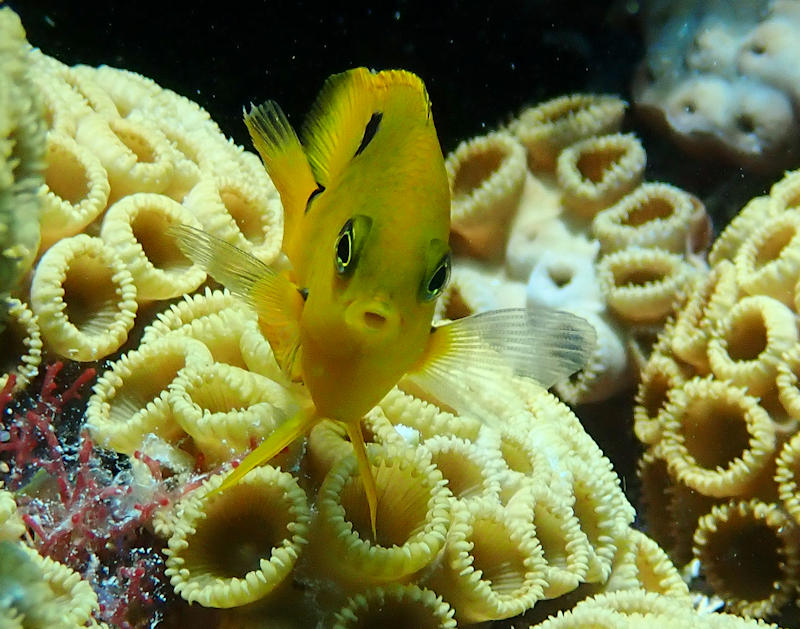
Small fish make their homes in the various nooks and crannies. The Seaweed Blenny and Saddled Blenny are the most common. The reddish coloration of the Saddled Blenny is particular to the Dry Tortugas. The Reef Croaker was a first for both Bill and me.

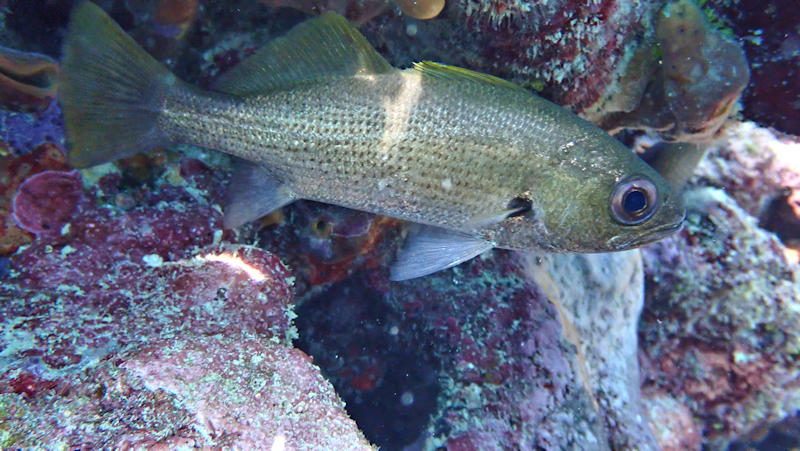
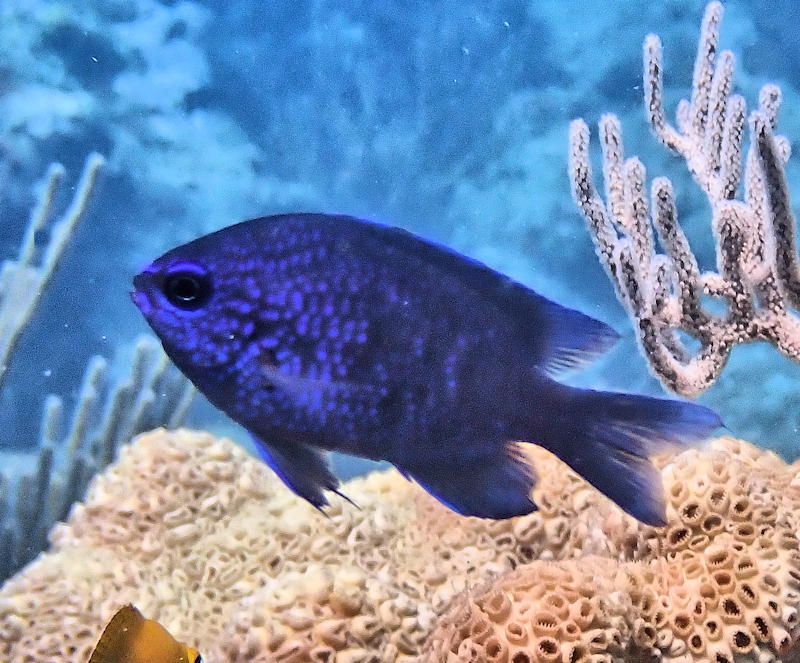
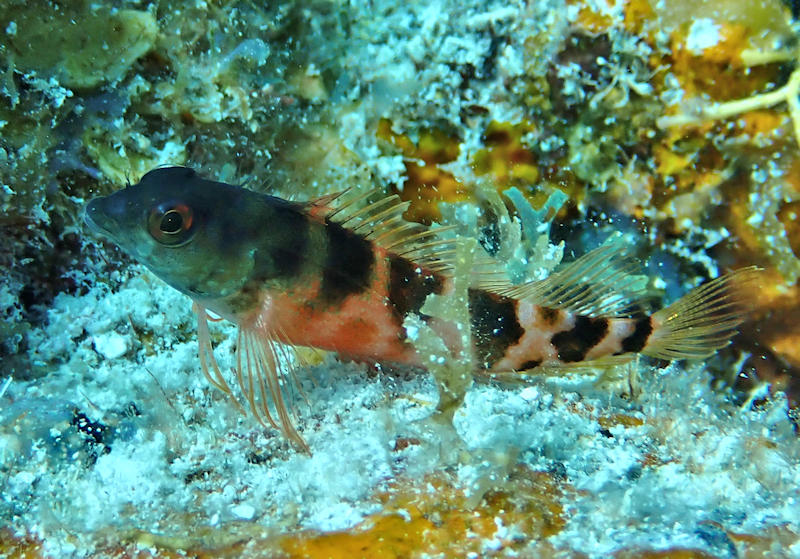
Saddled Blenny (Malacoctenus triangulatus)
This Blue Angelfish (Holacantus bermudensis) was a large individual (probably close to a foot and a half) with a big scar on its right side. Nearby was a Townsends Angelfish, which is a hybrid between the Blue and the Queen Angelfish. The Red Grouper is a popular food fish but it is protected here.
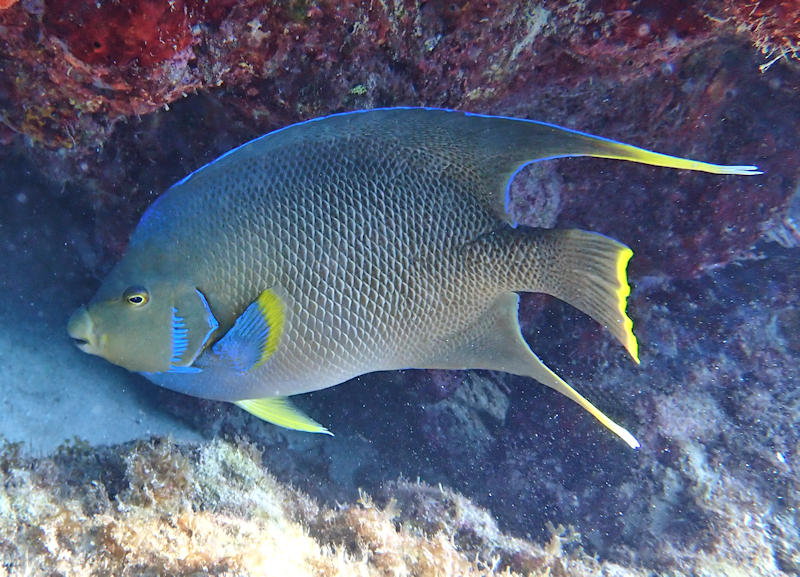

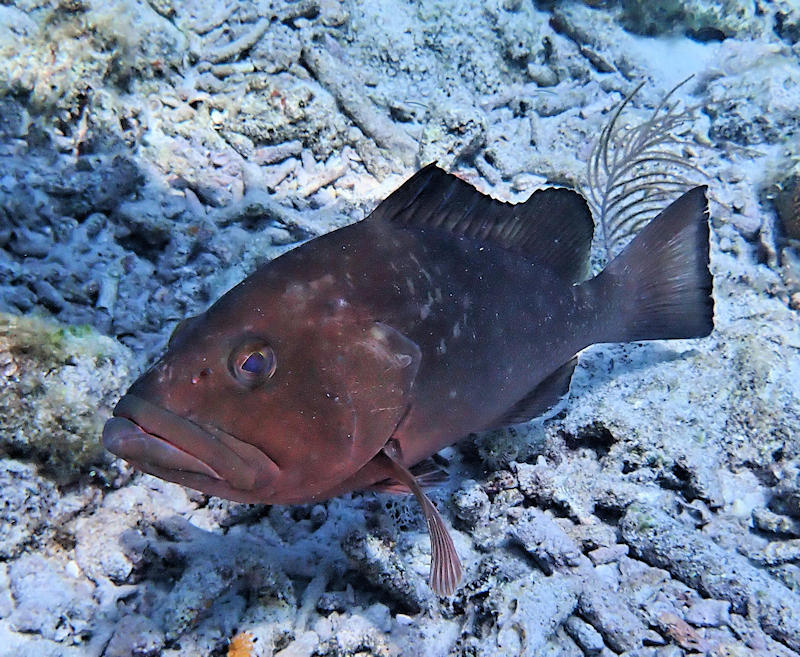
Algae or sponges, two completely different forms of life, can be mistaken for each other. I find their myriad shapes, textures and colors fascinating. There was also an encrusting mystery that I am thinking is a coralline alga.

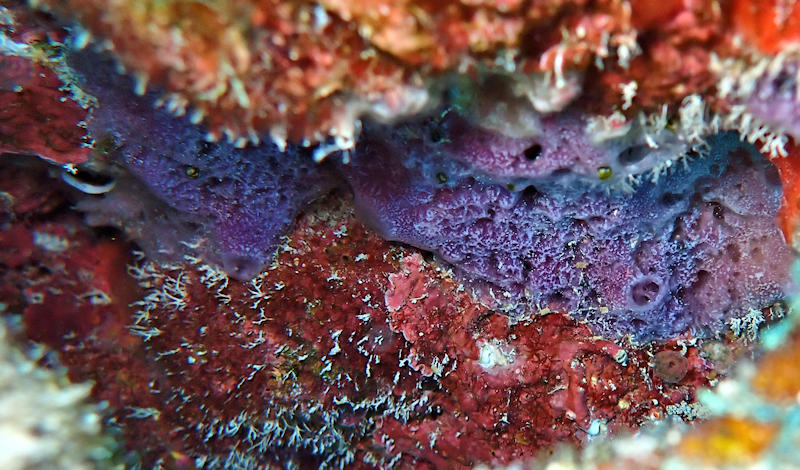



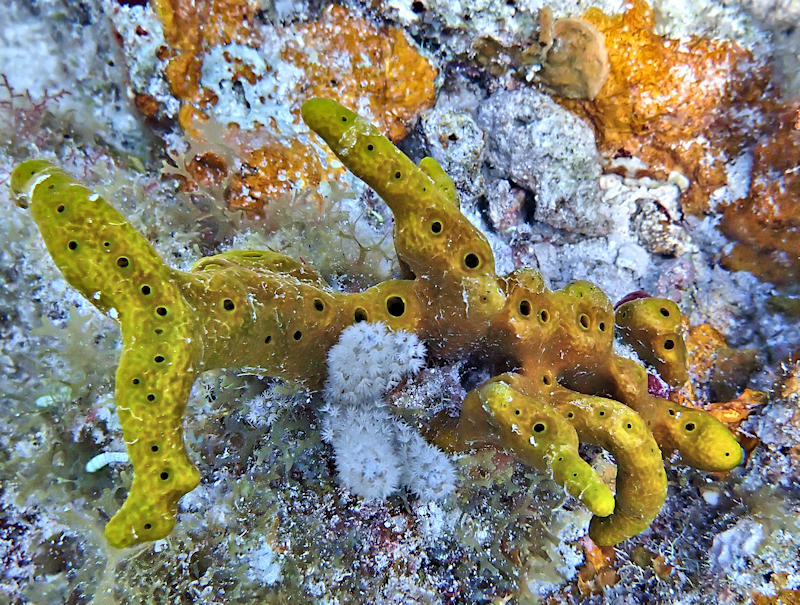

Tunicates can either be solitary, like the group of four on the left, or compound like the ones on the right. The larval stage has a notochord which puts them in the same Phylum, Chordata, as we are.
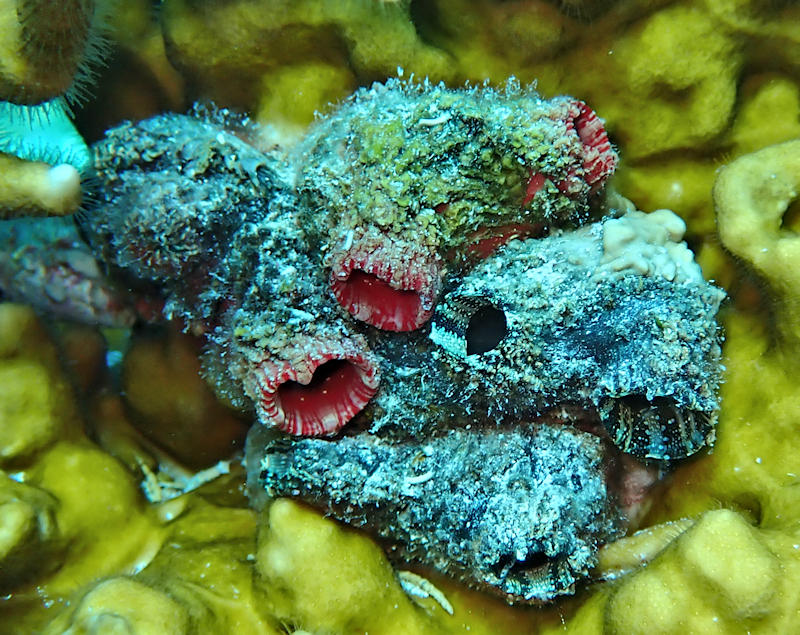
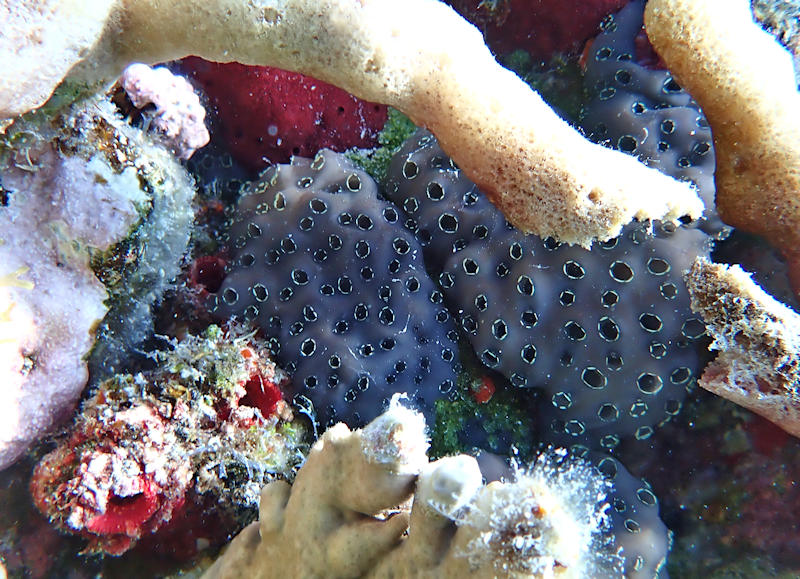
Using the hookah, I can spend quite a bit of time looking under rocks and in small caves and crevasses. I came face to face with a Spiny Lobster. Lobsters seem to know when they are protected and will come out to greet you. The Branching Anemone will give you a good sting if you touch it. Lettuce Slugs eat algae, saving some of the chloroplasts in its tissues where they continue making food for the slug. And then there are the worms! Some of them are hard to photograph since any movement is detected causing the worm to retract back into its tube. The red spots on the Red-Spotted Horseshoe Worm are likely eye spots.

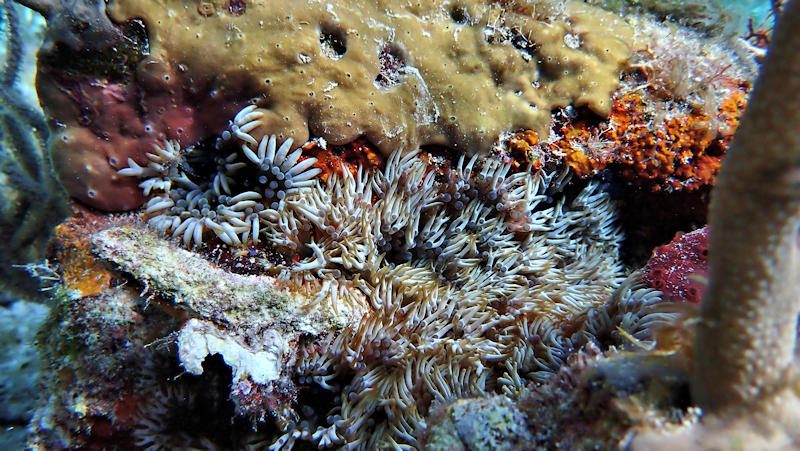

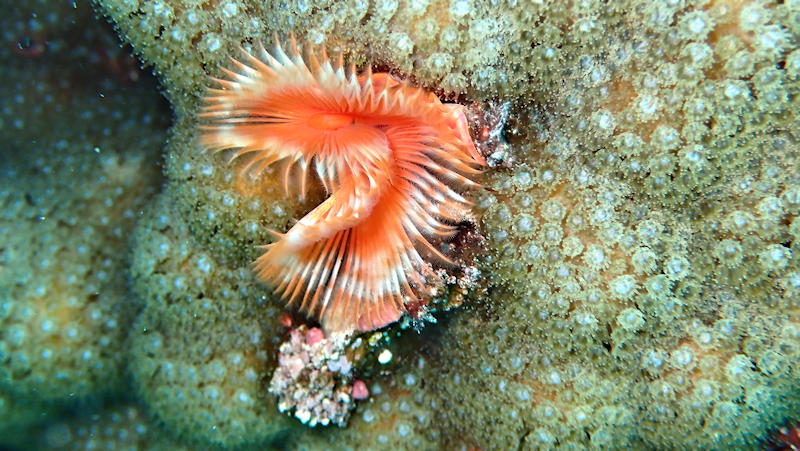
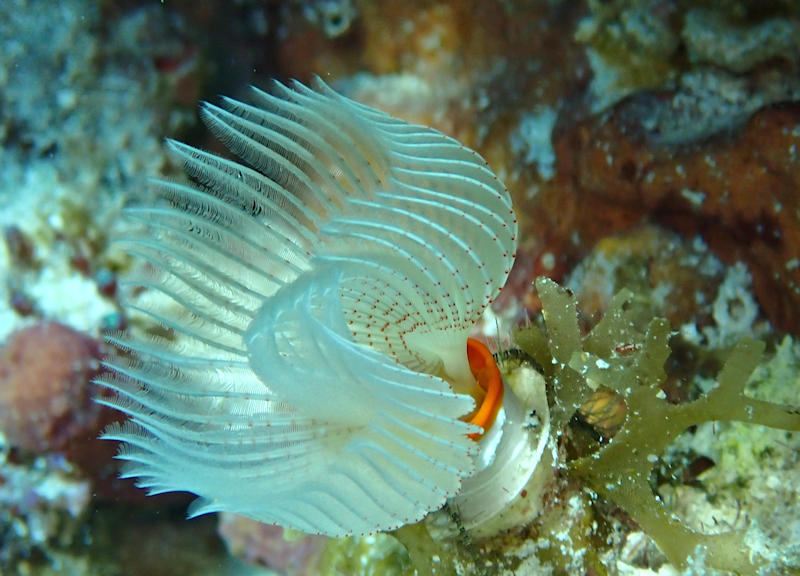

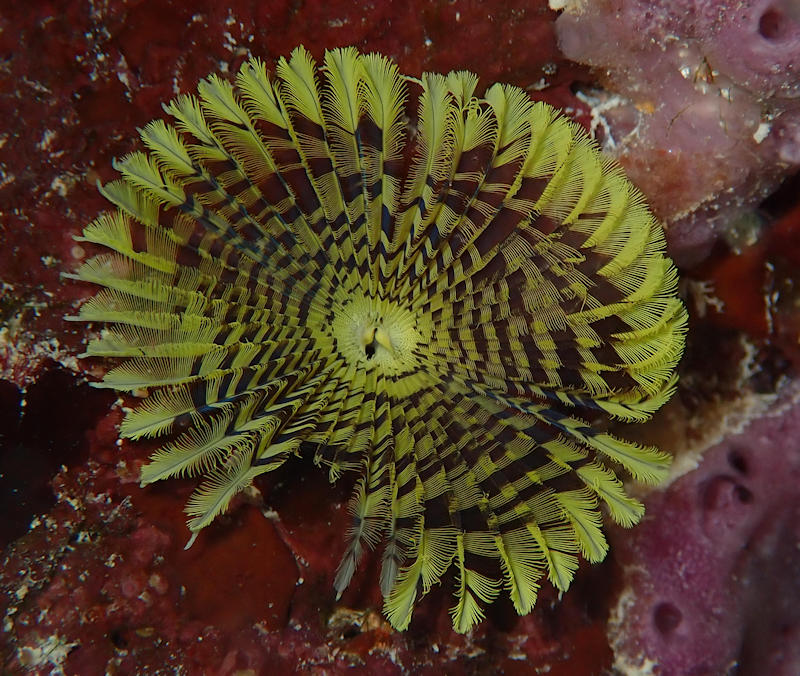
Finally we did see some Staghorn Coral. Small patches of it were in one area but it looked like it was growing well. Staghorn and Elkhorn corals are branching corals that once formed dense colonies covering acres. A disease came in the 80s and 90s that devastated these reefs. These are relatively fast growing corals, and much effort has gone into researching clones that appear to be disease resistant and offer the possibility of successful restoration.
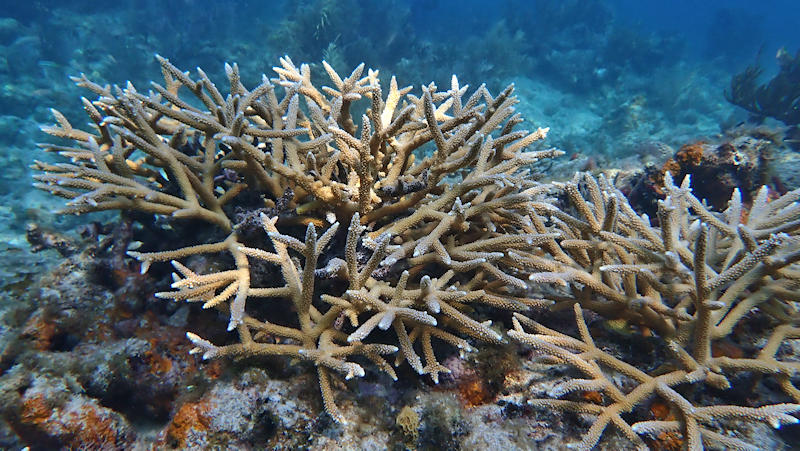
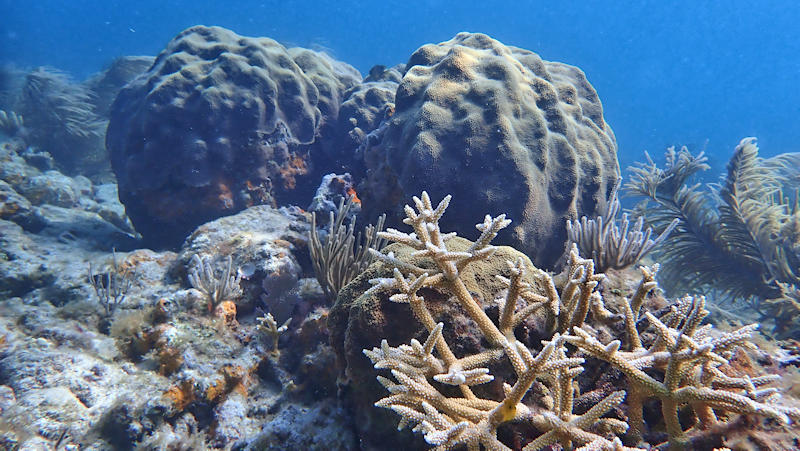
A Butter Hamlet was taking shelter in the branches of the Staghorn Coral.

An adult Three Spot Damselfish got literally right in my face. It was most likely a male protecting a nest. The juvenile of this species is bright yellow and is pictured earlier in the post.
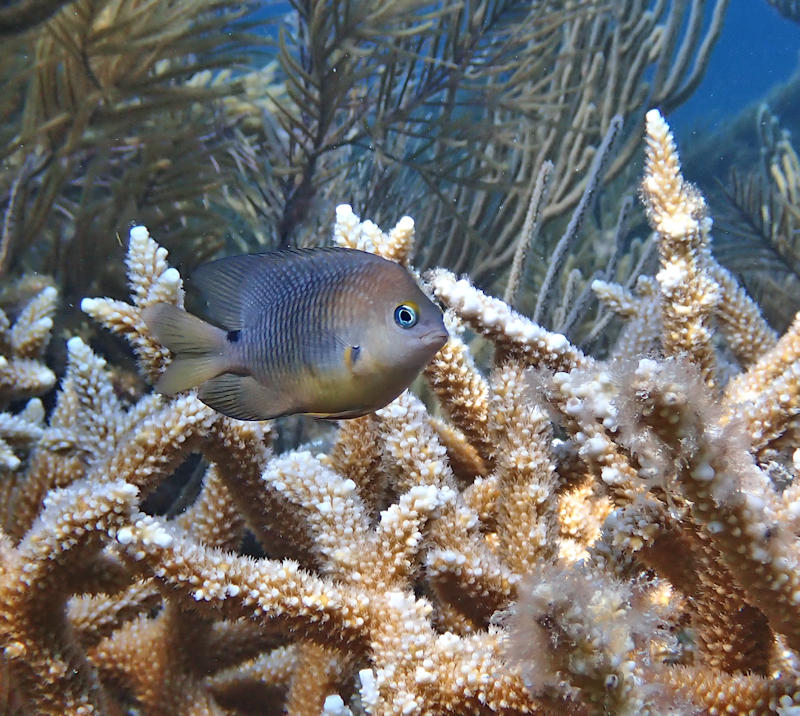
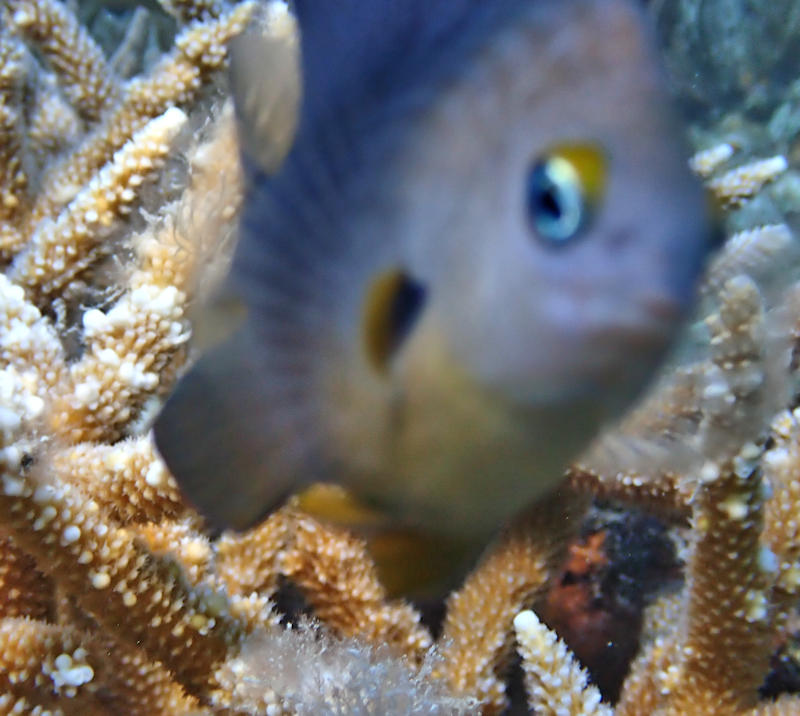
After about an hour and a half we suddenly had no air. Nothing more to do but surface. Back at the anchorage, Bill found the flapper valve had come loose. Very strange, but it was an easy fix. However, while testing the repair Bill found the cooling fan was damaged so it will be snorkeling from now on until we can get back to Florida to order parts.
Another Successful Launch
June 8
I’m still processing photos from our diving in the Tortugas and the Keys and will get those posted as we head north. We have just left Melbourne, FL to seriously begin our way to the North. There was a launch today so we made a short trip up the Banana River to have a front row seat. Bill and I grew up in the heyday of the moon program and are amazed at what has been accomplished in the last few years. So here are the pictures. We are about 8 miles from the launch pad. This one landed successfully on the ship in the ocean so we didn’t get to see the landing.
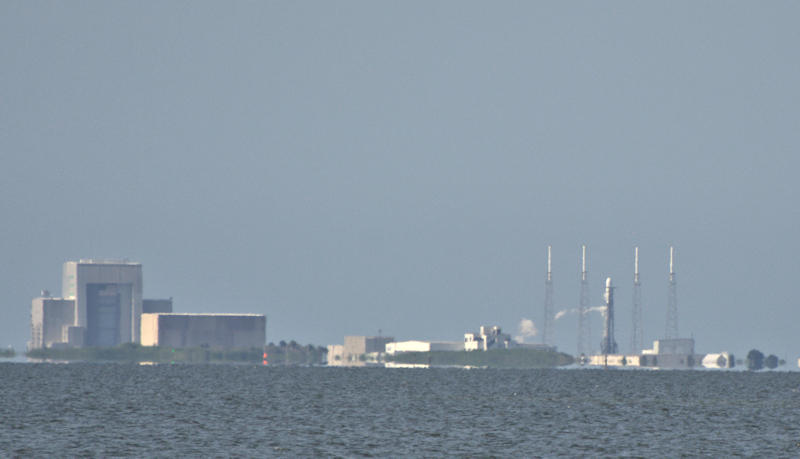
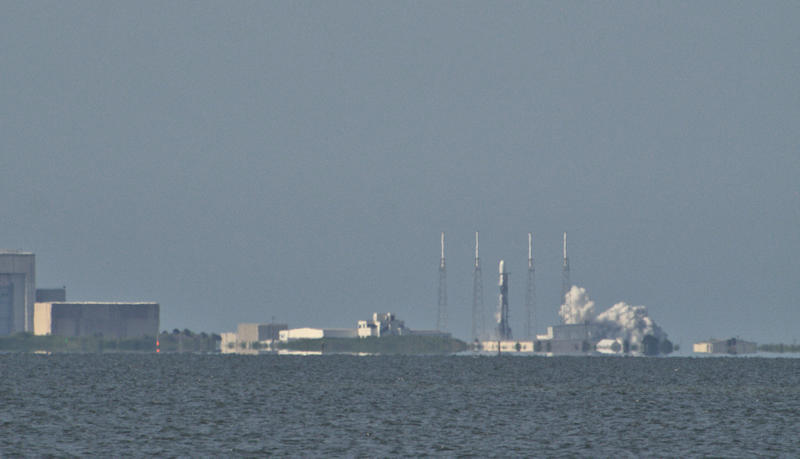
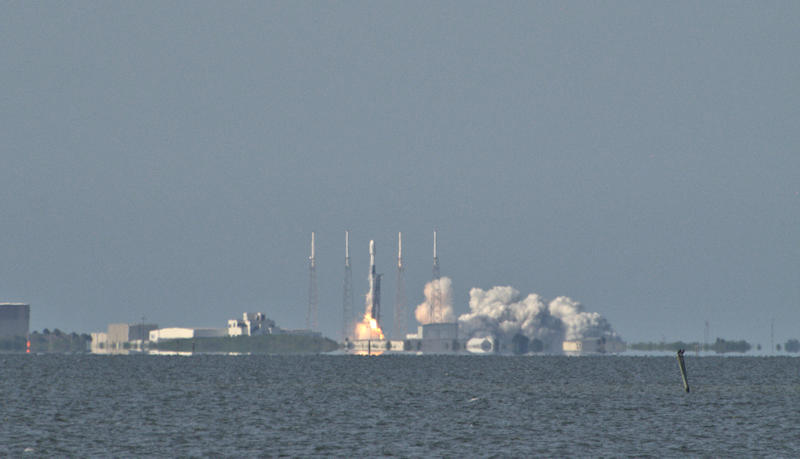



The Weather Finally Cooperates
May 13-15
The mooring field was closed by the time we got to Key West so we anchored out offshore and spent a pleasant night on the hook. We had anticipated the calm weather for a week and were excited to see that the forecast might be true. There was one more thing we wanted to check before we took off for the wilds so we picked up a mooring, and I went into shore to top off the propane tank. Turns out it was only down a gallon but now we knew and the next morning we topped off on fuel, got a pump out, and then we were on our way!!
Last year our trip to the Dry Tortugas was plagued by the kind of weather we have had for the last 2 months. The weather window we thought we had went down the drain half way through the 24 hr passage—I’d say it was the worst passage I have been through. For two weeks it blew 20 to 30 kts so diving was very limited and several days we did not get off the boat. Some of the boaters there were stuck and running out of food and water. Some days the ferry or the seaplanes didn’t even run. Returning to Key West was pounding into 2-3 ft seas. Needless to say that the improvement bar was pretty low for this trip.
Sailing was out of the picture—no wind—but we had a current with us and made good time. We passed the Marquesas around noon. We had planned to overnight there but we were making such good time that we decided to keep going,
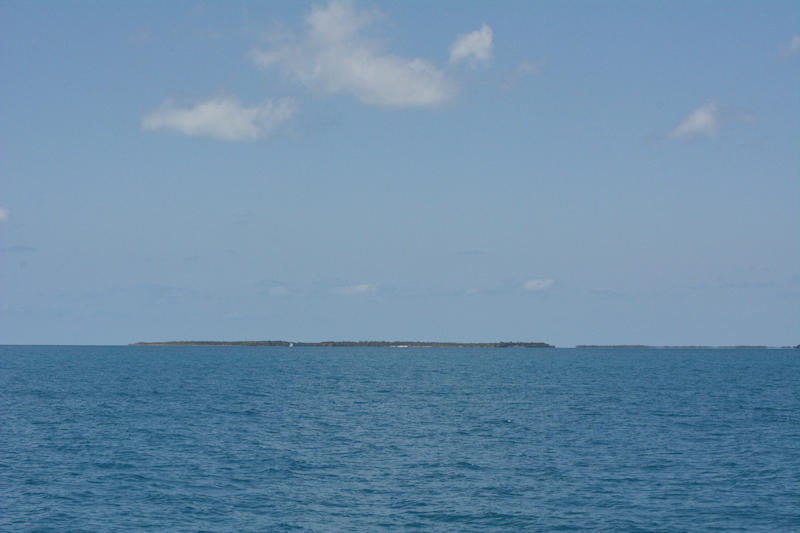
As the water got bluer, flying fish schools fled from the boat. This area is famous for its sea turtles and we saw several along the way. In fact the Dry Tortugas was named in the 1500s by Ponce de Leon because of the 160 turtles his crew collected there for food. The islands have no fresh water so that’s why they are “Dry”. As we approached the fort a tiny warbler landed on the boat to rest for a while.
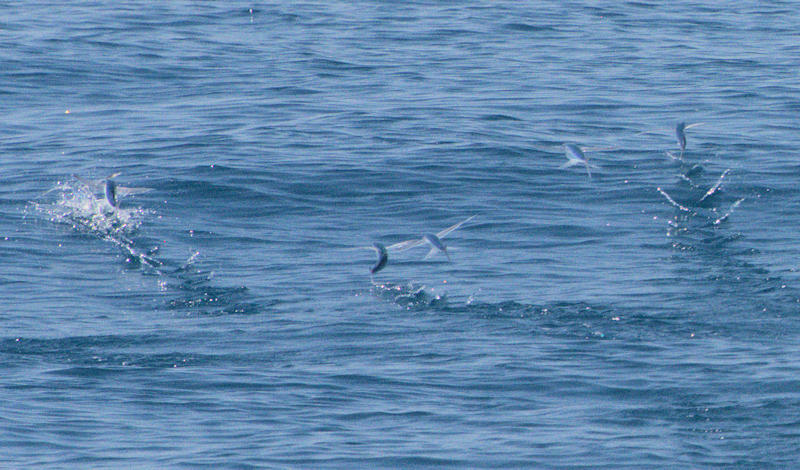
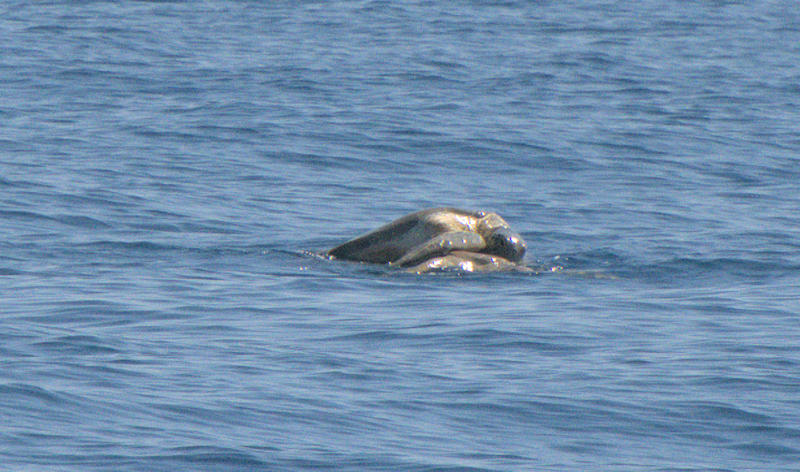
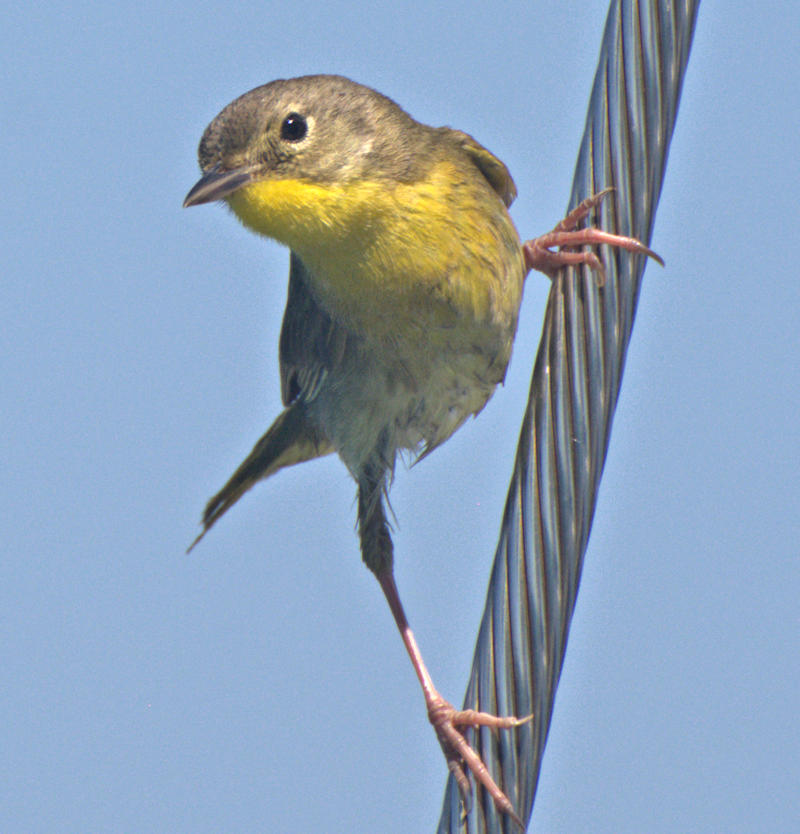
A very pleasant trip and arrival. We checked-in at the Garden Key anchorage well before sunset. Wow! We made it!!
And it is beautiful!!
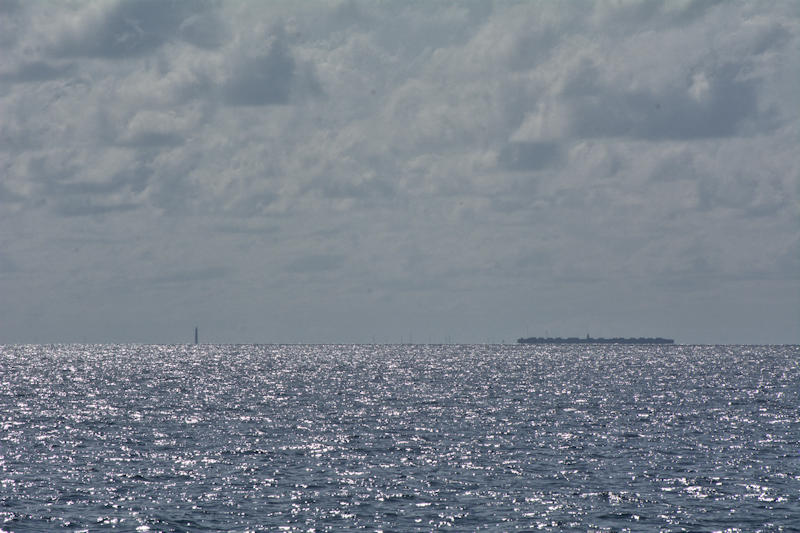
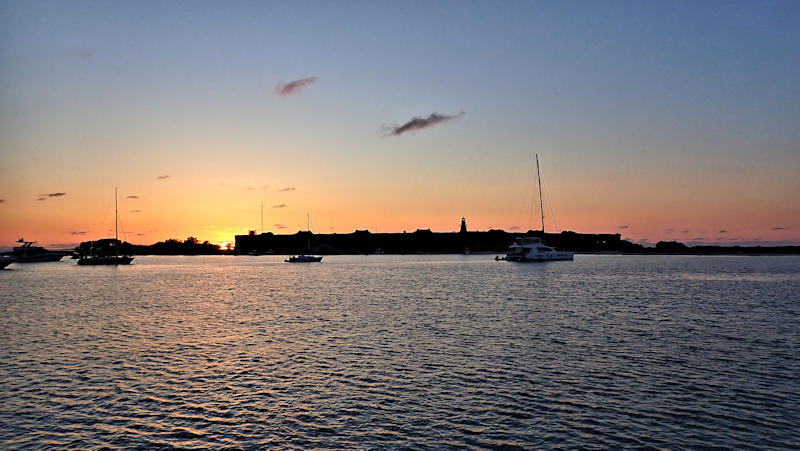
The next day dawned beautifully. I love being caught between the sunrise and moonset.

Perfect diving weather! I was more than ready to get in the water. Pulaski Shoal, an area northeast of the anchorage, was marked as a good scuba site and anchoring was permitted there so we headed off to check it out. Unfortunately we could not find a sandy spot to anchor in where the water was deep enough. So we wandered around the park and finally came in. It was late in the afternoon but I was getting my gills wet no matter what so I snorkeled around the ruins of the South Coal Dock. This dock was constructed in 1898 and the remaining pilings are covered with over a hundred years of coral and gorgonians.

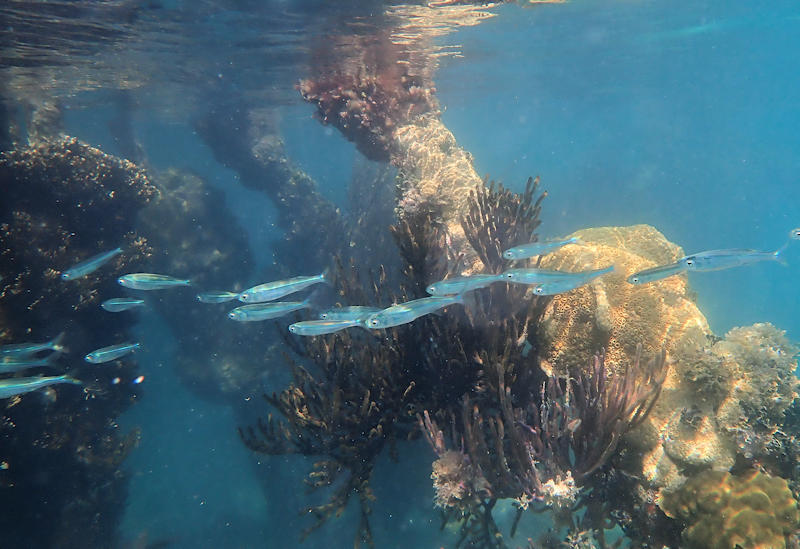
I saw some of the largest Mustard Coral colonies I have ever seen. Most of them were covered with multicolored Christmas Tree Worms.


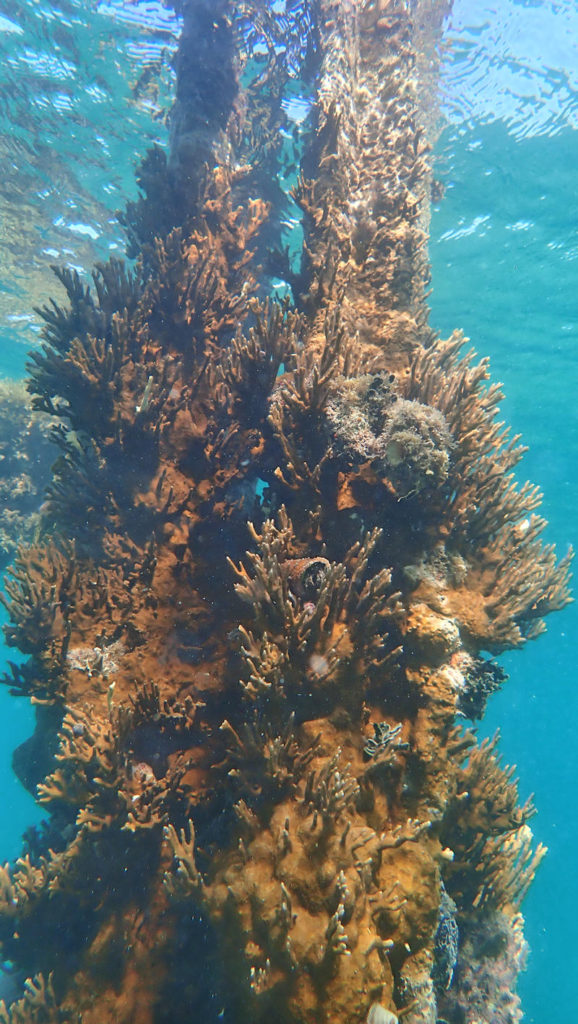
I spent a couple of hours looking around for critters among the coral. Green Algae included Watercress Algae (Halimeda opuntia) and Green Grape Algae (Caulerpa racemosa).
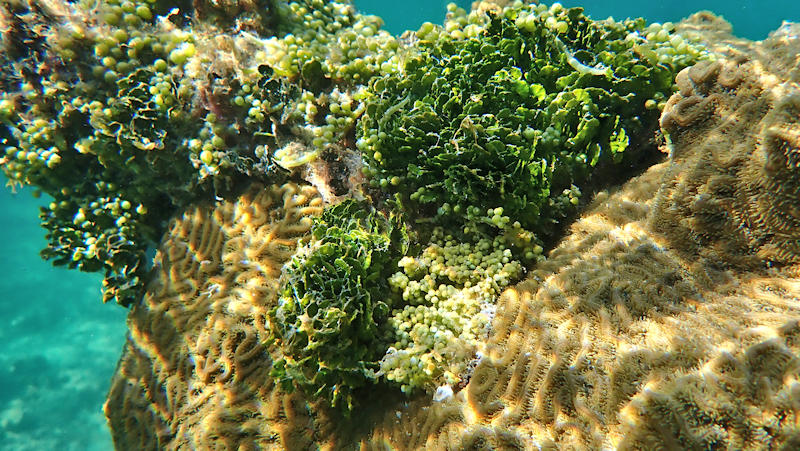
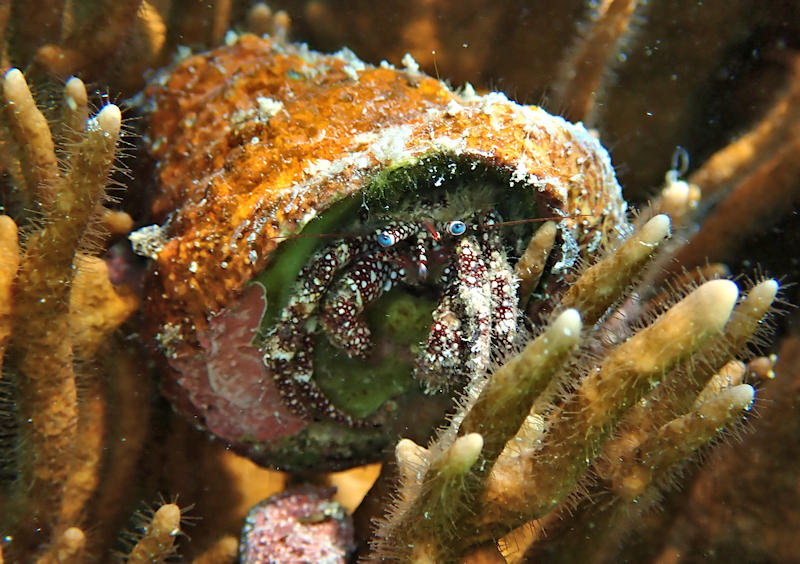
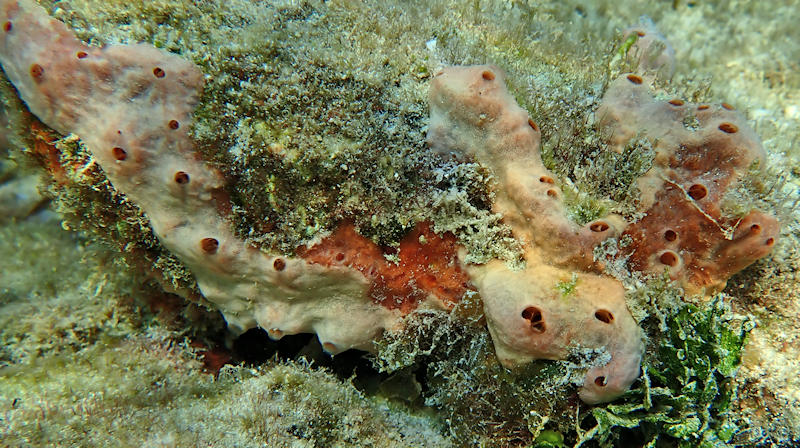

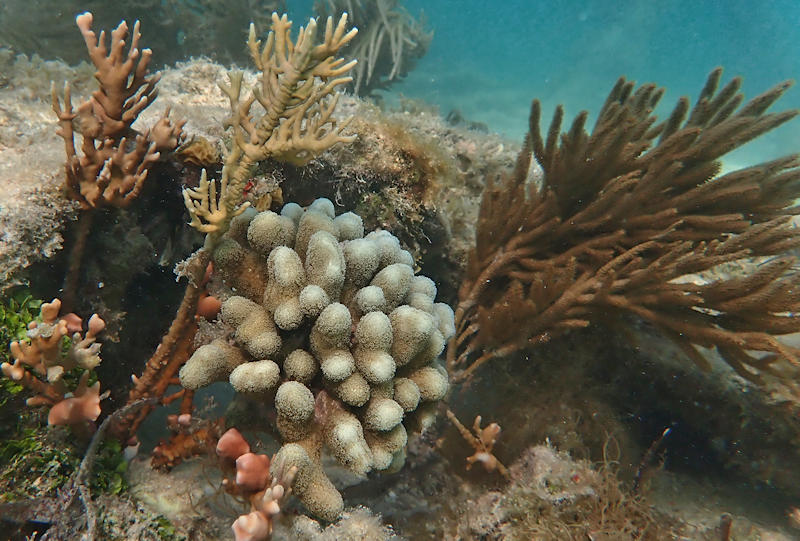
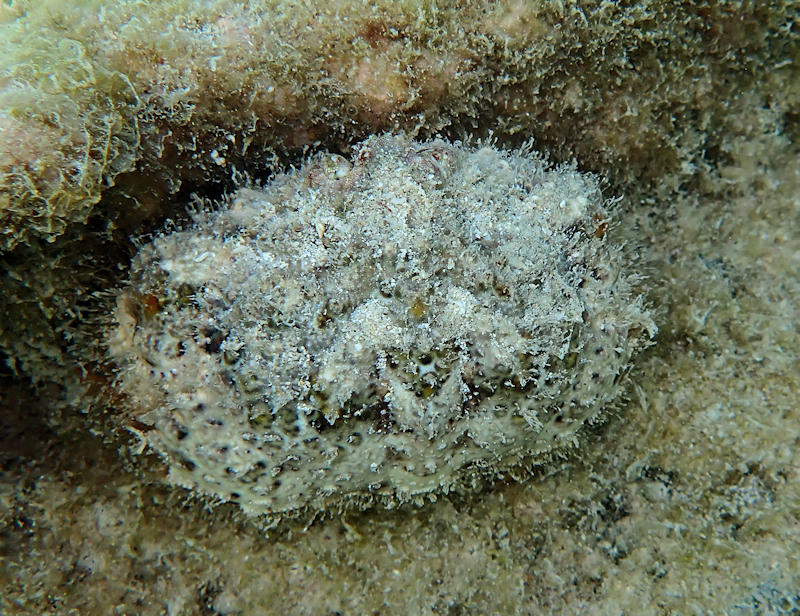
And I even caught a few fish. The Queen Angelfish was starting to transition from the juvenile to the adult colors. The black one with the yellow stripes is a juvenile French Angelfish and it had no reason to have its picture taken. Fish easily determine if you are pursuing them or not and it is frustrating to have them turn away.
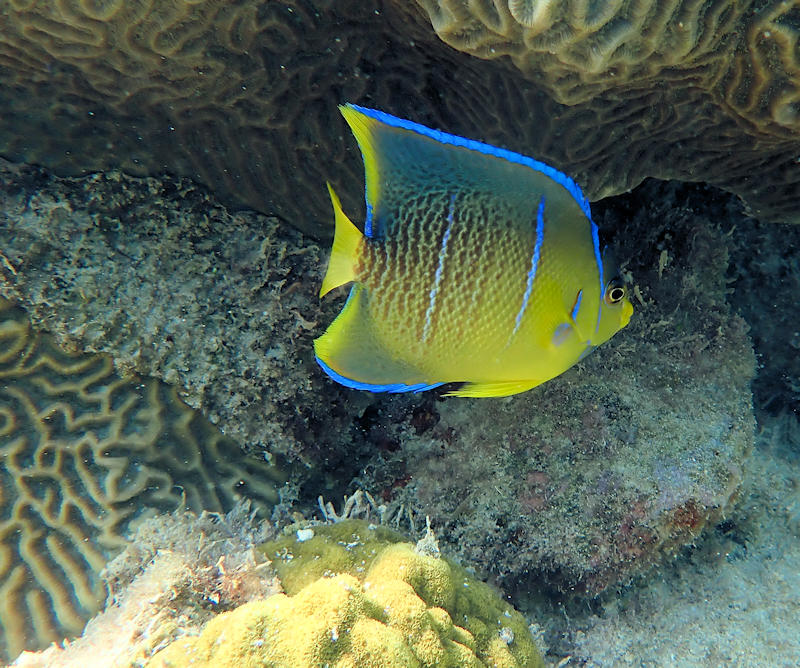
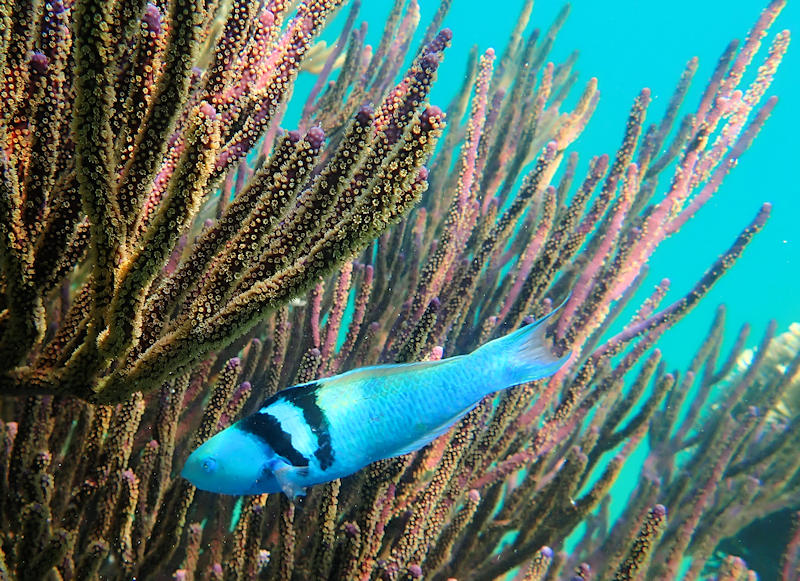
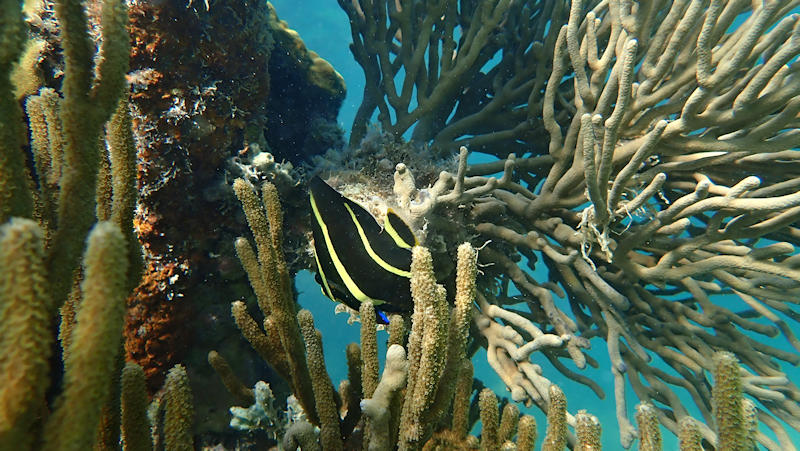
I took a glance off to the side and there it was right beside me. A Lemon Shark (Negaprion brevirostris) and it was bigger than me. Later I heard someone say there was a Lemon Shark hanging around the Ferry Dock where people were fishing. It was just as startled as I was, and, with a flip of its tail, it was gone. Sharks are so hard to photograph! Evening was approaching and it was time to go back to the boat.

Going Off The Grid!
May 14
Well, we are on our way to the Dry Tortugas. Will probably stay at the Marquesas tonight. Going west this time–into the sunset. No cell phone or internet for maybe a couple of weeks. I promise tons of beautiful pix when I get back.
You can follow our progress on our SPOT:
https://maps.findmespot.com/s/8484
See Ya Later!
Diving Western Sambo Reef
May 12
There was no use putting the sails up as we headed to Key West. It was a beautiful day!

We are getting excited about about a week of calm weather–maybe good enough to go to the Dry Tortugas! Last year we went there but had a horrible passage and strong winds the whole time we were there.
Bad sailing weather makes for good diving weather so on our way to Key West we stopped at Western Sambo Reef. I had been there “working” but Bill had never seen it. The hookah finally worked and it was a nice dive.
There were actually quite a few large colonies of star corals–much larger than I saw at Looe Key. However, not really what they should be. Some colonies were fragmented. Hopefully they are in the process of growing back.


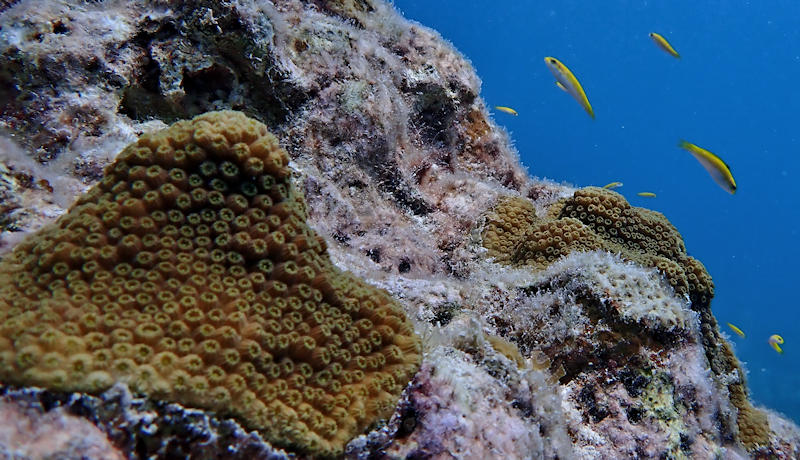
The Star Corals (Orbicella spp.) are some of the primary reef building corals in the Keys. At one time, a whole mound might be covered with live corals but many now are found on a mound in little pieces. In the second picture there are two Spotfin Butterflyfish and a Caesar Grunt (black fins) and a Spanish Grunt (yellow).
Where there is no live hard coral, the Seafans take over.
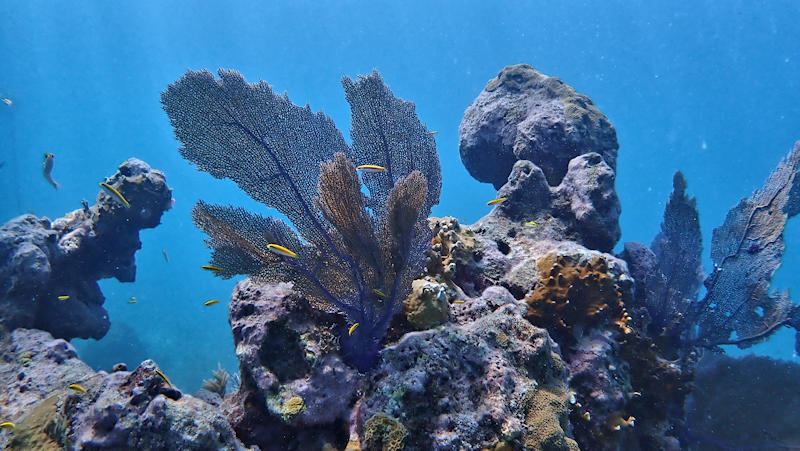
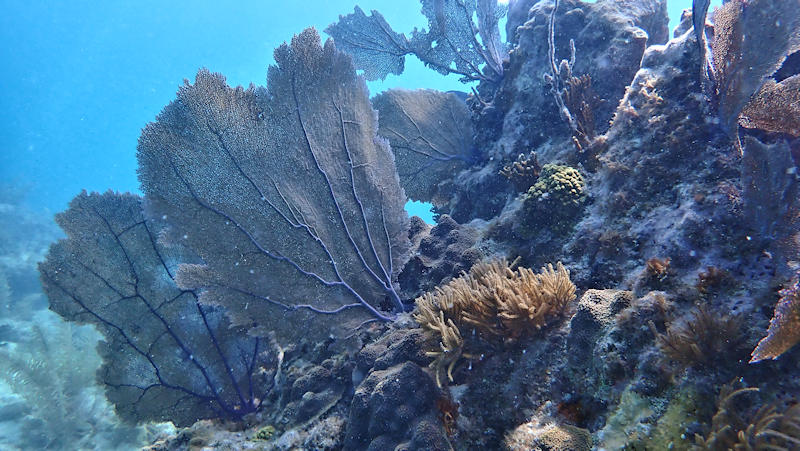
On one of the Seafans, I saw a pair of Flamingo Tongue Snails. The cream and tan shell is covered by the snail’s spotted mantle. You can see a place on the Seafan where the snails have eaten it.

There was a large Mutton Snapper being still near a coral head. This usually means that the fish is getting a cleaning from a tiny fish called a Neon Goby. You can barely see a blue streak on the bottom of the tailfin of the snapper which is the goby. The goby picks dead skin and parasites off the fish. Later on I saw a Barracuda glide up to a coral head and sit still. Sure enough, it was also getting a cleaning. I stayed back so I would not disturb its spa time and I observed the Barracuda open its mouth and gills indicating the Goby was cleaning inside its mouth and gills. Fish know where these cleaning stations are and visit them regularly.
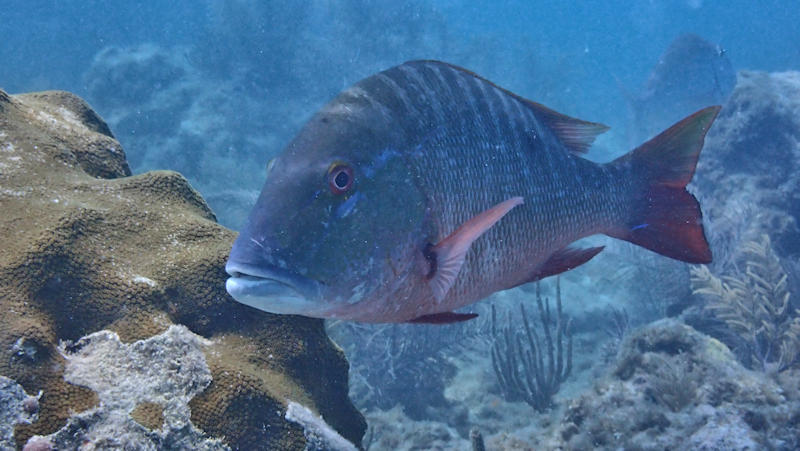
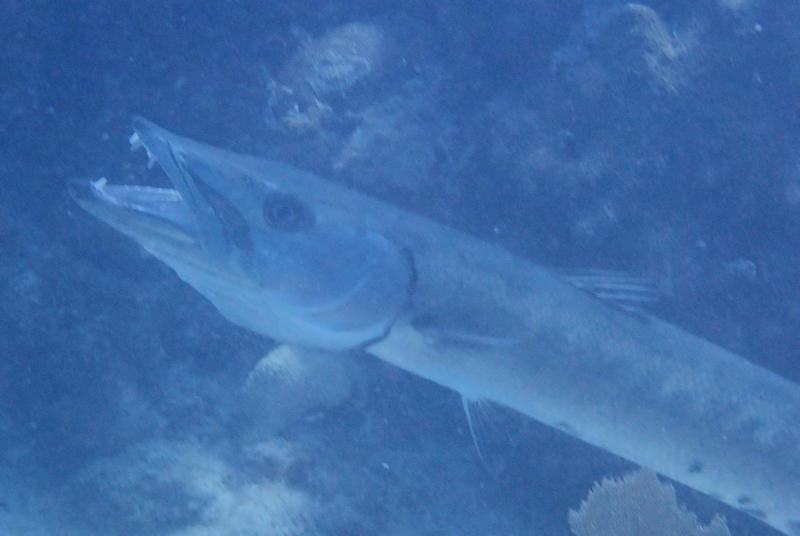
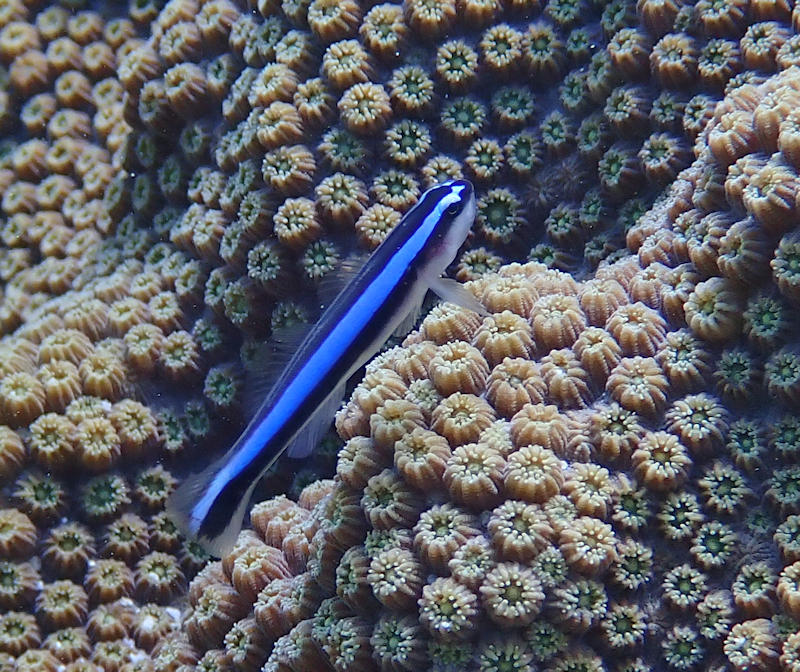
Other fish, like the Bluehead Wrasse, shrimp and juvenile angelfish, also serve as cleaners to large fish. Schools of juvenile, female and initial phase Bluehead Wrasses are a common site on any reef. The terminal phase Bluehead Wrasse looks like a completely different fish. As in parrotfish, the terminal phase is a mature male and the most colorful. Males that are initial phase or transitioning will spawn in a school while the terminal phase male will spawn one on one.
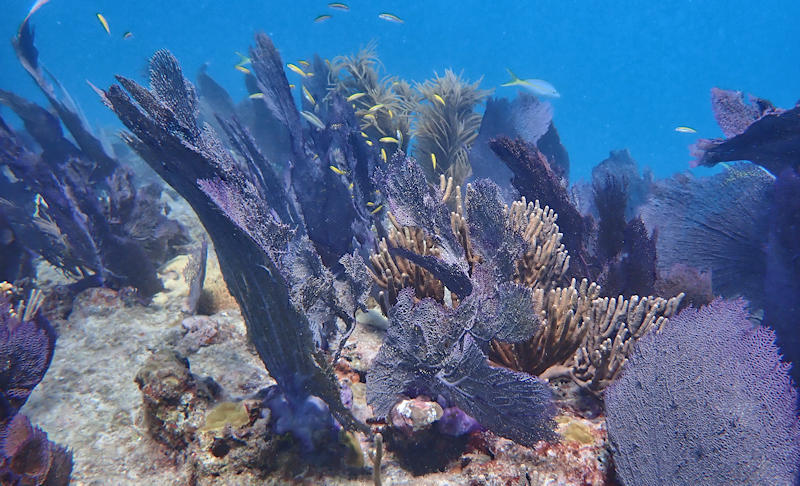

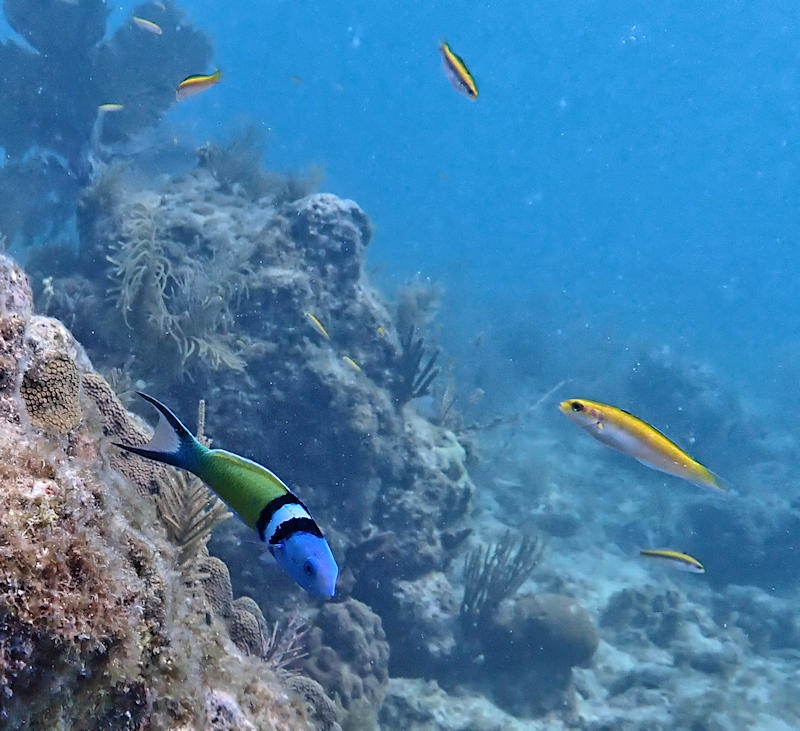
Damselfish are some of my favorites they are brightly colored and some are very territorial. I have had a three inch damselfish come up and bite my lip. I suspect he was guarding a nest.
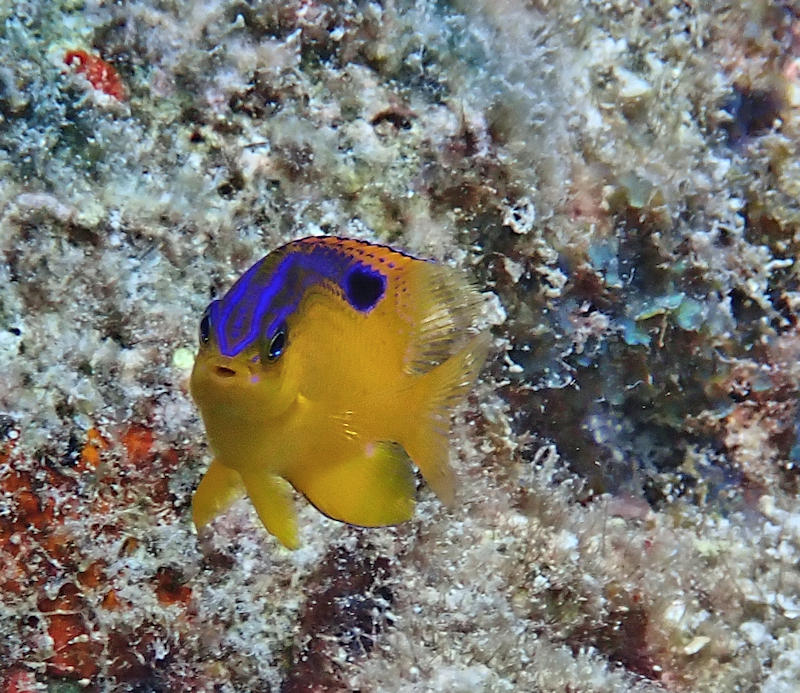
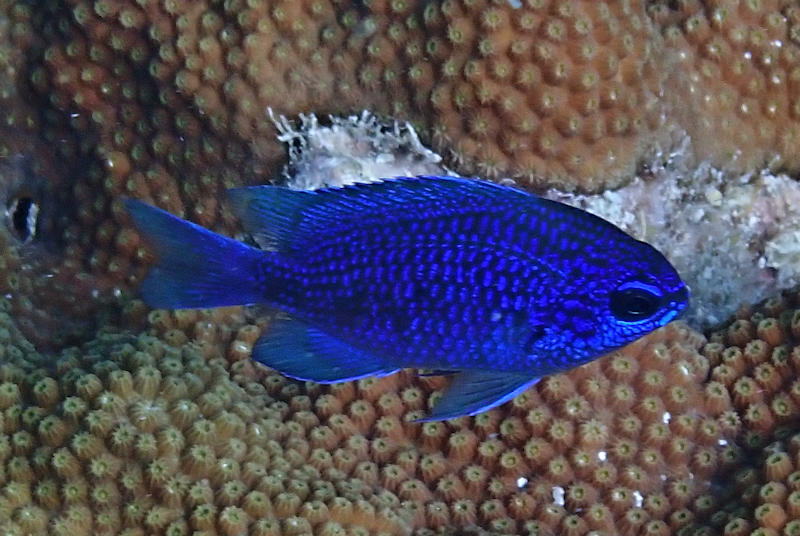
I found Finger Corals, two species of Lettuce Corals and Mustard Corals. Sadly, I did not see one live Brain Coral.
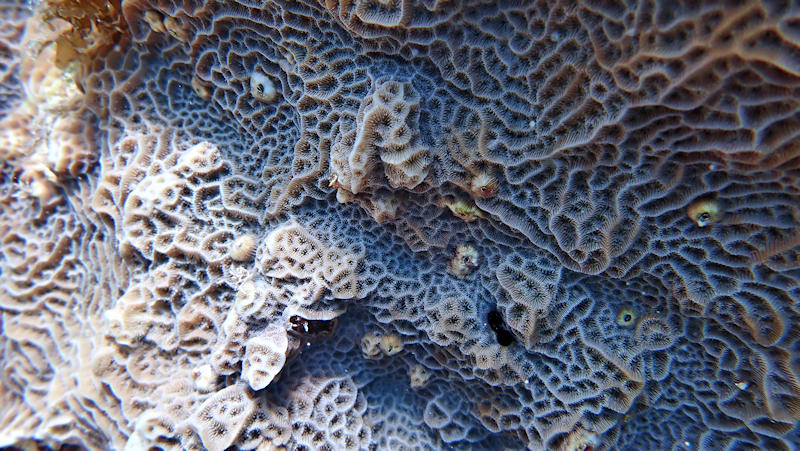
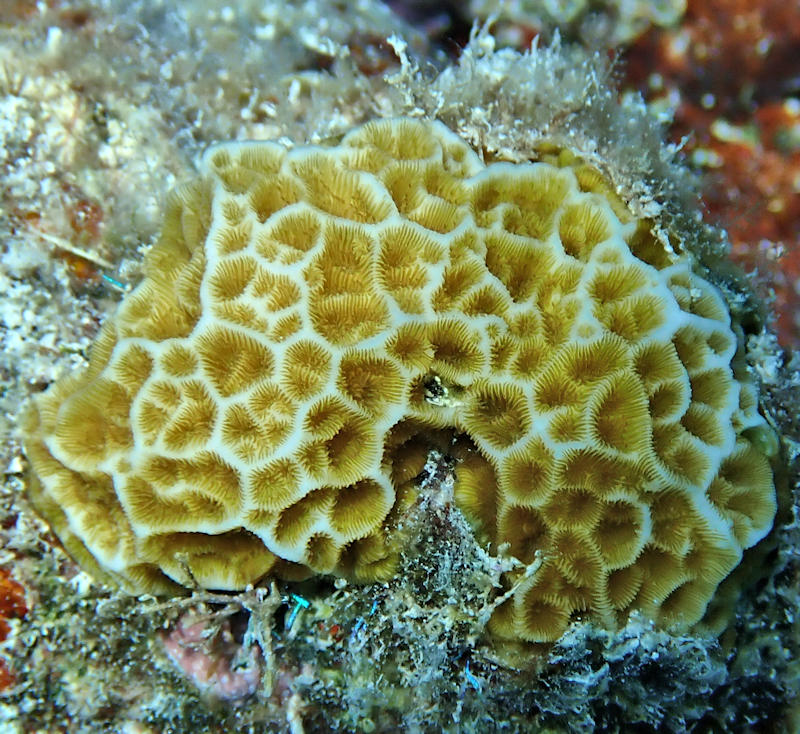
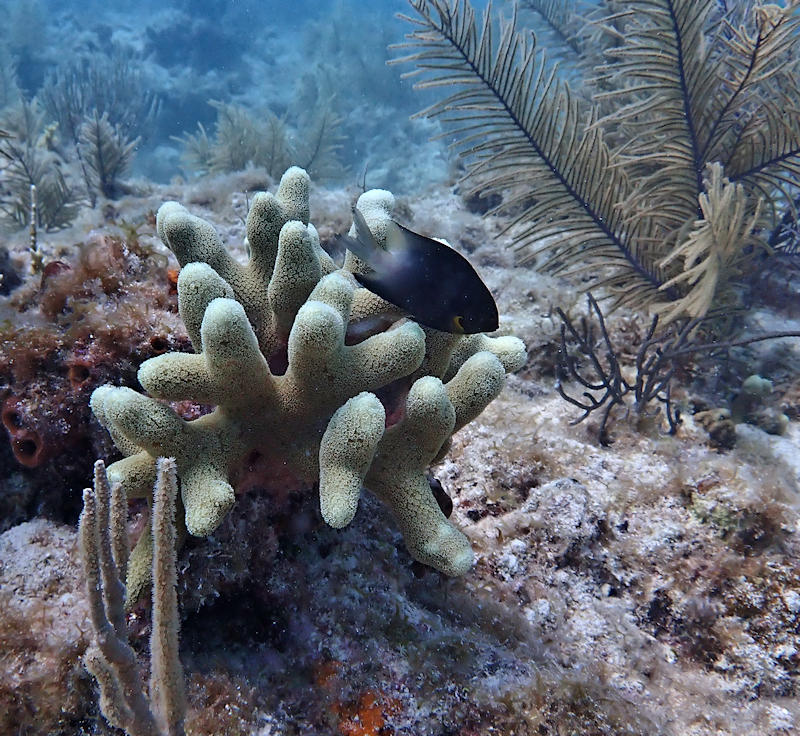
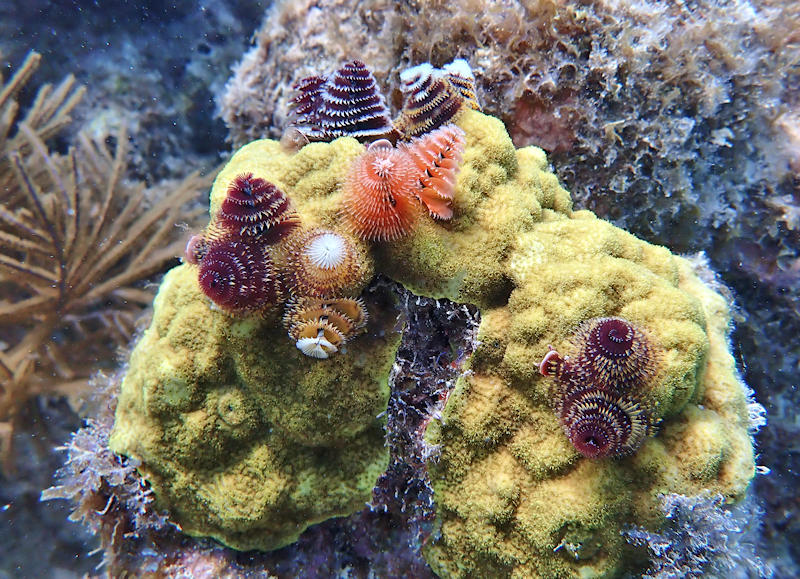
Of course there were Parrotfish. The Reef Parrotfish is in the Initial Phase; the others are Terminal Phase. The Striped Parrotfish is swimming with a couple of Blue Tangs. In the post about Coffins Patch, I had pictures of the initial/juvenile phase of the Striped Parrotfish.

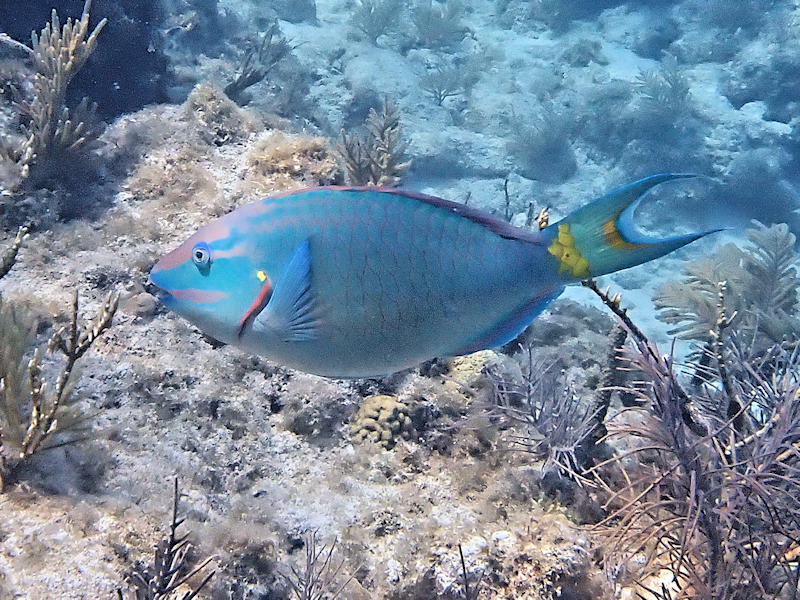
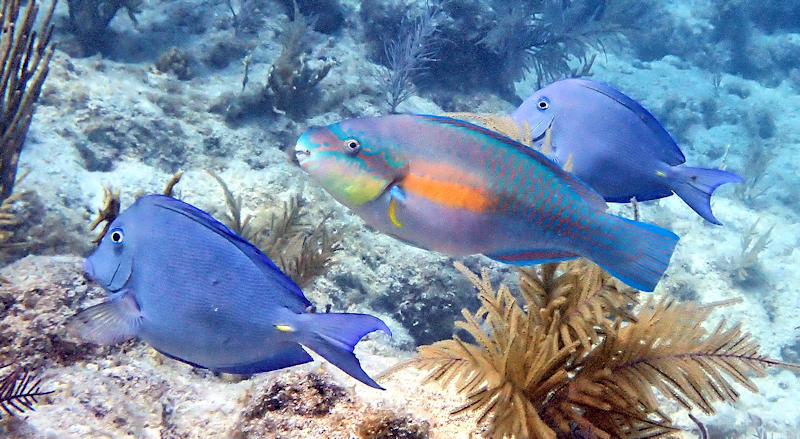
Near the end of the dive, I was surprised when a small part of a coral head moved. An Octopus is something you just don’t see unless it is moving.

Still Waiting For The Wind To Abate
April 29-May 11
Finally a beautiful day for diving. Our friends on Bliss, came with us and we dove Coffins Patch (pictures posted before), then went out to Sombrero Reef, a little bit further out. As soon as you approach the mooring balls, the fish start gathering under the boat. I expect some people feed them, which I don’t recommend. This reef is larger and deeper than Coffins Patch and mostly covered with gorgonians (sea fans and sea whips) and encrusting zoanthid.
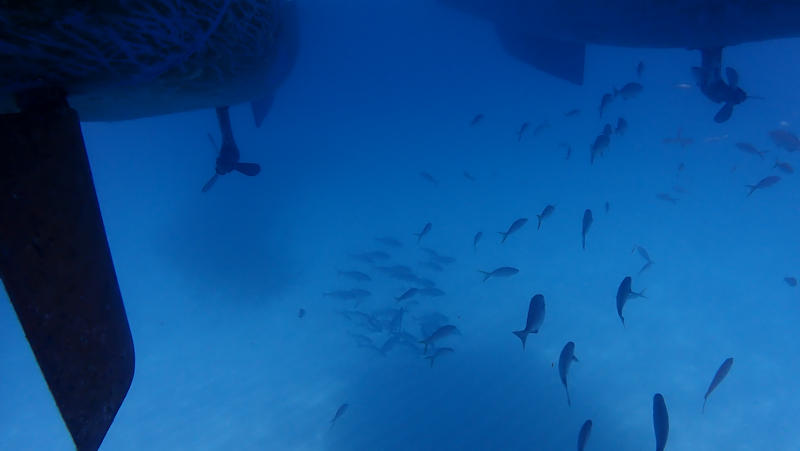
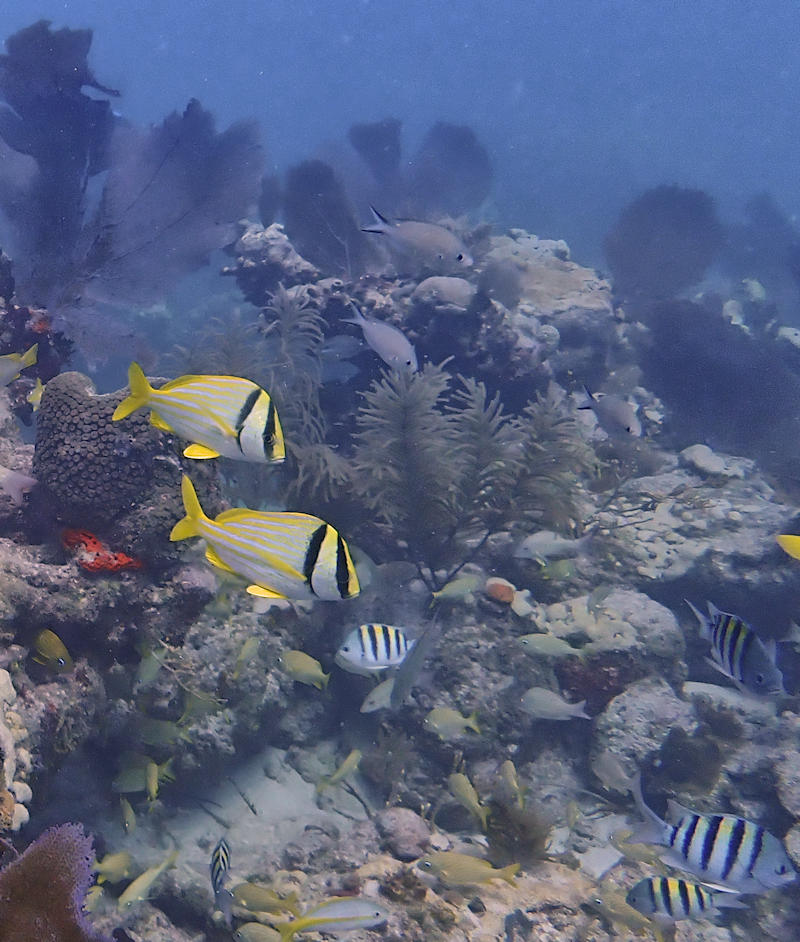
There is not as much sponge on this reef, but you can see a bright orange one under the Great Star Coral (left center). Feathery Sea Plumes look like plants but are really gorgonian corals, as are Sea Fans
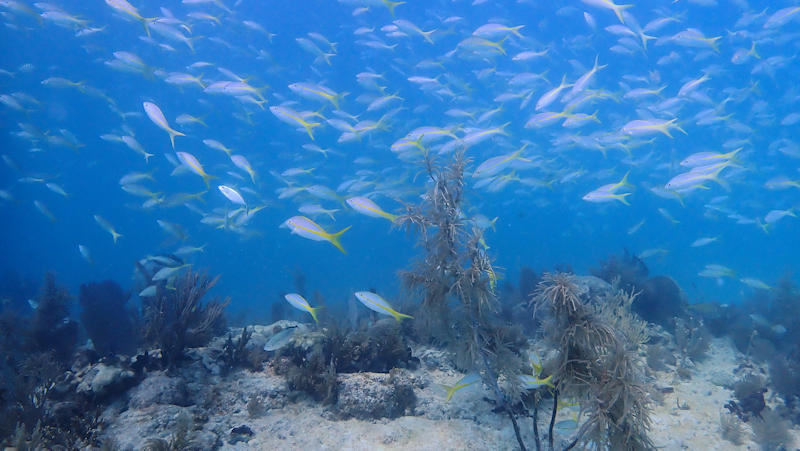
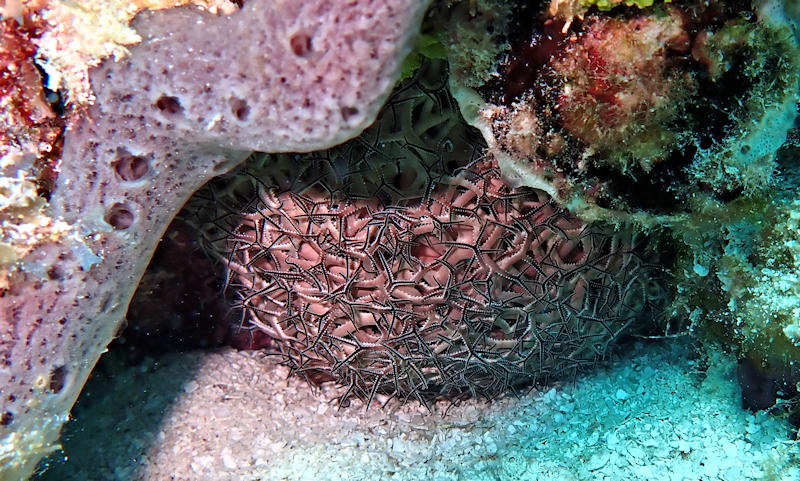
Right away I spotted a Giant Basket Star under a rock. Basket stars ball up under a rock or on a gorgonian during the day then spread out their branched arms during the night. This one is a bit larger than my fist as pictured and is probably around three feet across when it is expanded.
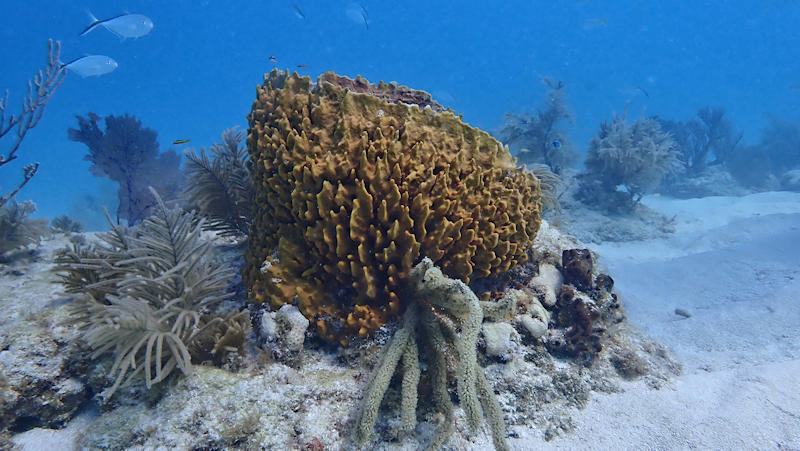
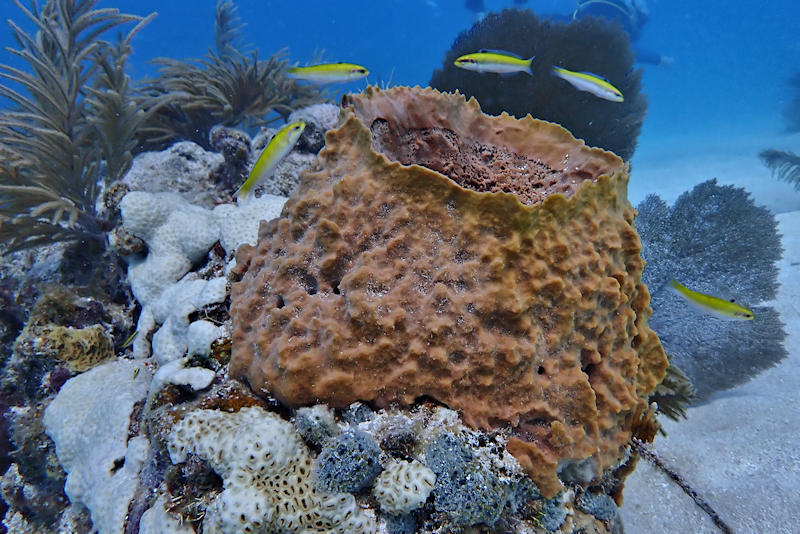
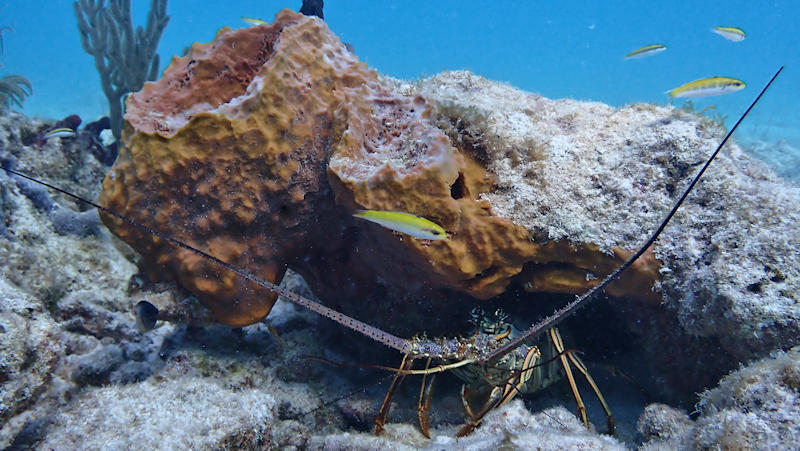
These Giant Barrel Sponges (lots of “giant” things here) live for a long time. Some large ones have been estimated to be over 2000 years old. These were 1 1/2 – 2 feet across so they were small. I have seen some in the Bahamas that I could sit in. The fish in the middle picture are juvenile and initial stage Bluehead Wrasses. A Spiny Lobster, in the right-hand picture, makes its den under a sponge aon a rock.

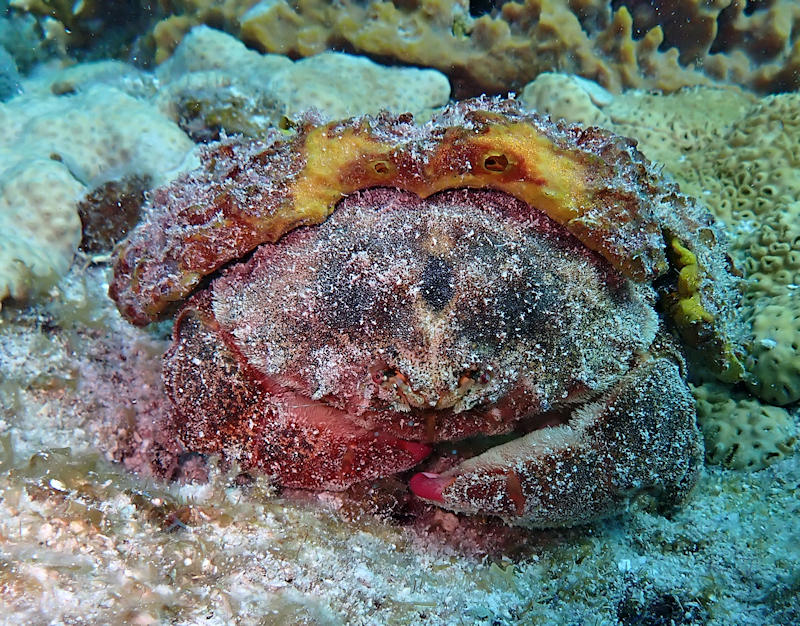
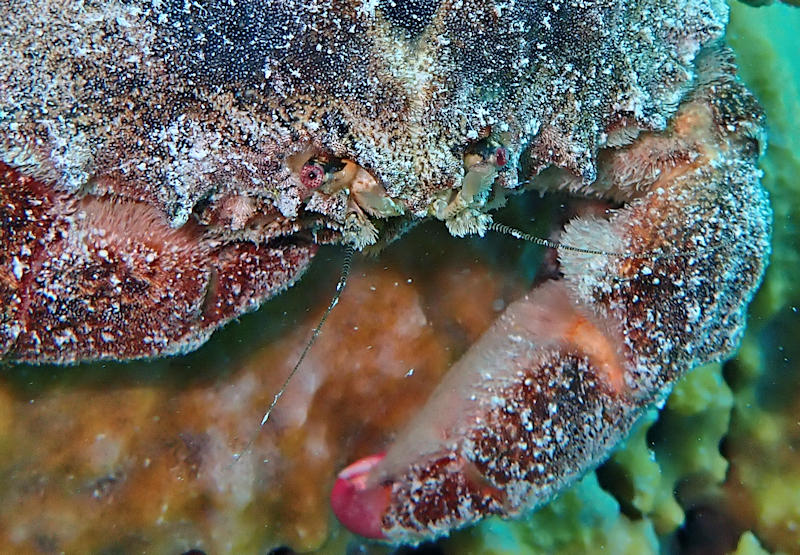
Hey, that sponge has legs! The only way Bill noticed this crab was because he saw it move. Sponge crabs have rear legs that are made to hold a piece of sponge over the carapace. The sponge grows to the shape of the carapace and provides the crab with camouflage. As I zoomed in on the picture, I saw the tiny red eyes that give this crab its name.
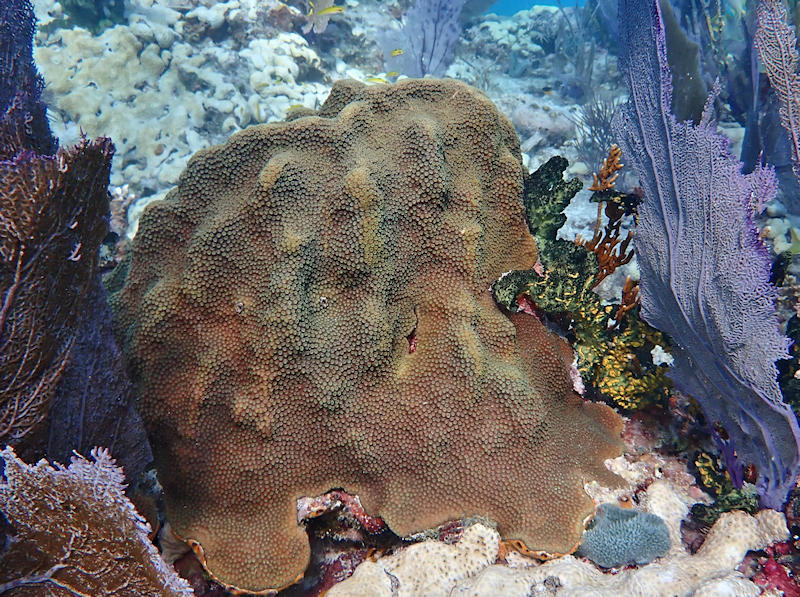
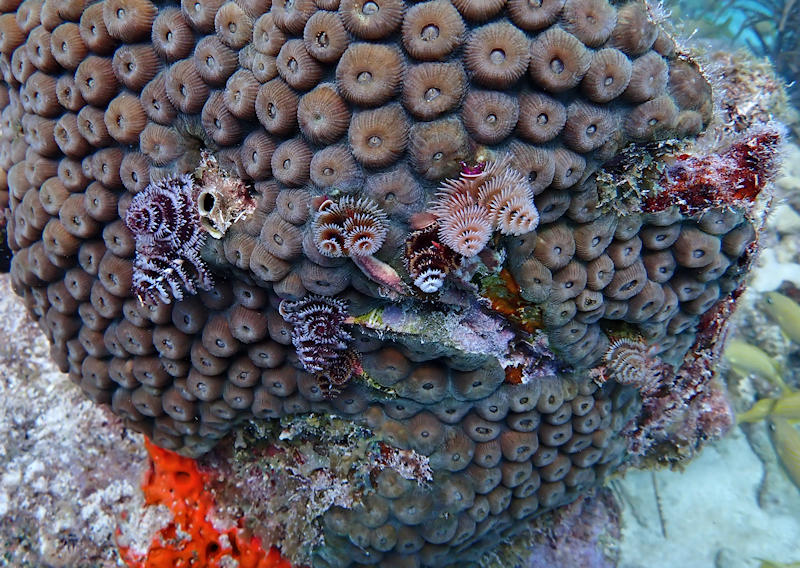
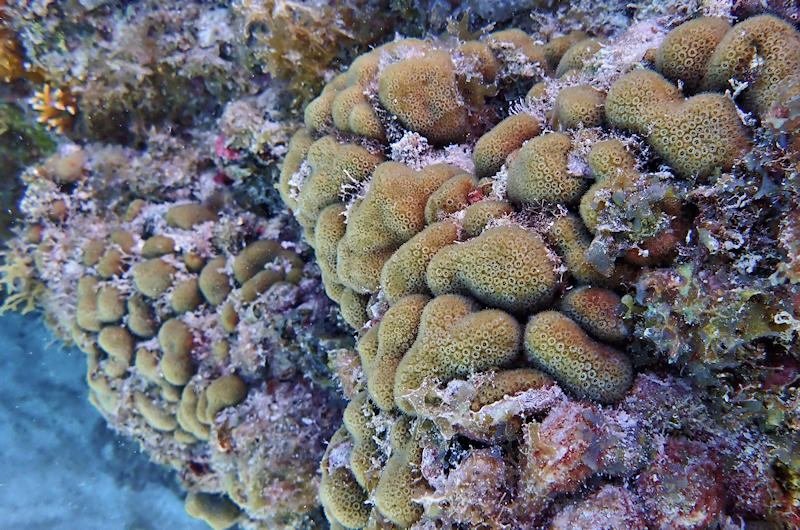
I am always happy to see some healthy hard corals, although many of the massive ones have been killed off by disease. These were all quite small and isolated. The Great Star Coral was home for some Christmas Tree Worms (Spirobranchus giganteus). The brightly colored gills of the worms gather plankton for food as well as obtain oxygen. The rest of the worm resides in a hard shell tube that is covered by coral.

A Sea Anemone is a single polyp related to jellyfish. This species comes in several colors and this bluish color I don’t see often. If you look carefully in the righthand corner, on the red coraline encrusting algae are two tiny Squat Anemone Shrimp (Thor amboinensis). There is also one on the beige and tan tunicate. The anemone is surrounded by Y-Branched Algae (Dictyota sp.)
The forecast said the nice weather would continue and a diving buddy joined us for the weekend. Alas, the wind picked back up. We did some muck diving on the Gulf side then tried Sombrero reef again as the wind somewhat died down in the afternoon. Unfortunately, the pull start for the hookah broke while deploying it so we had to snorkel.
The wind was still blowing but in a good direction to head south so we left Marathon, and made a leisurely sail down to Newfound Harbor. This is a large, quiet harbor, and it was good to be away from the crowded mooring field again. The “Plan” was to go to Key West, were we could hang out until weather was good for a trip to the Marquesas or the Dry Tortugas. We were cozy in the harbor while the wind blew and got the kayaks out to do some paddling.
May 5th was our Anniversary and we celebrated by going out to Looe Key. The hookah failed again so we had to snorkel it, but it was a pretty dive with lots of fish and some Reef Sharks.
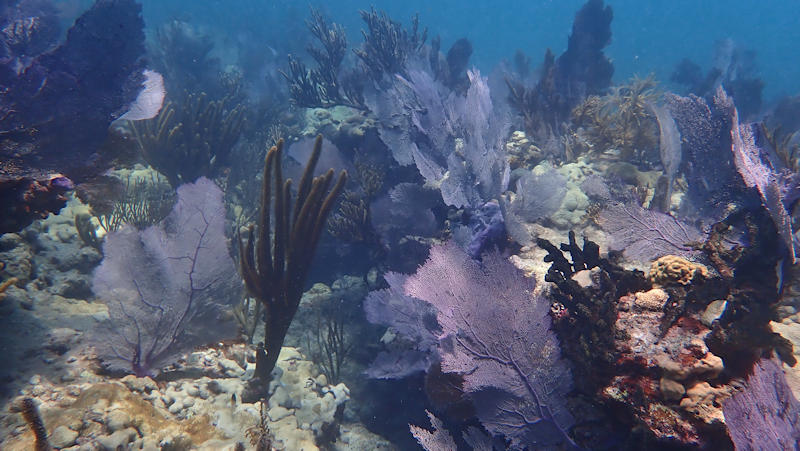
Again, we were greeted by hundreds of fish. The two Caribbean Reef Sharks that were swimming around were totally uninterested in us. They had plenty!
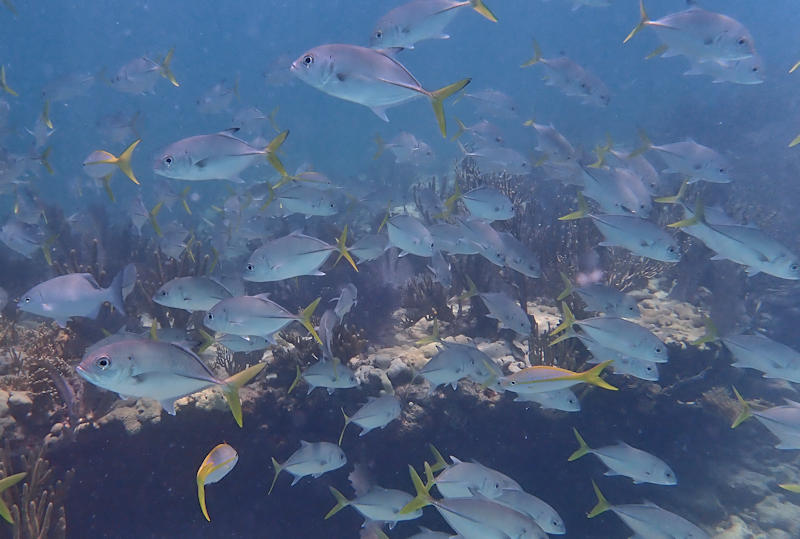
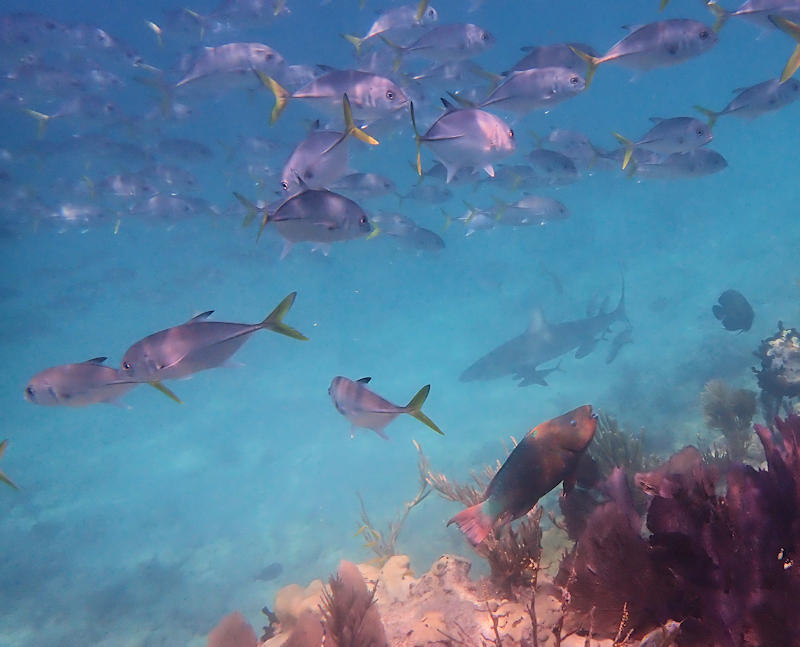
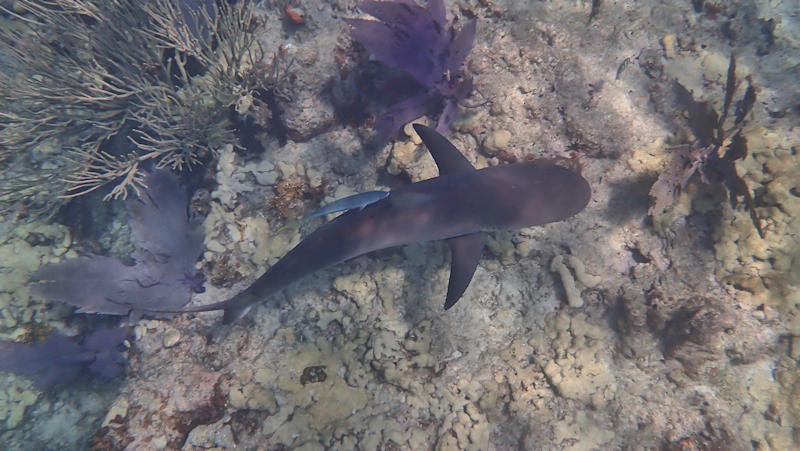
Reef sharks can be aggressive but that usually involves a speared fish. I had a group of 6 check me out one time and it was a little unnerving.
There are always lots of Parrotfish here.

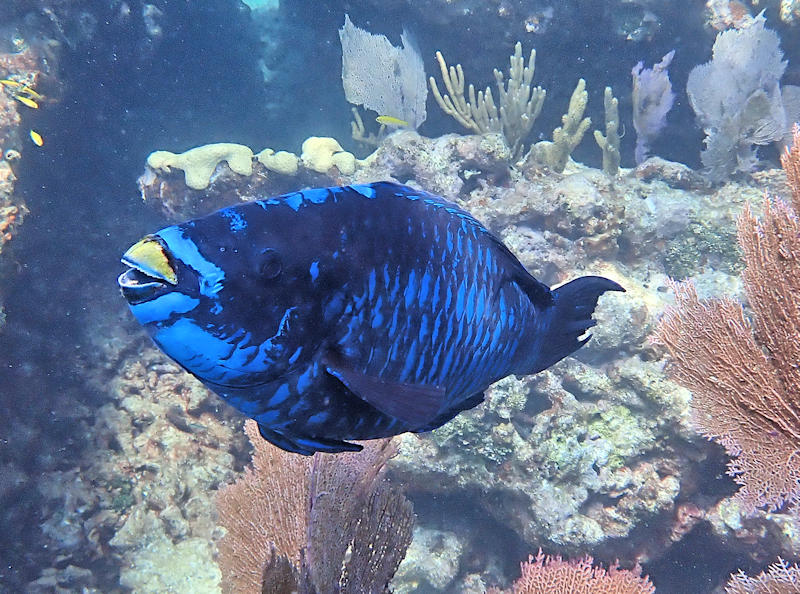
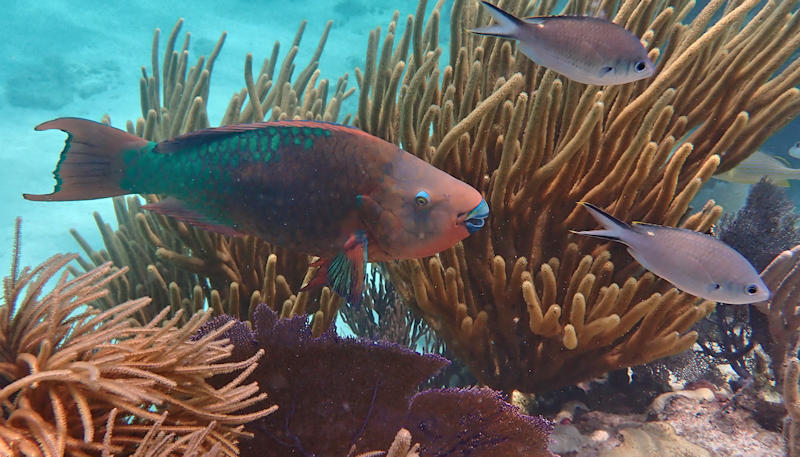
In the last post, I had a picture of a transitioning Blue Parrotfish that had not developed the flat nose. All three of these pictured here are terminal phase which means that they are mature males. The small fish swimming with the Rainbow Parrotfish are Brown Chromis (Chromis multilineata)
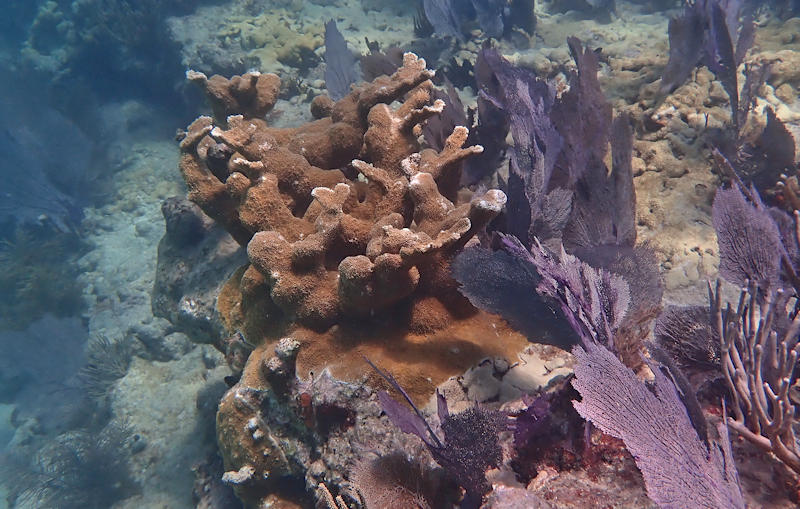

Looe Key was known for its beautiful Elkhorn and Staghorn corals but, sadly, I was able to find only one colony of Elkhorn. At least it appeared to be healthy. Most of the reef now is overgrown with gorgonians and encrusting zoanthid. I was also happy to see a Grooved Brain Coral. Brain corals are very slow growing and have been devastated by disease in the Keys.


Trumpetfish hang out near gorgonians where they try to blend in while they wait for lunch to swim by. Most of them are brown but there is a yellow and a blue color phase. I was lucky to get a picture of this nice yellow one.
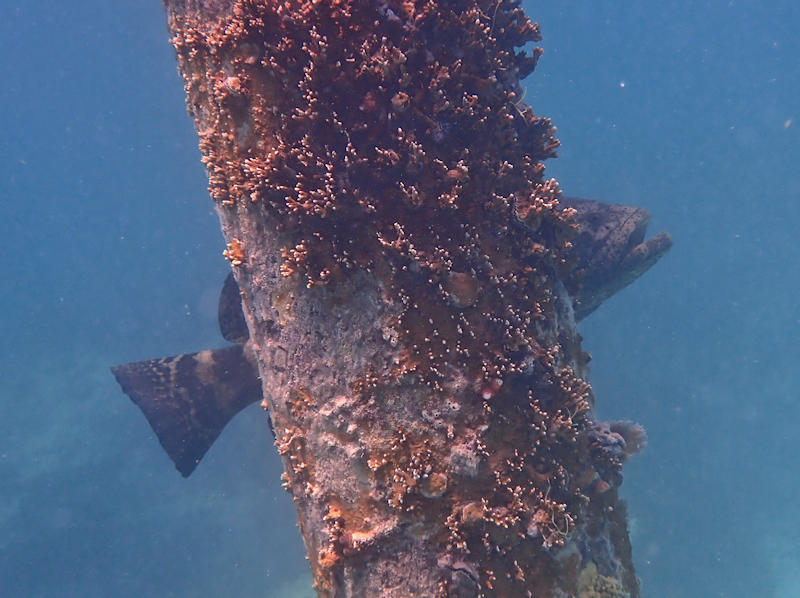
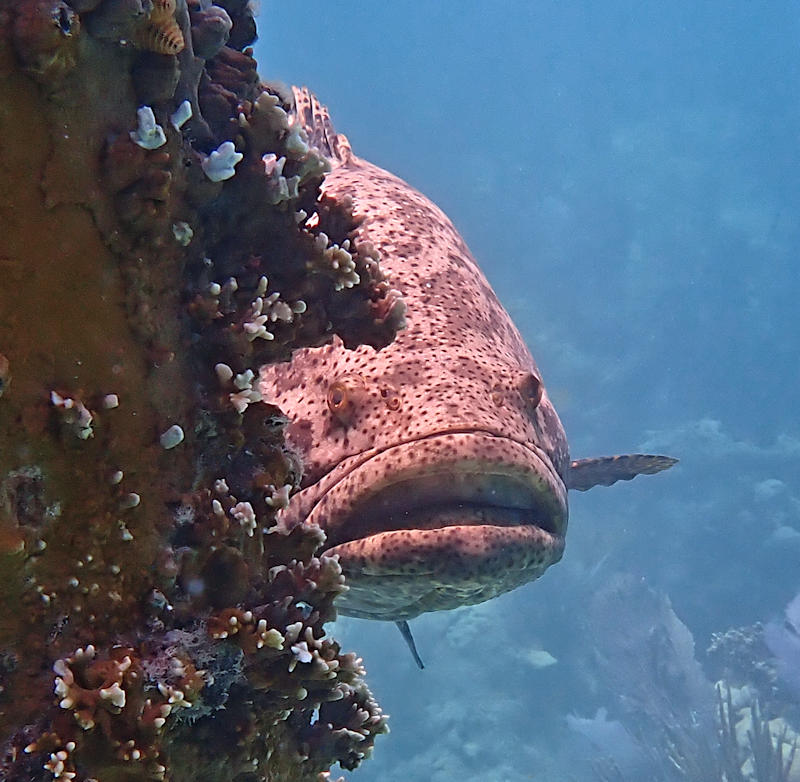
A piling was inhabited by a Goliath Grouper. These fish grow to be six feet long or more but this one was about half that big–but still a hefty fish. It was shy and moved around the piling as I tried to photograph it.
Bliss had decided to return to Marathon to tend to an injury and when we were done with the dive we followed them back to Marathon. Well, the injury turned out to be a broken rib, and since they were nearing the time when they were going home anyway, they decided to head on back to Punta Gorda. We thought we might have to help them get the boat back home, but it looks like they will be ok. So yesterday, we said goodbye and headed south again. It is strange not having them following us.
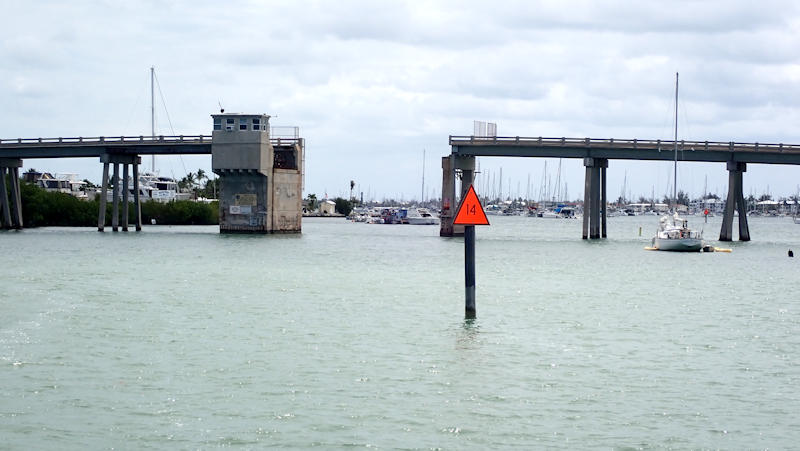
Whoever we meet, they will soon be our friends Whoever, they come and they go Say Farewell to our Friends And take up with the wind Sailing off to the Sunrise my friend
We are presently back in Newfound Harbor. Hope to dive Looe Key again tomorrow (the hookah is working now) and then sail to Key West. Weather looks good for a trip to the Dry Tortugas this weekend. But–who knows?!
Are We On Vacation, or Are We On a Boat?
April 22-28
Wow, it seemed like nothing was happening for a while then wham! It may take a couple posts to catch up. Reef photos coming up!
Well, after 3 days—or 5 days or 2 months, maybe years—of being stuck on the boat, not being able to get off because it was too choppy to launch the dinghy, we decided we had enough of Islamorada and took advantage of the bad diving weather (but good sailing weather) to head back to Marathon.
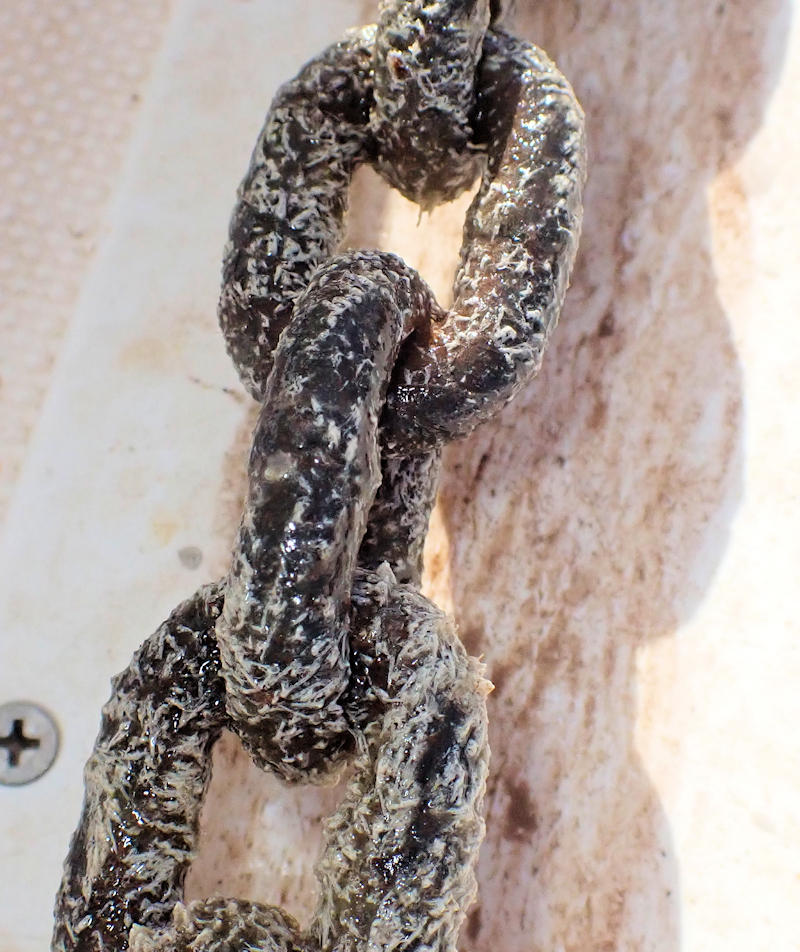
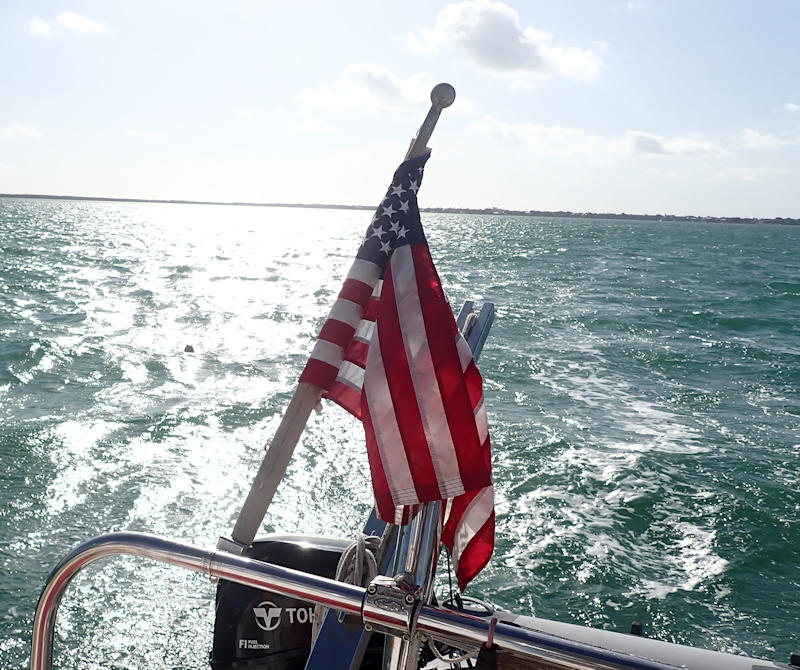

Bill ordered the new gas tank for the hookah and we looked forward to some nice diving weather later in the week. Once back on the mooring ball in Marathon, I found that I had finally settled in to cruising mode. Living on a boat is not a vacation. Oh yes, we do sit out on the deck and watch the sun go down with a couple of drinks. I love moving around and having this self-contained world follow wherever I go, and the exercise and fresh air does wonders for my health. Living in this self-contained world does take some management and logistics, though. Things we take for granted on land, like water, and sewage and trash disposal, provisioning and laundry have to be planned for. Finally, I was in the groove and starting to enjoy it.
PU! No shower for days No laundry for weeks The trash piles up The head overflows It's a cruiser's life, It's a cruiser's life, It's a cruiser's life for me!
We are lucky to have a reverse-osmosis system that desalinates sea water otherwise we would have to buy water from marinas or cart it to the boat in jerrycans. Some boats, like our buddy boat, Bliss, have a system that collects rain water. In the US, sewage pump out is pretty much available everywhere. In Marathon there is a pump-out boat that services the boats weekly. This kind of life makes one very aware of resource usage and waste.
Returning to Marathon did allow me to get some kayaking in. There are excellent kayaking trails through the mangroves.

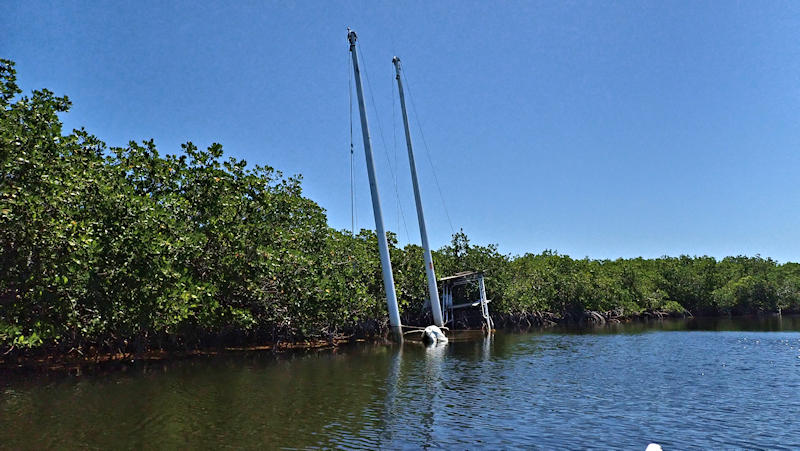
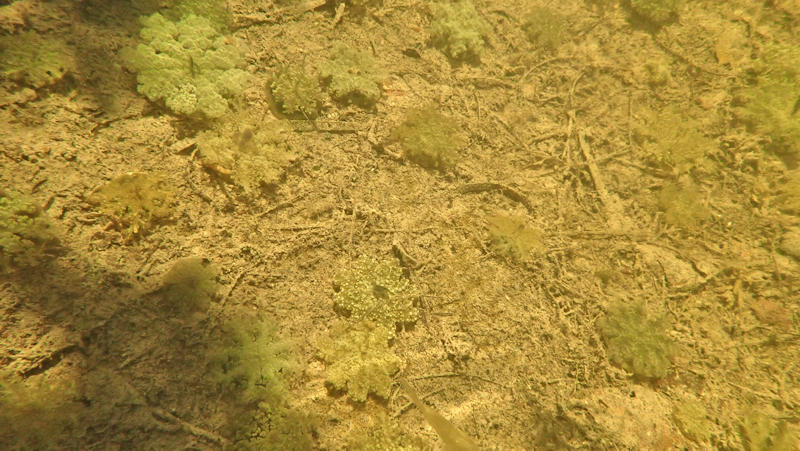
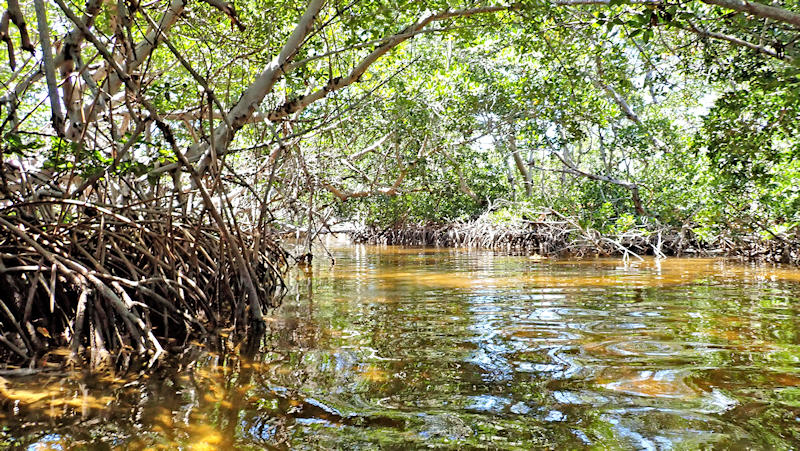
The hookah parts came in quickly and Bill got it running again. There was finally a somewhat calm day and we set out for a little patch reef called Coffin’s Patch. This was the first time we had been to this reef and we were not sure about the water depth at the mooring balls, so we anchored the boat a little ways off and launched the dinghy. The waves were still big enough so that it make launching the dinghy and loading the hookah a real adventure. We got it done, tied off to the mooring and jumped in.
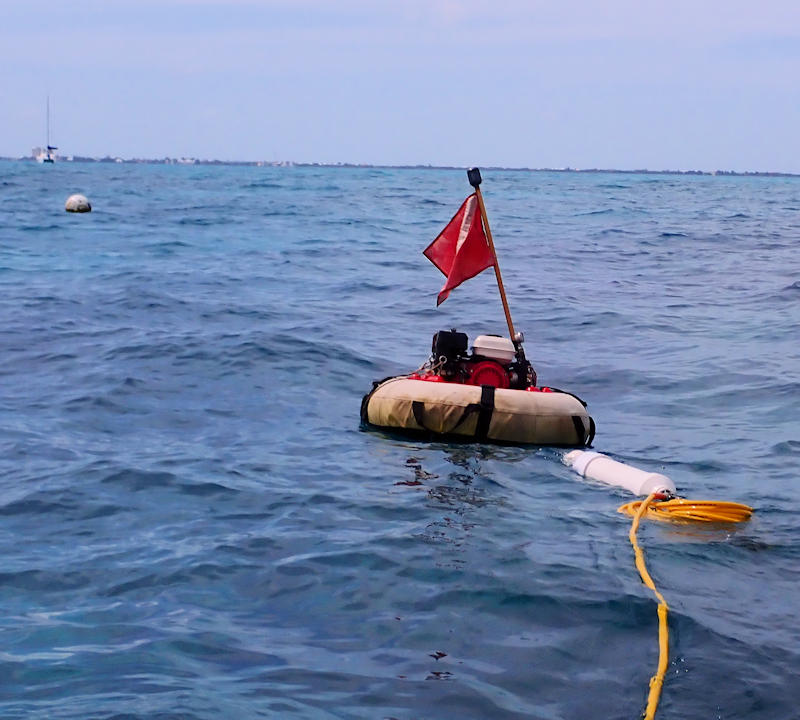
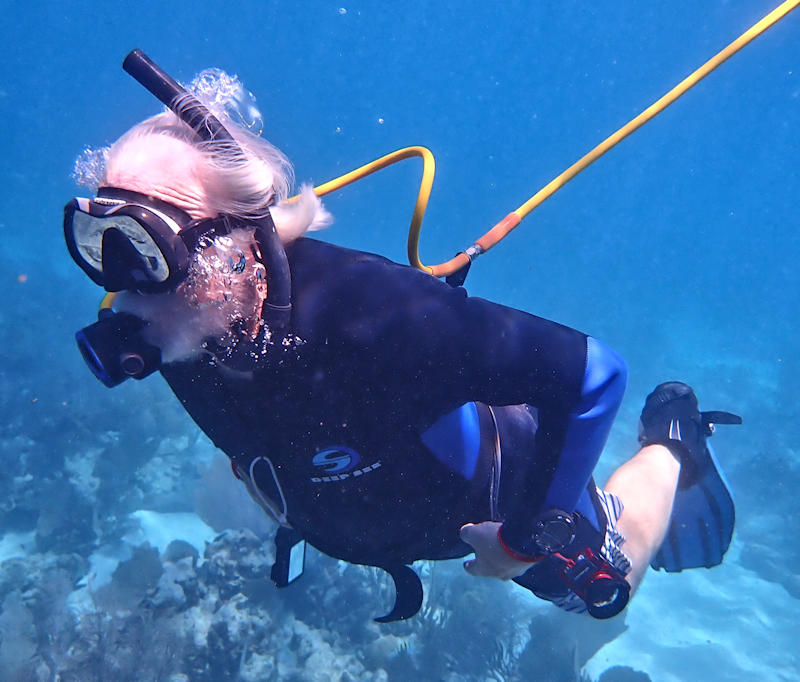
Now I’ve been talking about the hookah a lot and some of you may not know what that is. The hookah is a gasoline powered compressor that sits in an inner tube with hoses and regulators attached to it. We use it to breath underwater instead of SCUBA tanks. In out of the way places, like the Bahamas, it is easier to get gasoline than get SCUBA tanks filled. We find, even in really shallow water that you would not waste a tank on, we can hookah and see so much more than snorkeling and it is easier to take pictures.
This reef is beautiful!
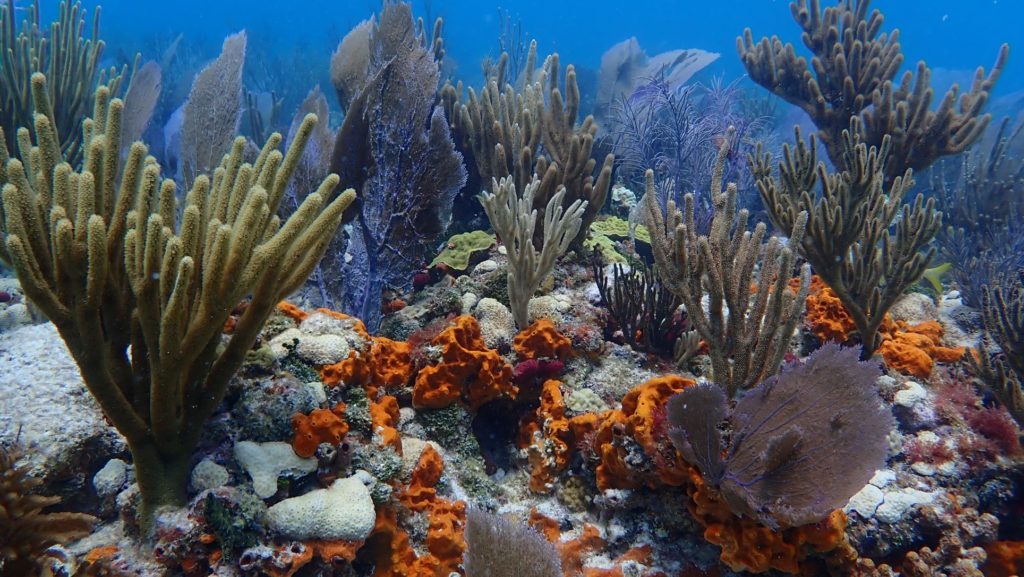
This protected reef is a group of small rocks covered with a forest of sea fans and sea whips (Gorgonians). In between are brilliantly colored sponges, zoanthid mat, and some small hard corals.
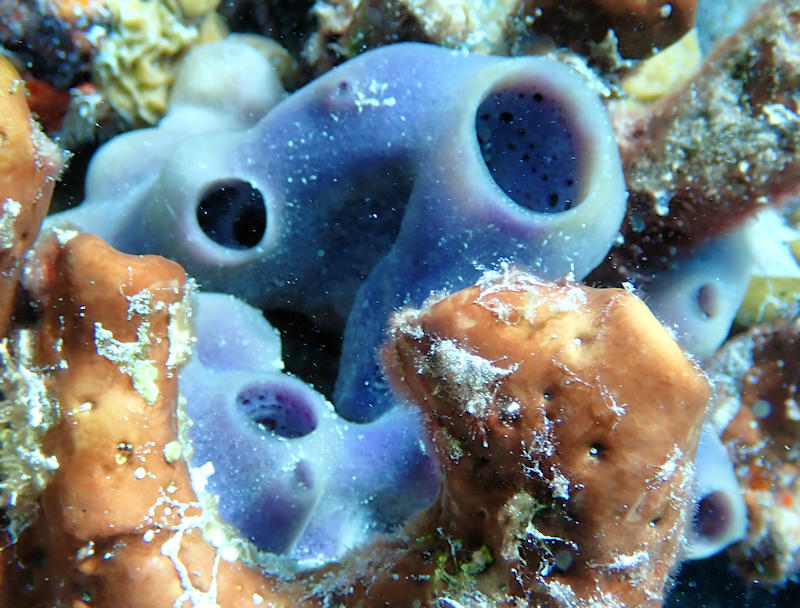

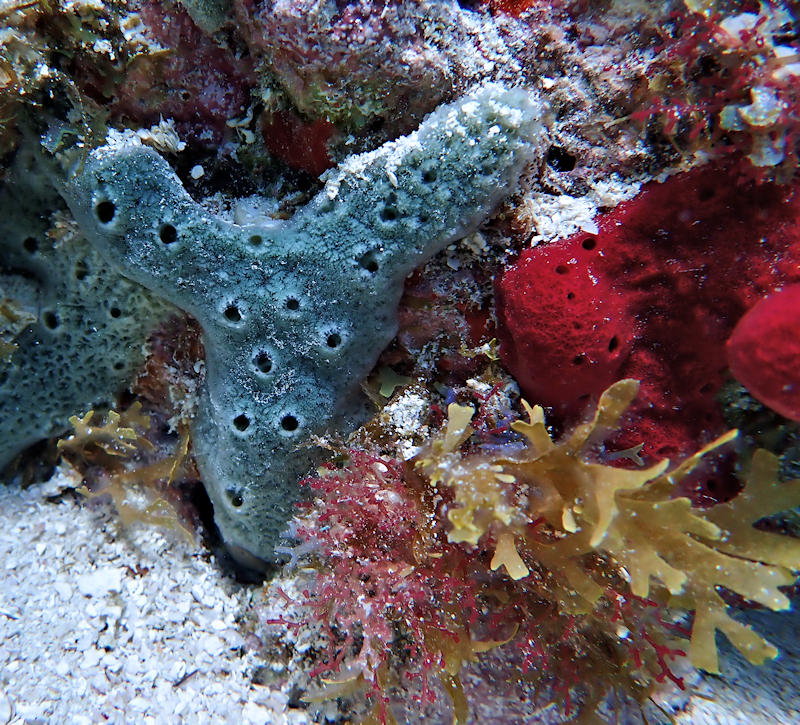
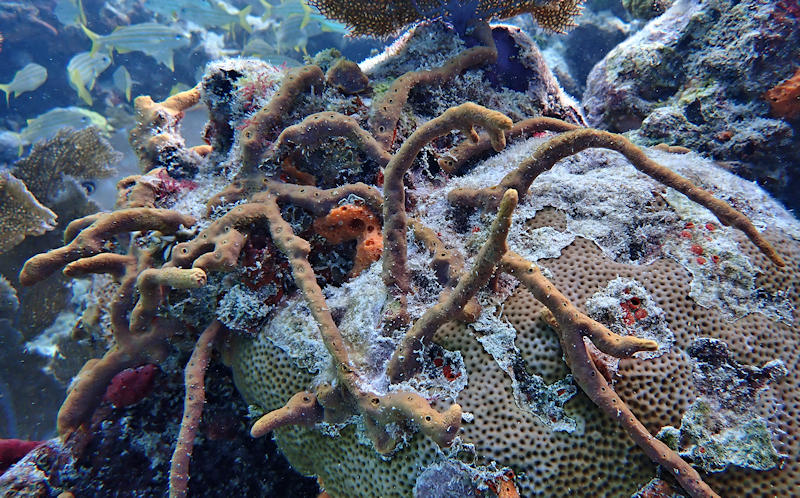

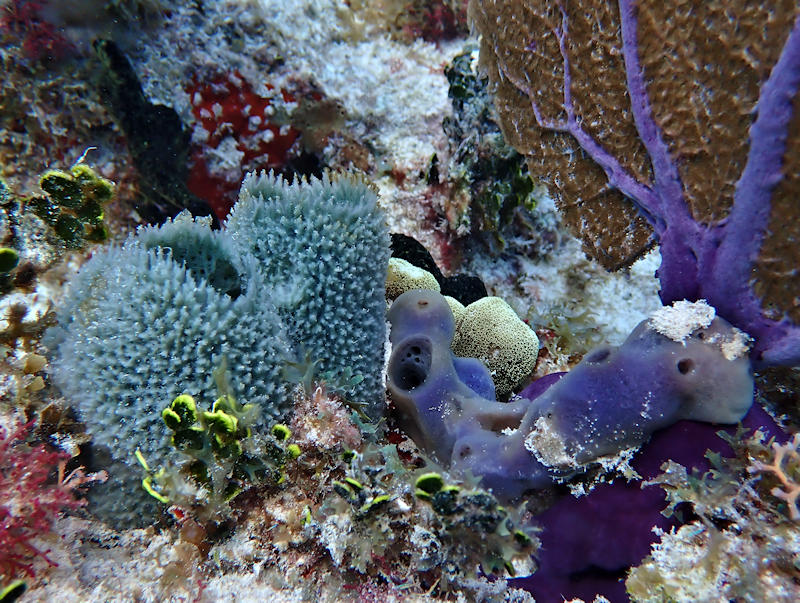
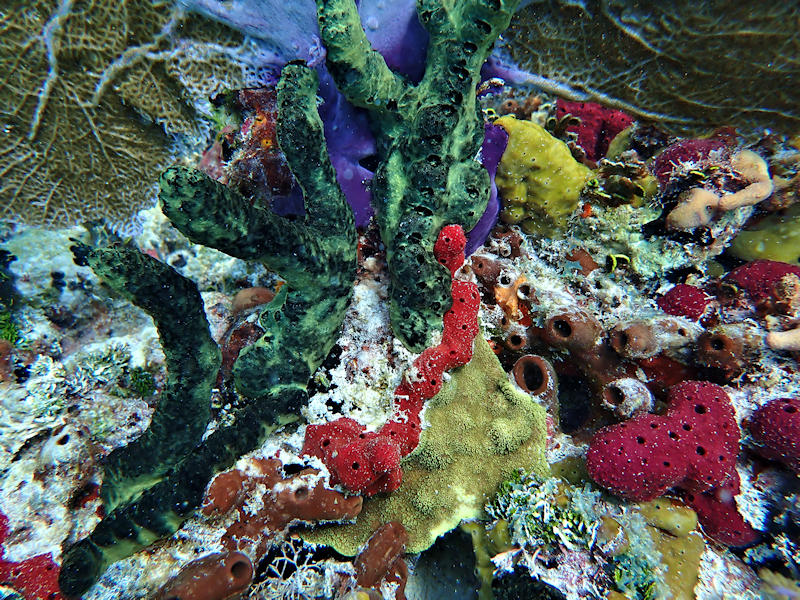

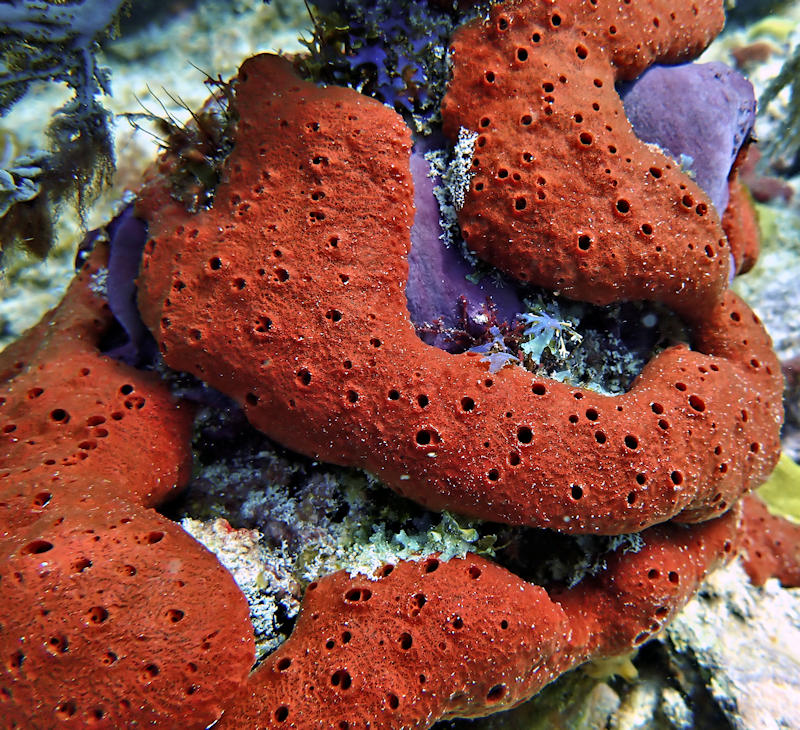
I love to photograph sponges because there are so many shapes, colors and textures. They can be difficult to identify, since species identification relies on the shape of tiny structures, called spicules, that the sponge animals make. Any identifications I show here are tentative.
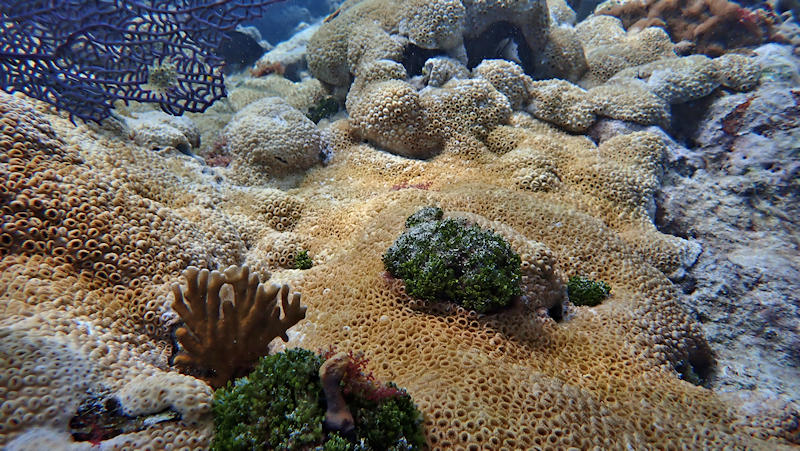
Zoanthids are related to corals but they do not make a hard skeleton. Each animal is a polyp joined together with many others to form a mat-like colony. These commonly overgrow bare coral rock and range in color from bright white to brown. Some zoanthids grow in sponges.
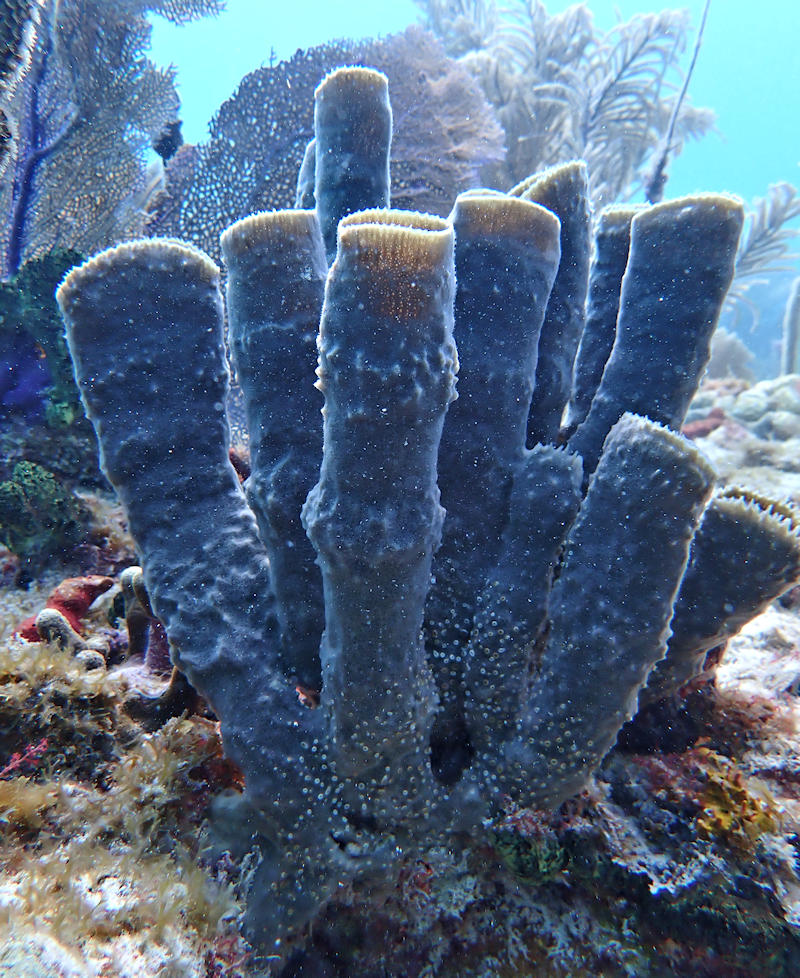
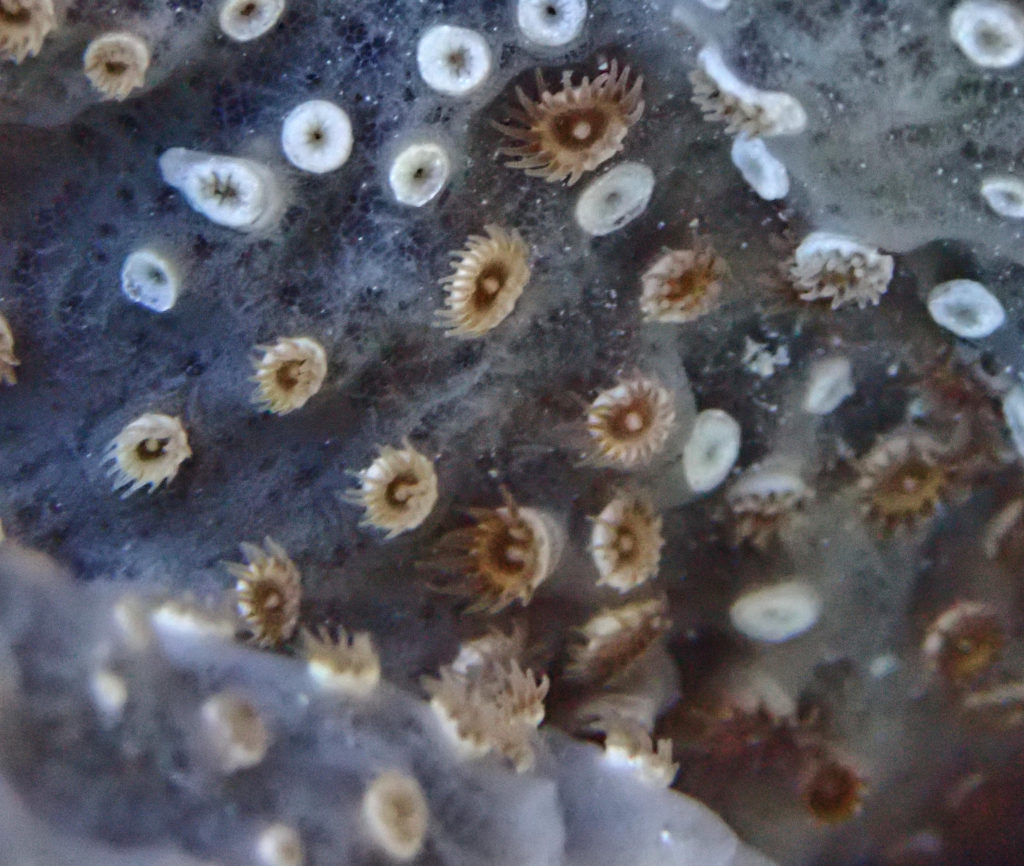
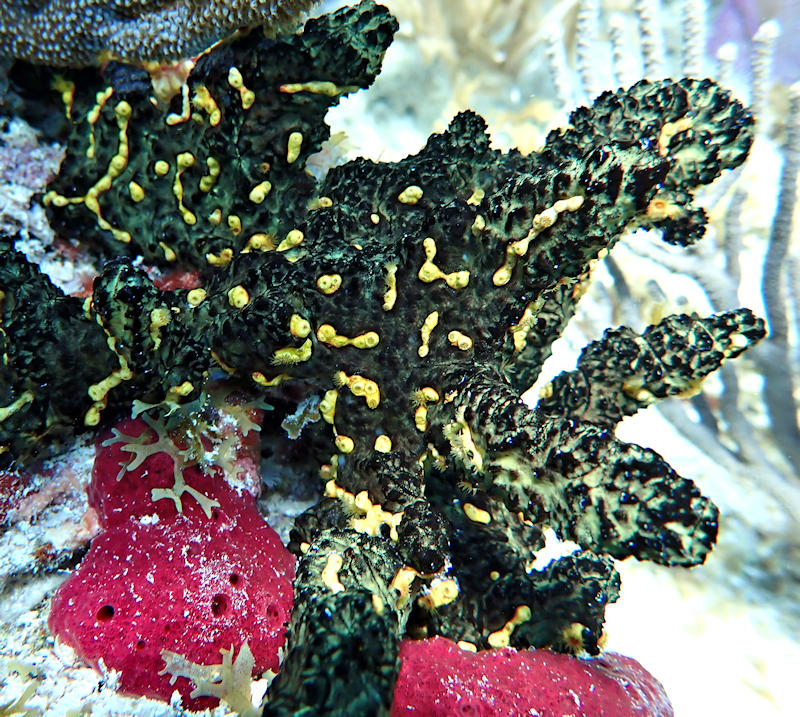
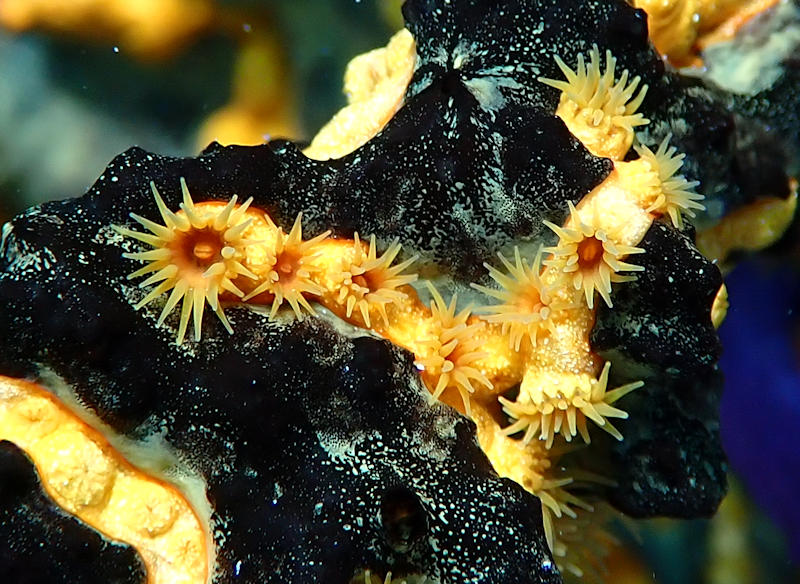
Hard corals were few and small but generally healthy looking. Coral in the Keys has been devastated by the Stony coral tissue loss disease (SCTLD). This disease can kill a large colony in a matter of a few weeks. In 2016 I photographed a large colony of Mountainous Star Coral in the northern Keys that I found completely dead 2 years later. Every piece of healthy coral I see gives me hope that someday the reefs will recover.
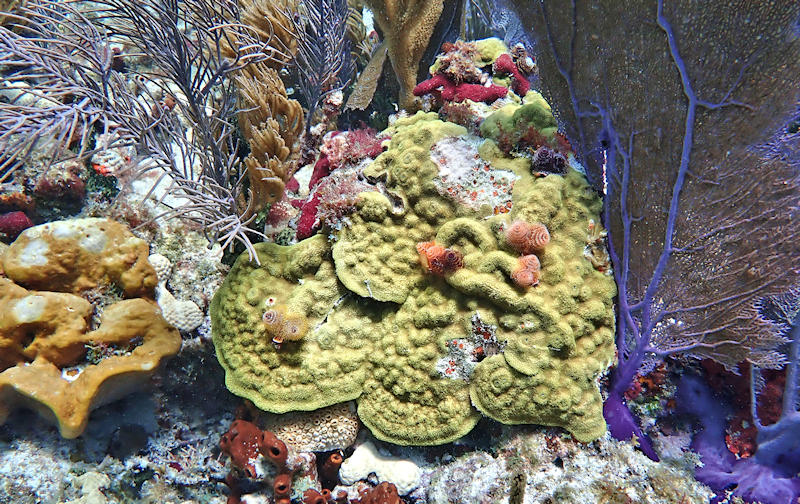
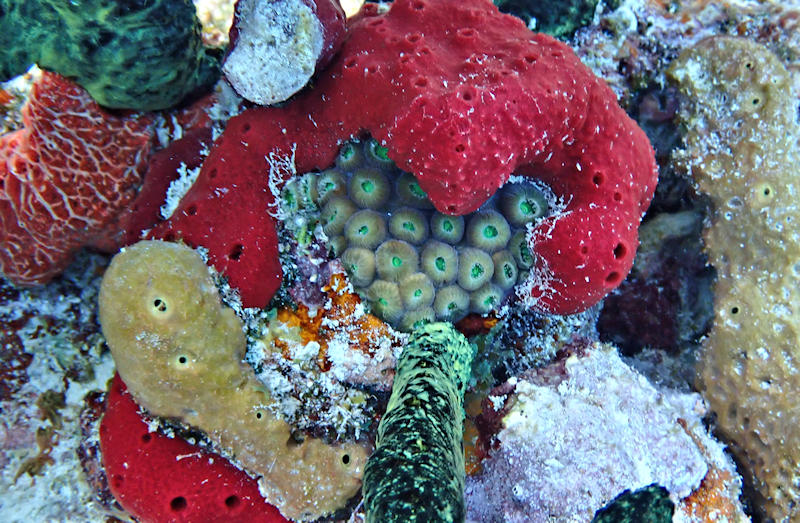
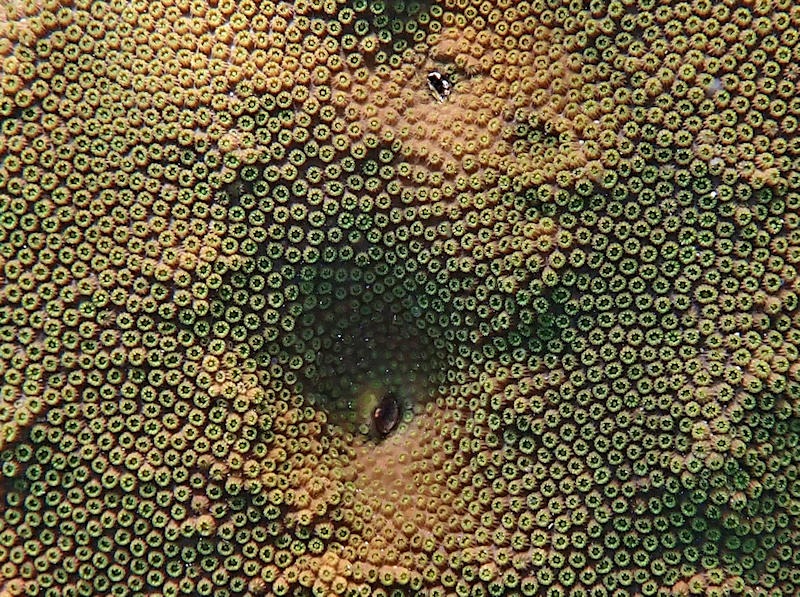
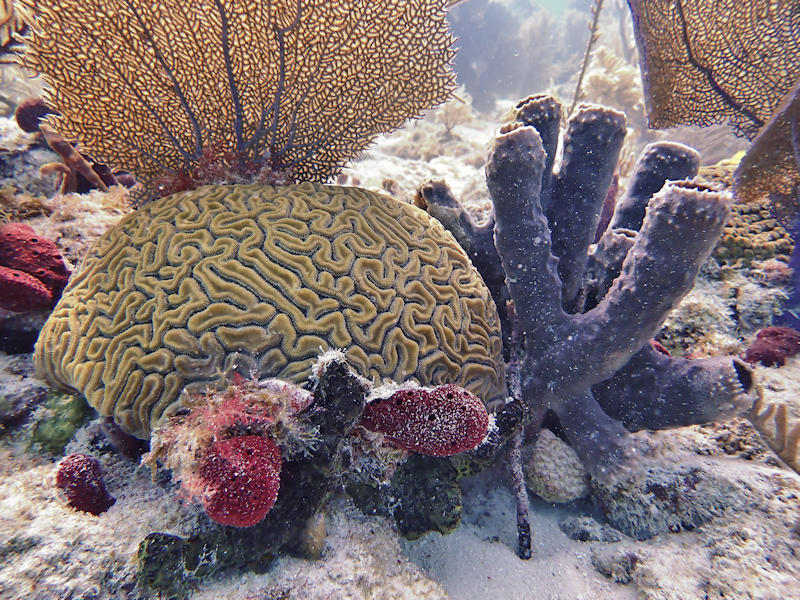
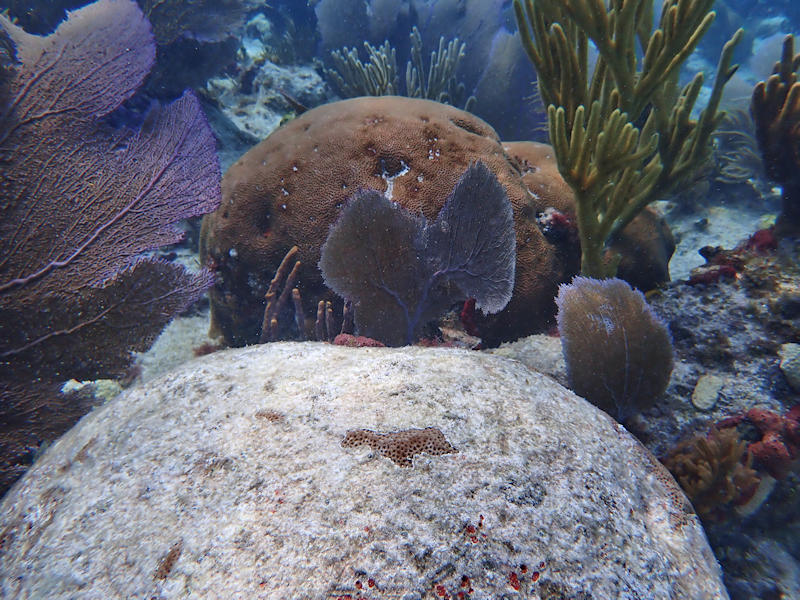
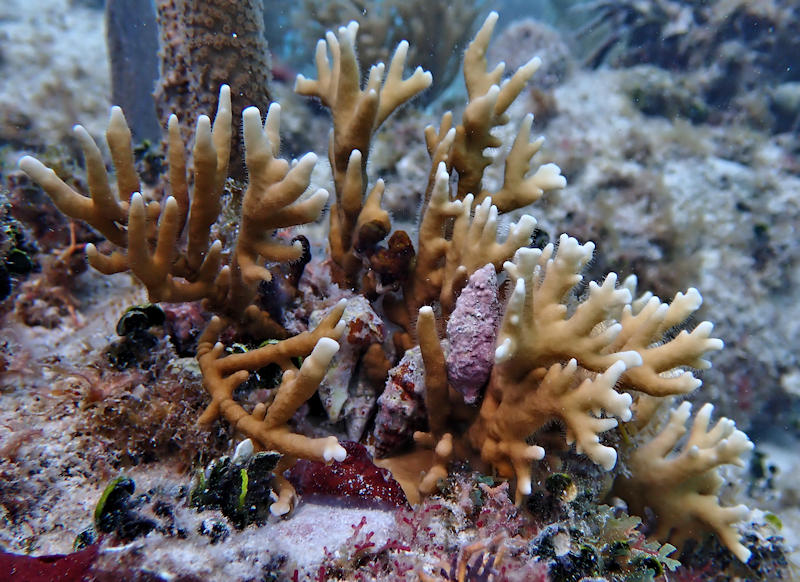
Note the mostly dead Massive Starlet coral in the foreground has just a tiny bit of live coral left–or maybe it is a new colonization.
I tend to stick my head under rocks and somewhat ignore the fish and scenery, but at this protected reef, the fish were plentiful and pretty cooperative.
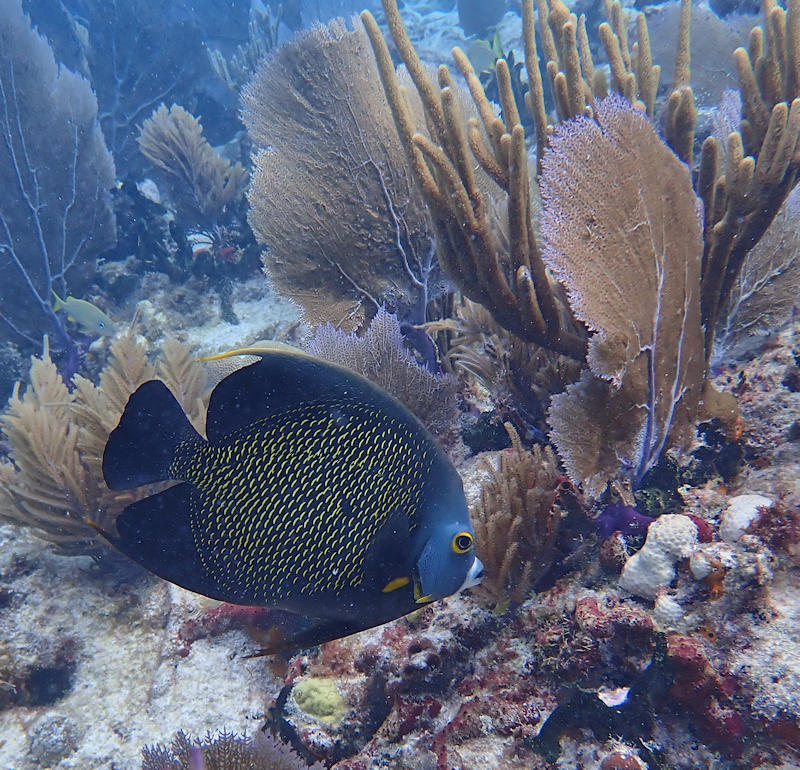

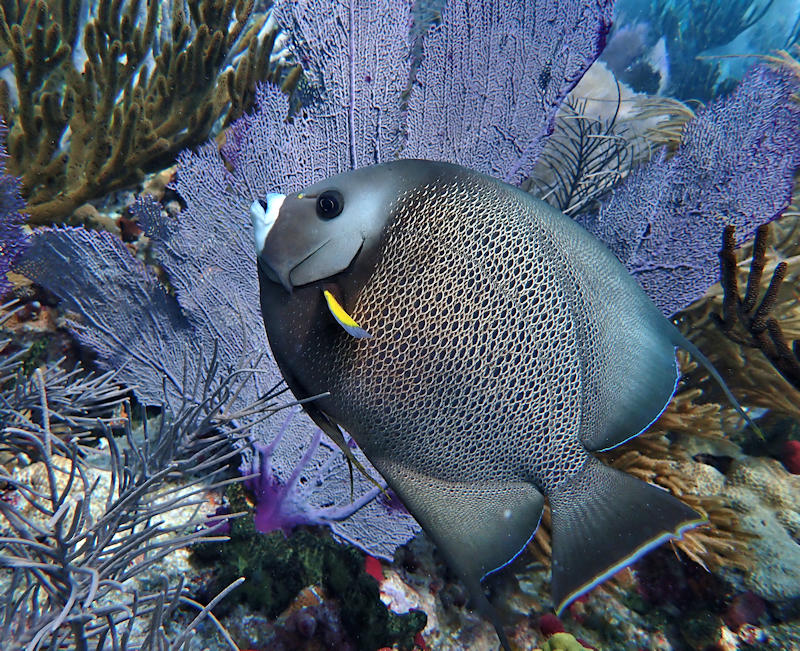

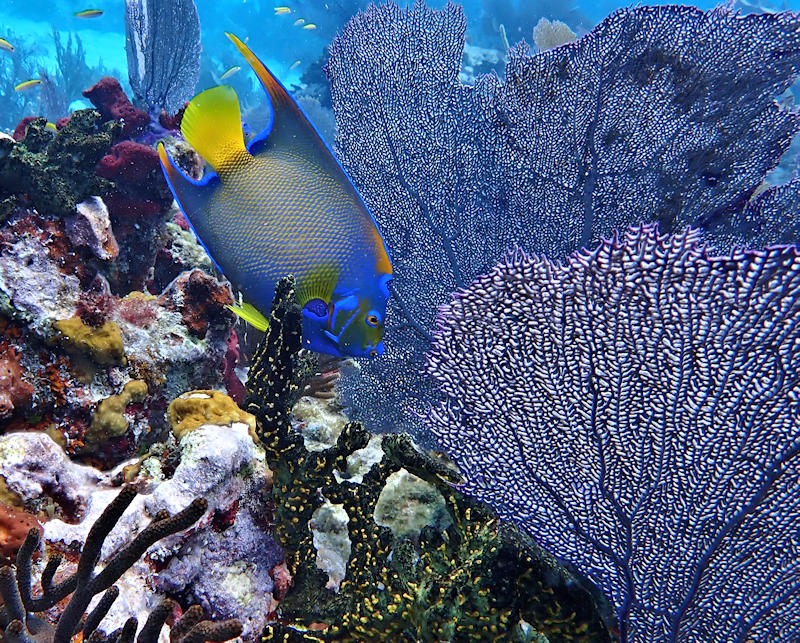
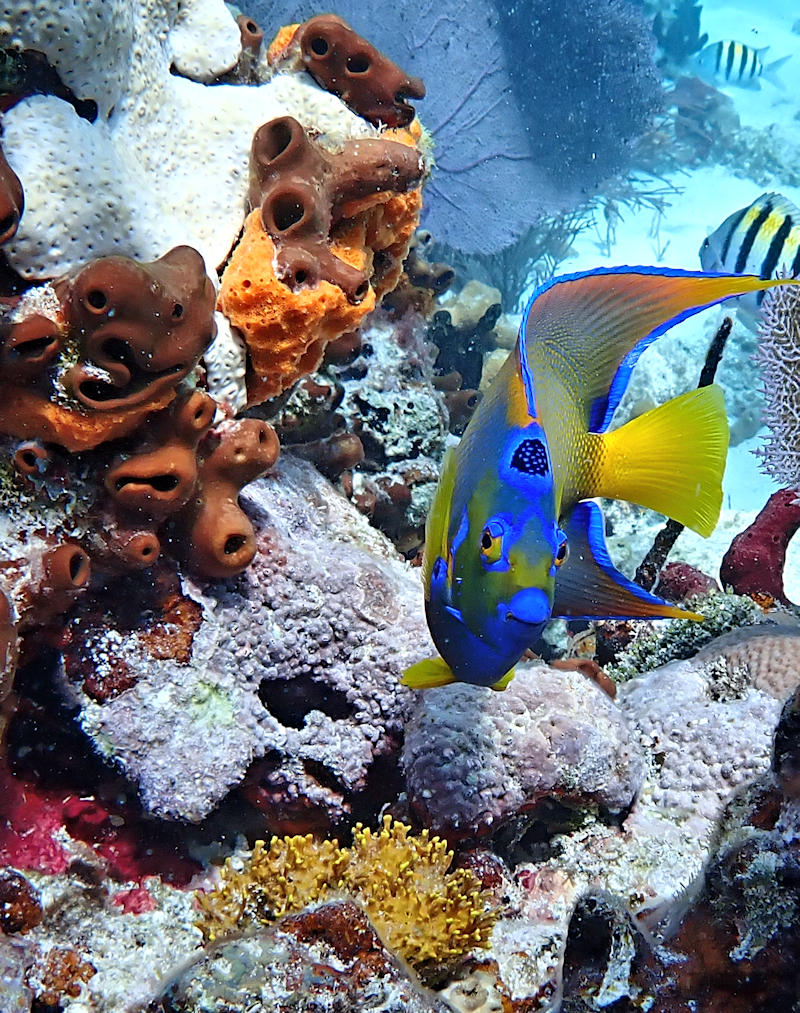
A diversity of Parrotfish is always present. These are the reef cleaners, using their hard beaks to scrape algae and coral from the rocks. The sand around coral reefs could be 80% or more from Parrotfish poop.
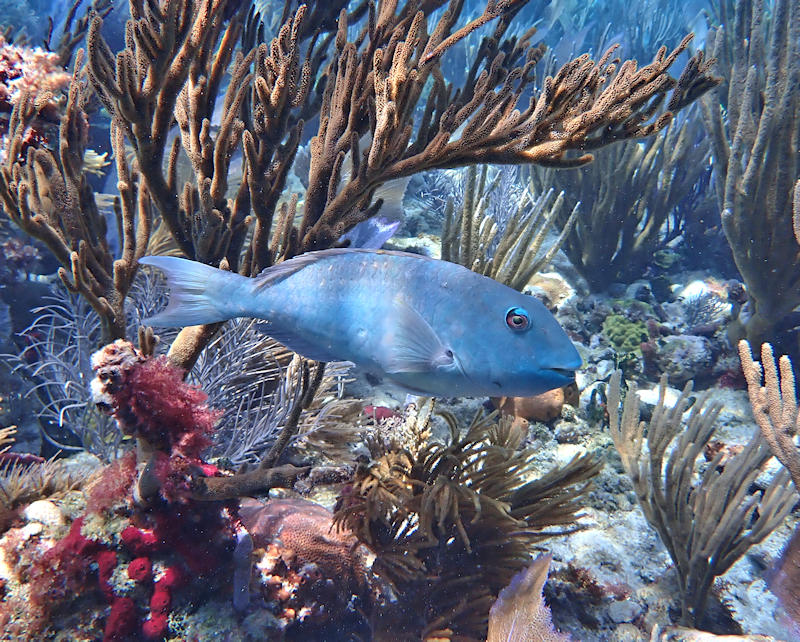
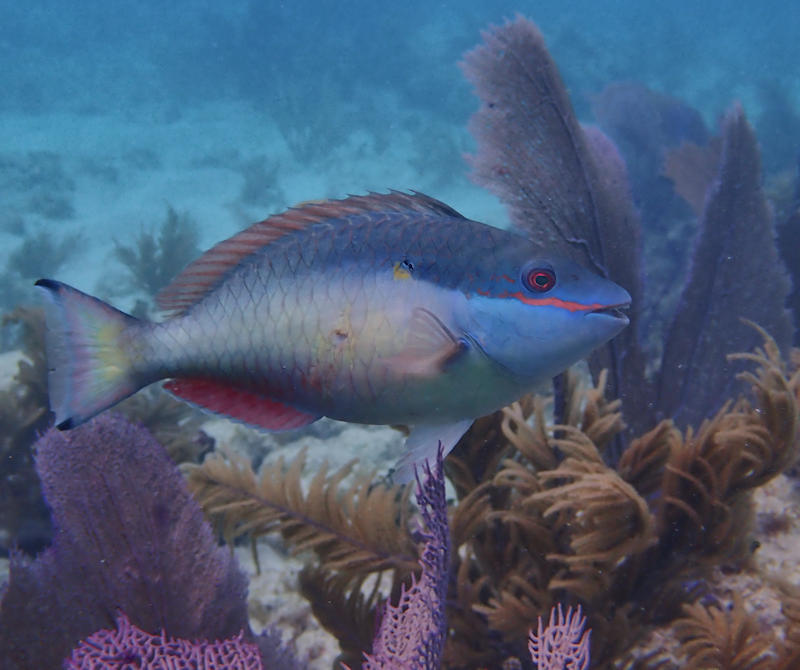
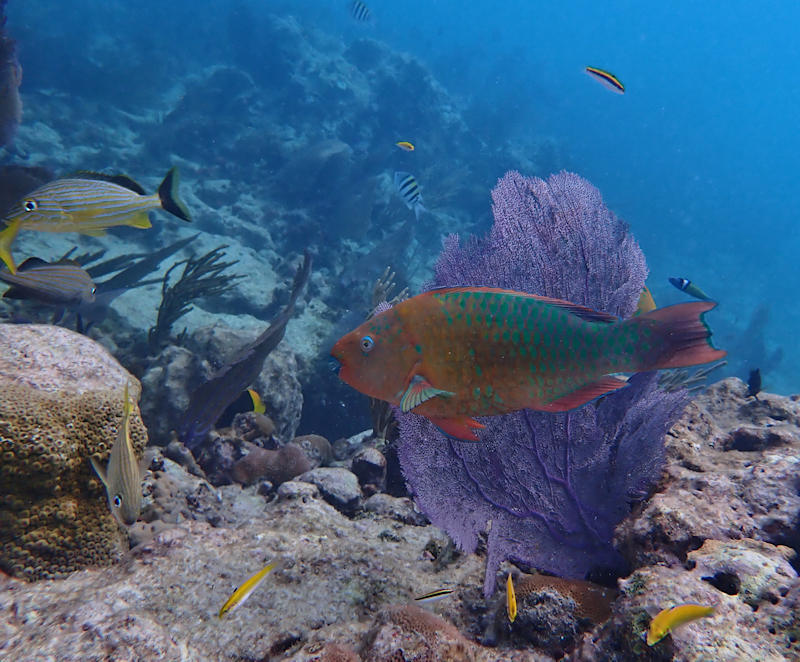
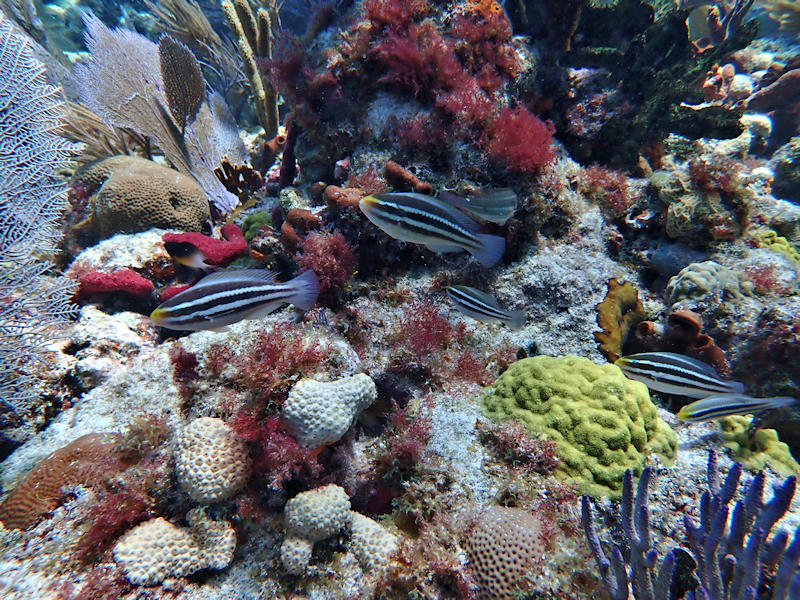
Parrotfish go through several color changes while they mature and may even go through a sex change. The Blue Parrotfish in the picture is in the process of transitioning. It has lost its yellow head and will most likely develop a blunt vertical nose as it matures into the terminal phase. Small schools of juvenile and initial phase Striped Parrotfish (last picture) are common zooming around amongst the corals. As I get more pictures of parrotfish, maybe I can show you more of the stages.
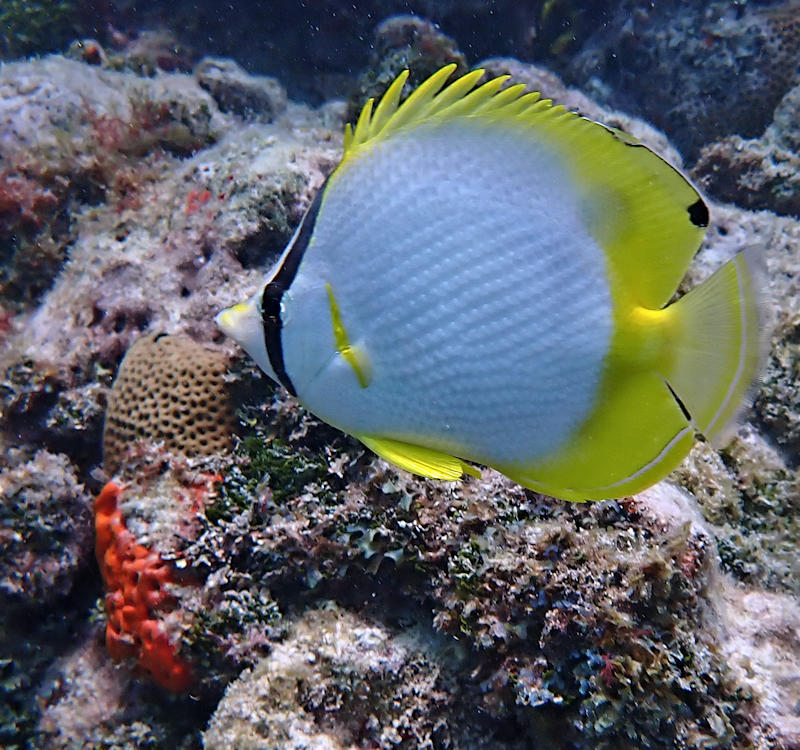
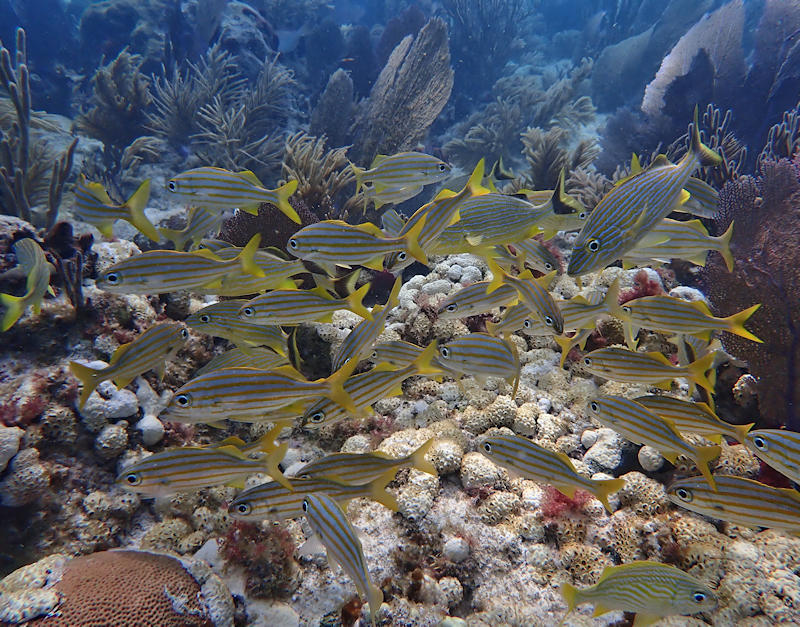
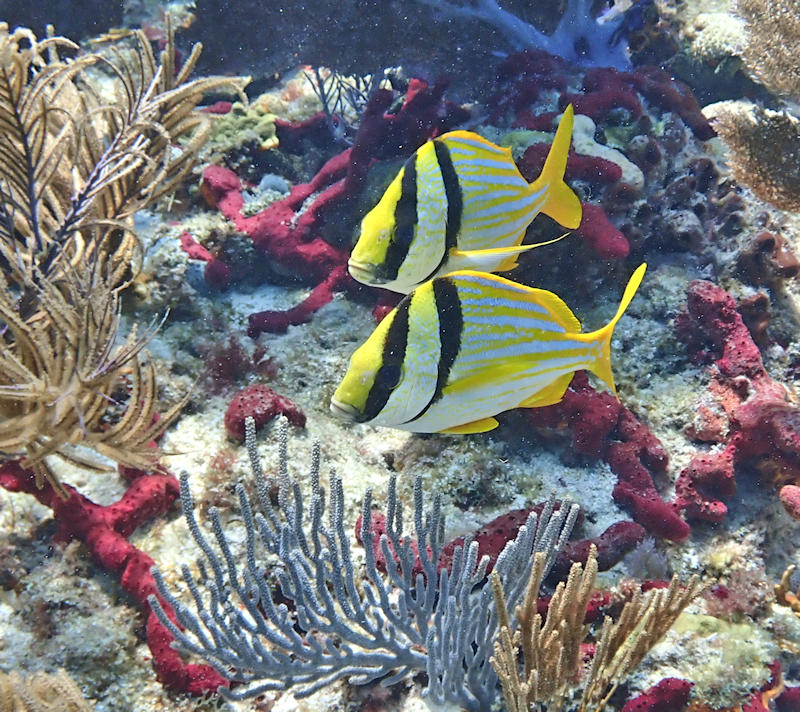
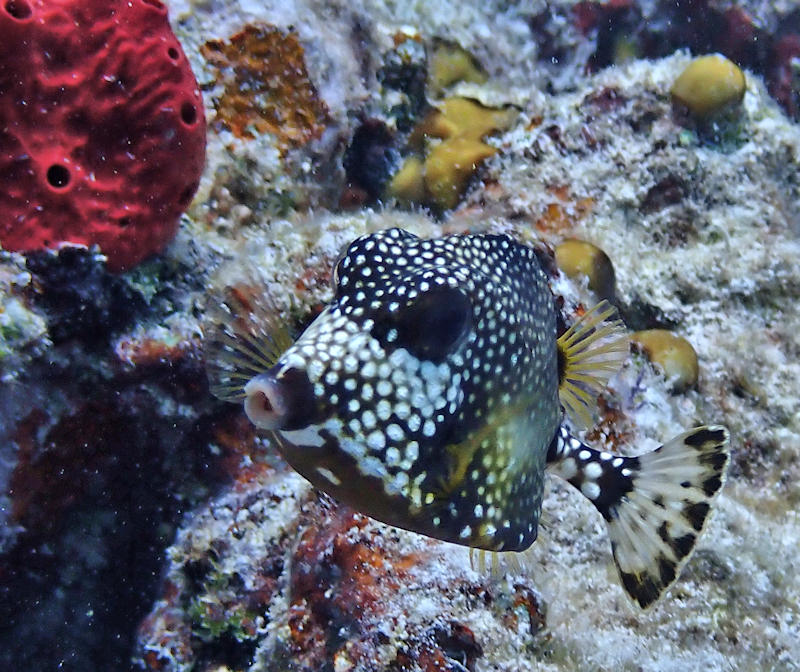
We were diving about an hour when Bill popped up and noticed the dinghy was no longer on the mooring and was drifting away. Luckily the wind had really died down and it was not too far—drifting towards the boat. It was a strenuous swim but we captured the dinghy and drove back to the boat. We went the next day in calmer seas and clearer water and afterwards went to Sombrero Reef.
When I’m diving I’m on vacation!
Stowaways
May 1
I haven’t seen Ms. Spider since I photographed her, but it appears that she has a boyfriend. I can tell it’s a boy because of the line down his abdomen and the dark modified pedipalps.

April 21
For several days I’ve noticed this little cutie crawling around the cockpit. She is probably about a half inch long. I don’t know when she came on board. In any case, after two days of being stuck on the boat because of the wind, I’ve just about done all the chores I want to and am reading a fascinating book about fungi, Entangled Life by Merlin Sheldrake. However, I’m not one that really likes to stay put for long and I got my camera out today to take a portrait of our little stowaway.
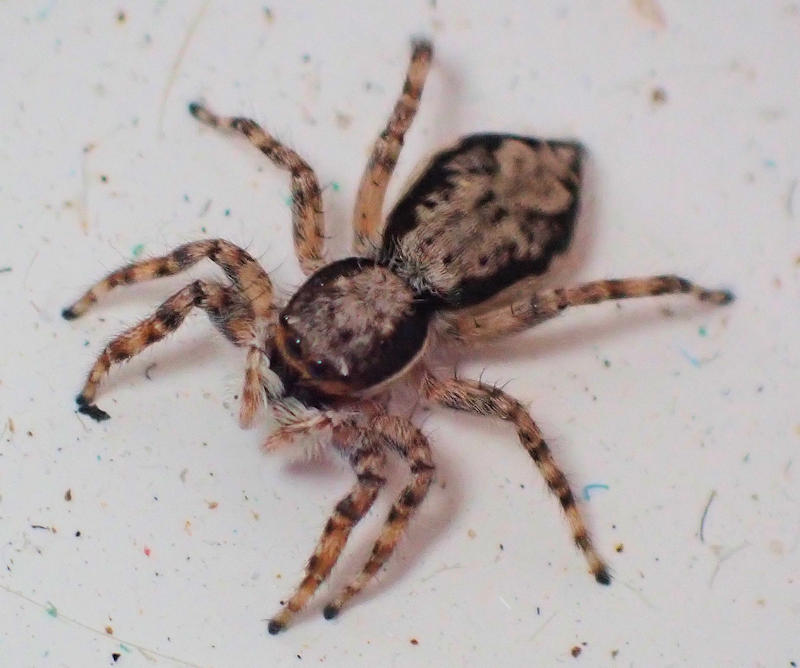
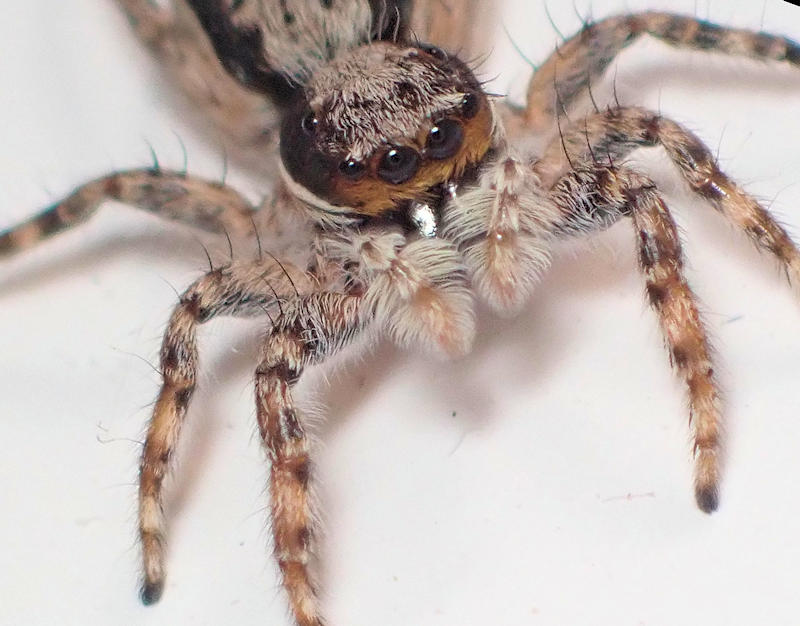
Isn’t that just an adorable face. Jumping spiders are my favorite. I believe she is a Grey Wall Jumping Spider (Menemerus bivittatus). This species originates from Africa but is common here in the southern US.
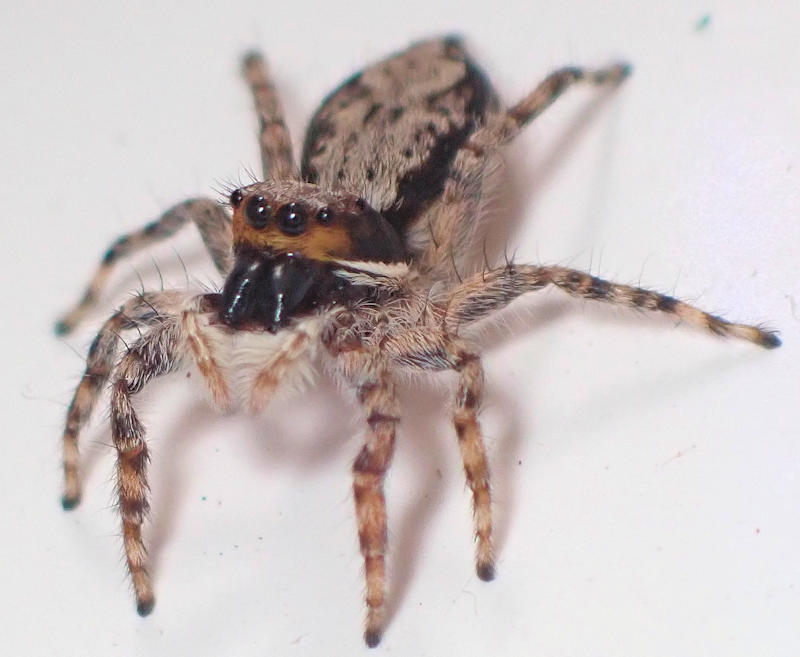
So I don’t know how much longer we will be here. Bill has ordered the hookah parts and we may try to make our way to Marathon soon.
Blowin’ In The Wind
April 14-19
For nearly three weeks, the wind has been blowing in the high teens and twenties. Cold fronts are still passing through about once a week so the weather has not had a chance to settle down to the summertime pattern of hot and calm sprinkled with small rainstorms. I know that when that finally comes we will be missing the cool breeze that comes through our hatches but right now I’d like it to let up for a couple of days.

We have spent our time doing odds and ends on the boat and going ashore to walk around. Thursday we took a short trip up to the next bay, called Cowpens, in order to get a pump-out. Afterwards, we dropped the anchor and took a look underwater. The bottom was hard with a thin layer of sand. Loggerhead Sponges, anemones, star corals and a few ragged sea whips made it interesting. Bill spotted a Cornetfish, something we have not seen very often. It is similar in appearance to a Trumpetfish (that we see often) but has a long filament extending from the middle of its tailfin and blue polkadots.
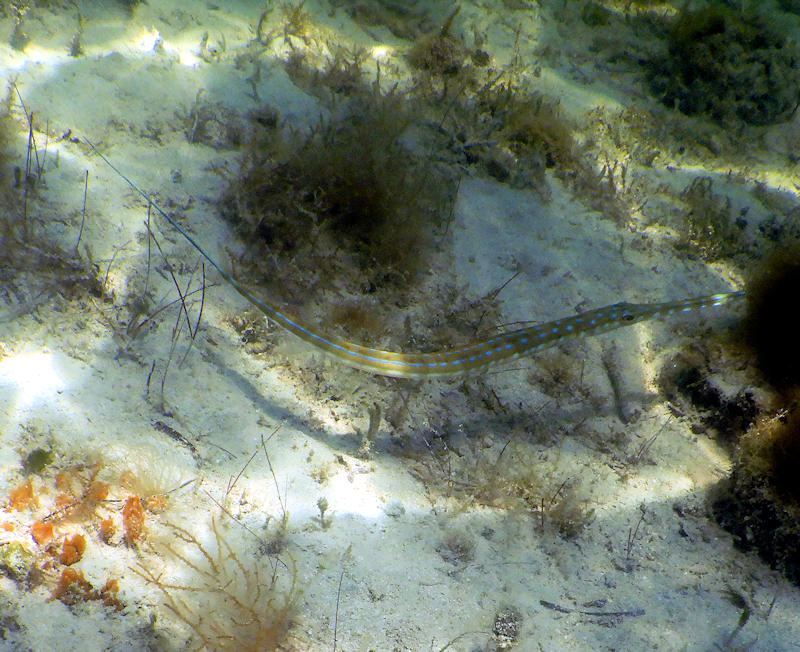
The bottom was too hard for adequate holding so we made our way back to our Islamorada anchorage where there is deep worm sand.

Look for the Lugworm, It stirs up the sand. Put down your anchor The holding is grand.
On one day we took the boat over to the Atlantic side to see if we could dive the reefs. We headed out to Hens and Chickens reef but the water was still milky from the previous night’s winds. So we went out further and found the beautiful water but also found a 5-6ft swell from the southeast.
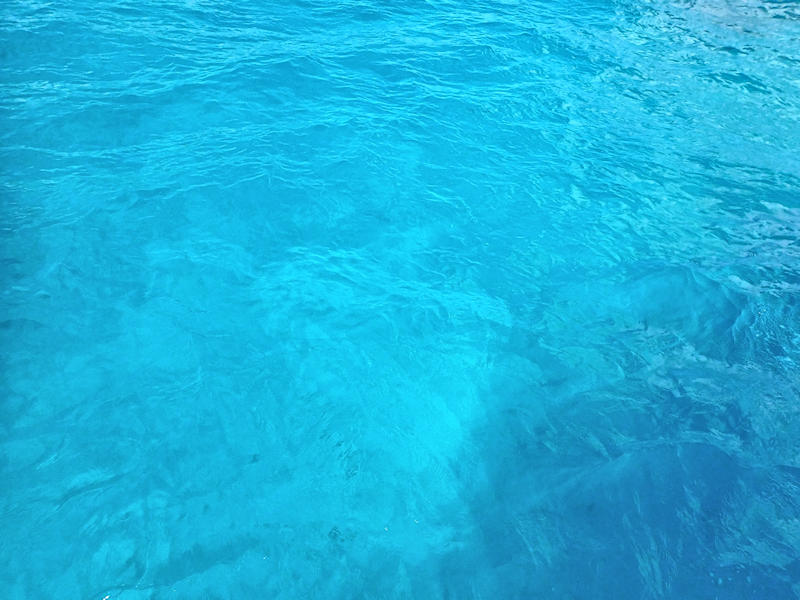
The hookah (a compressor that floats on an innertube and delivers breathing air to us underwater) is not workable in that kind of sea, so we turned back and started up the hookah back at Cowpens. We had a nice dive but the hookah cut off after about an hour. For some reason it used much more gasoline than expected.
Back at the Islamorada anchorage we are sheltered from the east and northeast, and Lorelei’s, with their yummy Key Lime Colada, good food, and live music is a nice diversion. We can do a little snorkeling around and have finally scraped five months of barnacles off the bottom of the boat.

(Solenastrea hyades)


(Cladocora arbuscula)
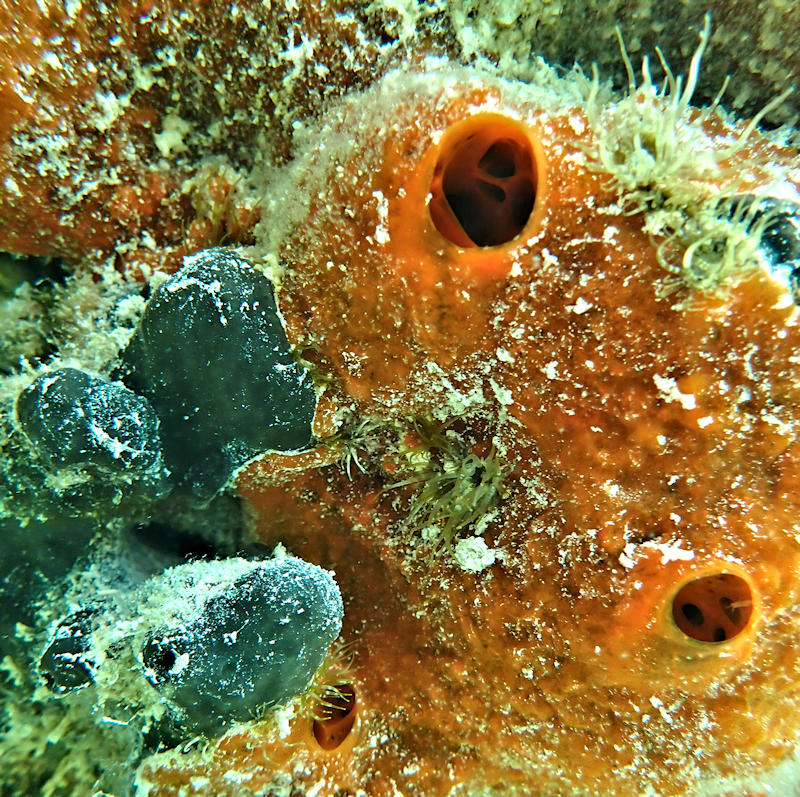
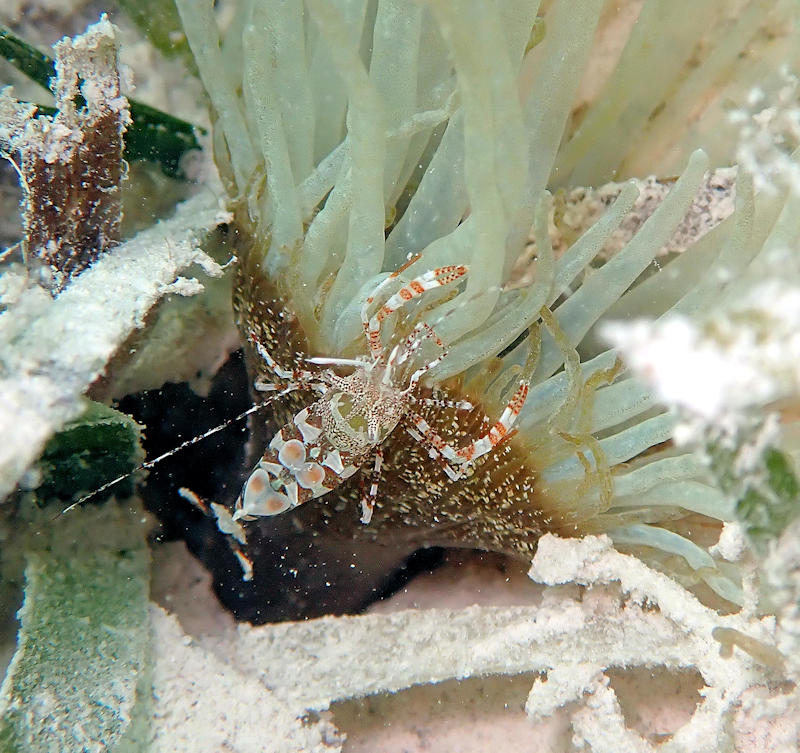
(Periclimenes yucatanicus)
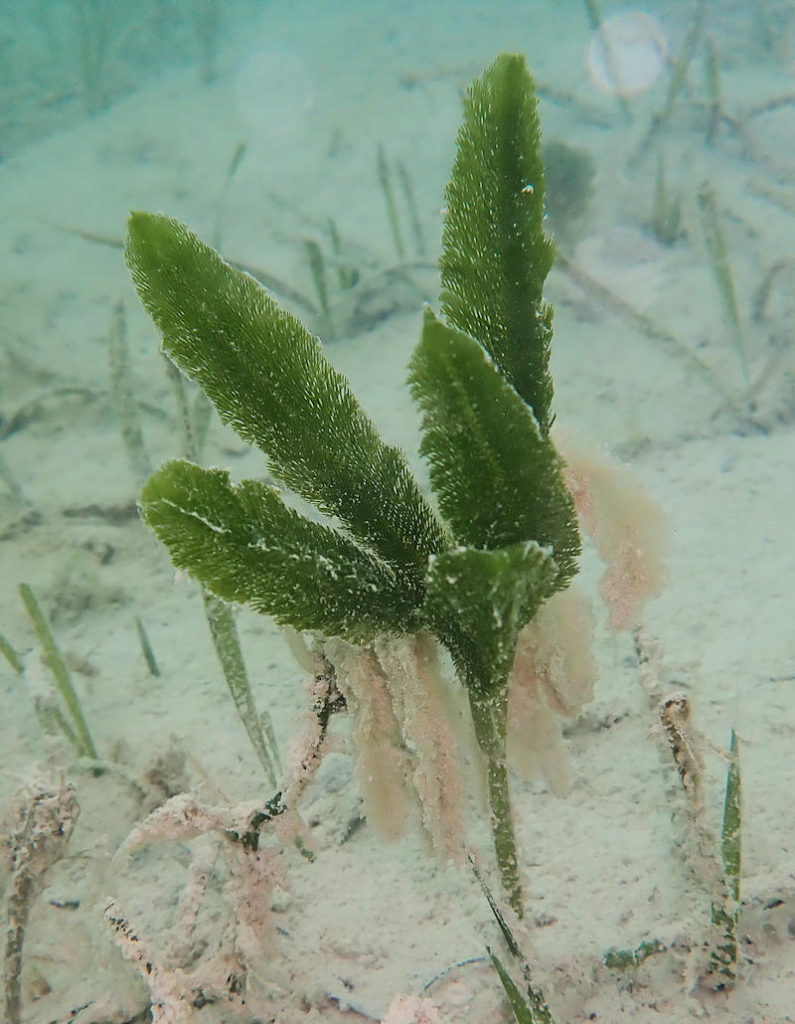
(Caulerpa paspaloides)
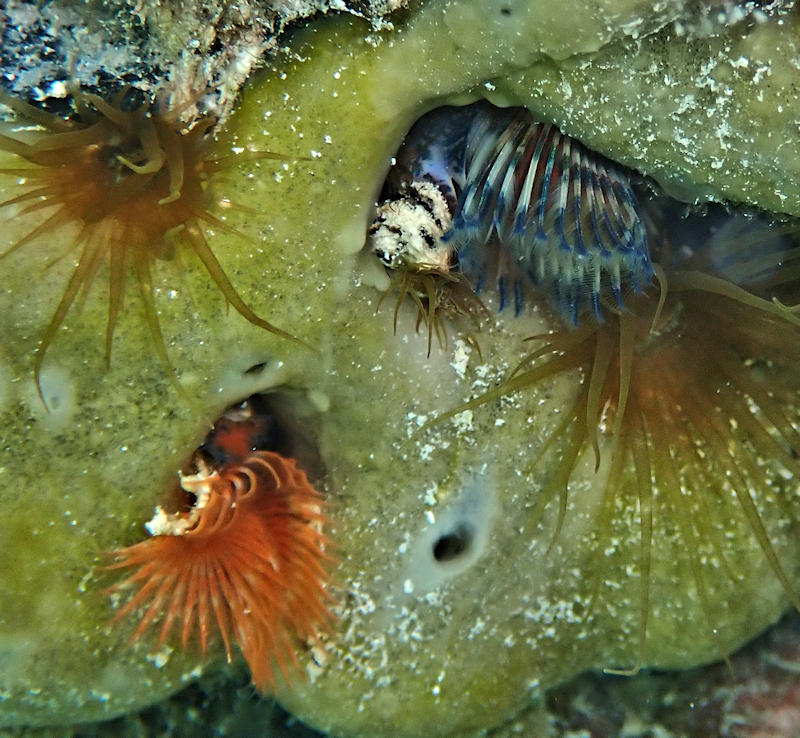
(Pomatostegus stellatus) and Sponge Anemones
Although I’m not usually one for tourist traps, I really enjoyed a visit to the History of Diving Museum. Bill and I have been diving for over 50 years and we have actually owned some of that equipment seen in the museum. They had a fascinating display of reconstructions taken from plans for diving equipment created hundreds of years ago and a collection of dive helmets from all over the world.
Another cold front passed last night and it looks like we will be here for another few days. Oh, and the hookah has a leak in the gas tank so, as soon as the weather allows, we will be headed back to Marathon where we can get parts delivered.
There are worse places to be stuck in.
Getting My Gills Wet–Finally
April 13
Although it’s still unseasonably cool and windy, when I looked down into the water today and could somewhat see the bottom, I said, “After nearly three weeks in the Keys it’s time to get in the water.” So I put on my wetsuit and took the polar plunge. I had a new mask to check out also. One of these low volume masks I saw in a shop the other day. It fit nicely and the lenses being so close to my eyes give me good visibility even though they are small. The visibility was maybe 10 ft–not too great but at this point, I was desperate. Here are some things I saw there:
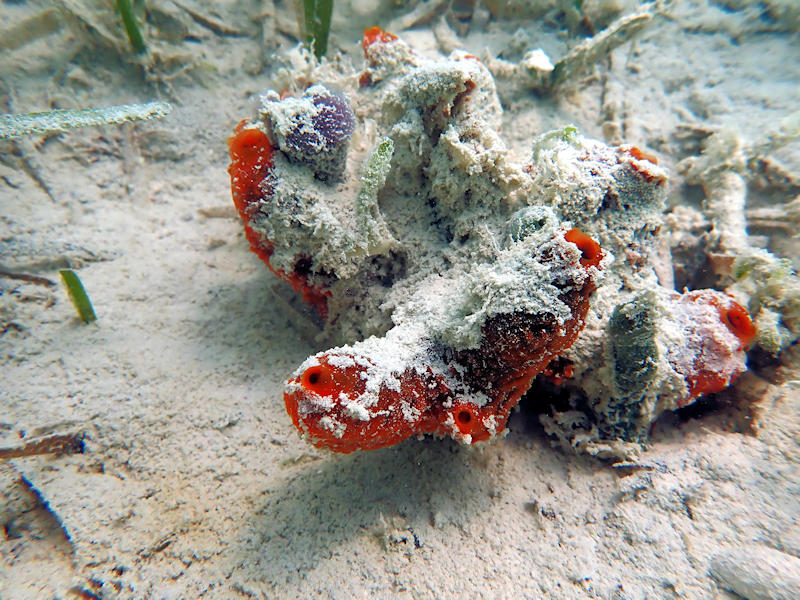
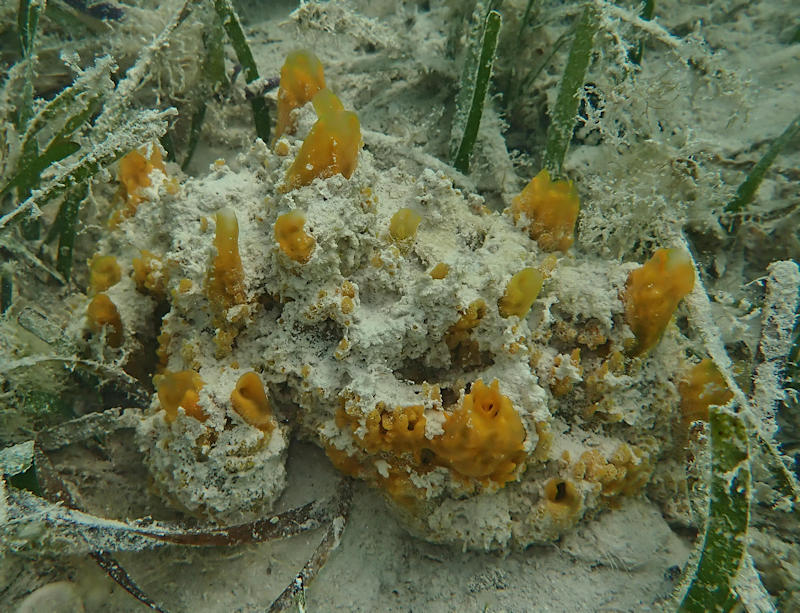
Colorful sponges dotted the bottom among the seagrass. Much is covered by silt here. Sponges are animals that consist of small separate cells that surround themselves in a body. The microscopic cells have small whips (flagella) that create water currents, bringing food and oxygen, that flow into the sponge body through small pores and out through larger oscula.
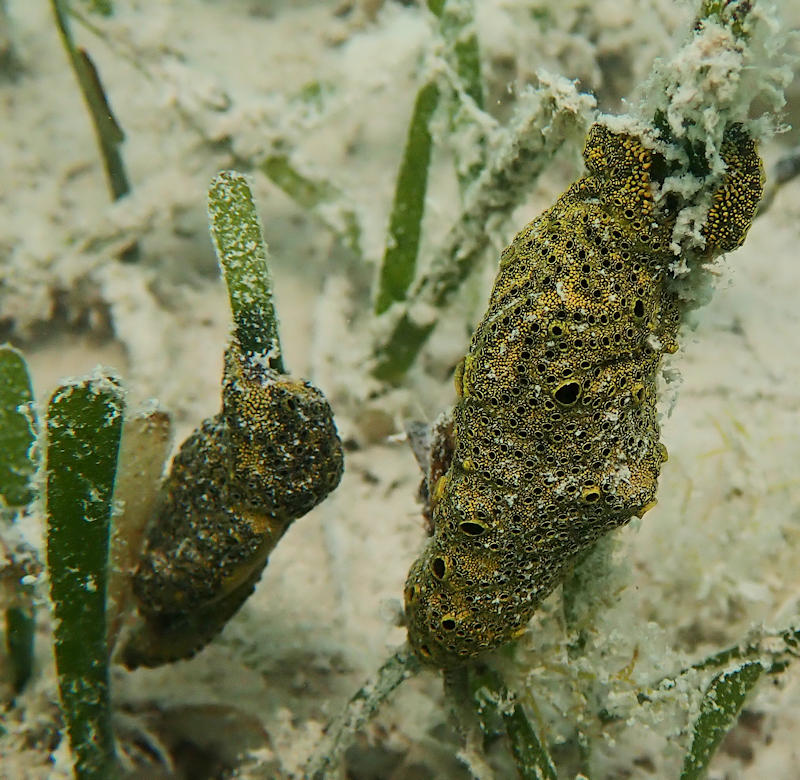
This may look like a sponge but it is an animal much closer to you than a sponge or snail or worm. This is a Tunicate. Tunicates have a free-living larval stage that has a notochord, kind of a pre-backbone. The tunicate larva settles on a substrate and transforms into a sessile creature with an intake and an outflow that passes water over gills that obtain oxygen and filter food. Unlike the sponge, tunicates have organs and even have eyes when they are larvae. The tunicate in the picture is colonial, which means that the original larva settled and then reproduced asexually. They smaller holes are the intakes and the larger ones are communal outflows servicing several animals. Tunicates, like sponges, come in various colors.
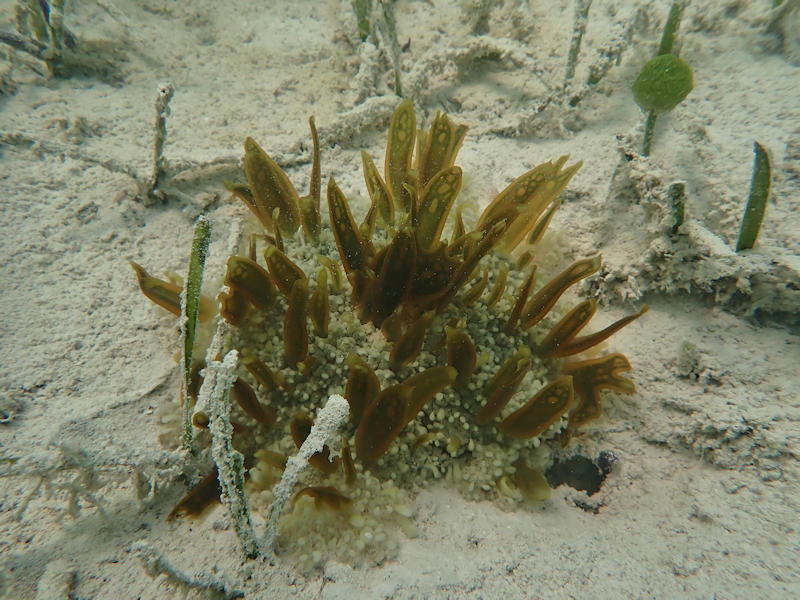
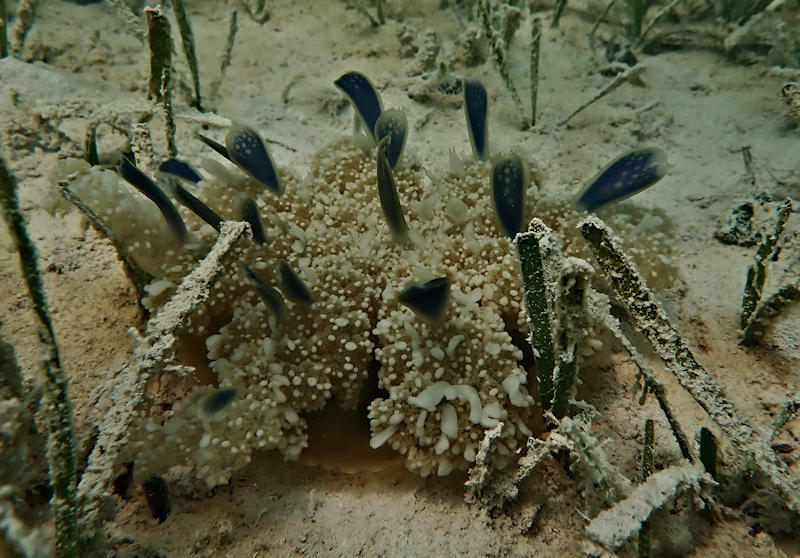
There were also quite a few Mangrove Upside Down Jellyfish. These sit on the bottom with leaf-like appendages filled with symbiotic algae.
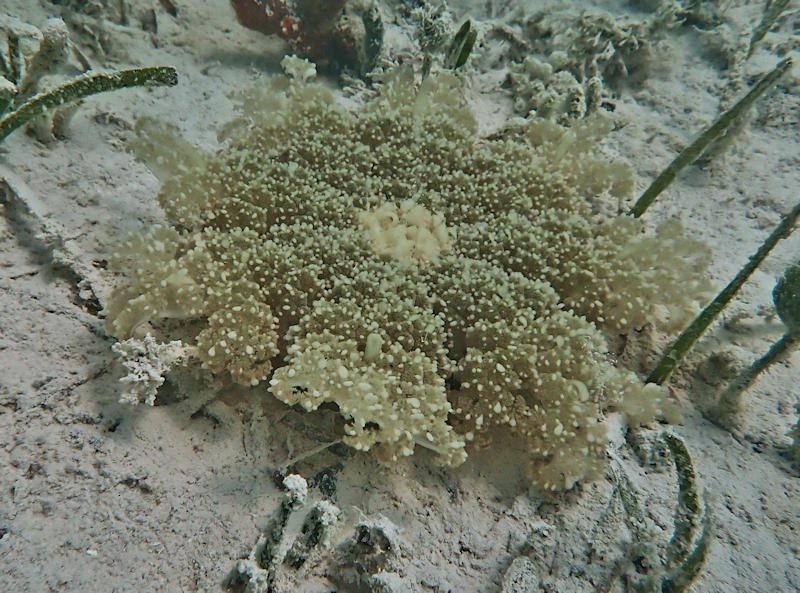
I also saw one of the other species that does not have the leaf-like appendages.
There was a patch of Corkscrew Anemones around a small black sponge. I did not see any shrimp living with them.
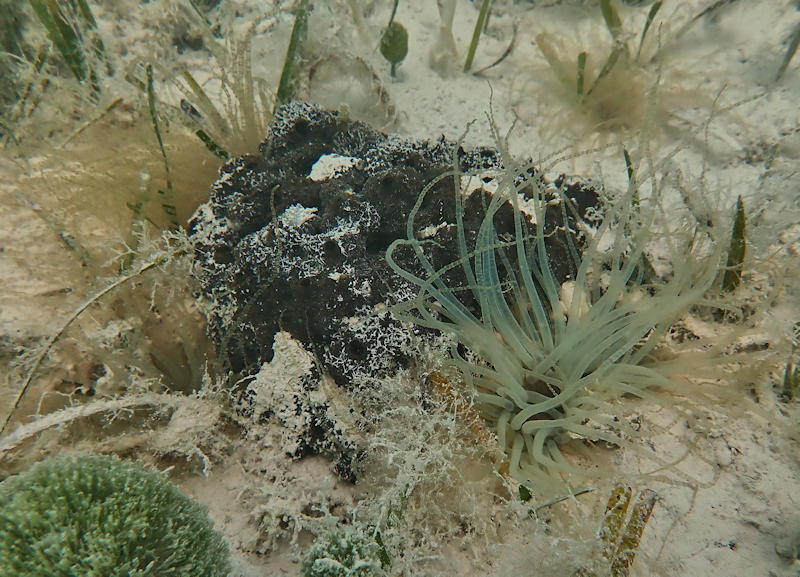
The Spagetti Worm's pasta Comes out of its head It's really not something You'd like to be fed
Spagetti Worms have long white sticky tentacles which it drags over the bottom to collect food. This one has built a tube of shell pieces and sand attached to the Turtle Grass.
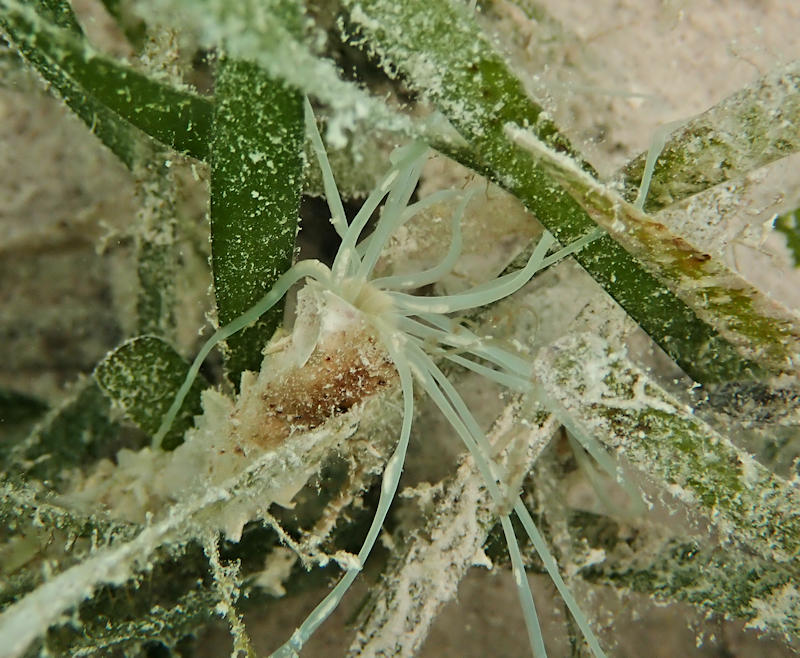
I found a place where some kind of debris had been dumped that turned out to be pretty interesting. Any hard substrate is prime real estate in the ocean since many critters like to attach. These hardy Star Corals are able to sluff off the ever present silt that would smother more delicate corals. I’m not sure what the species is.
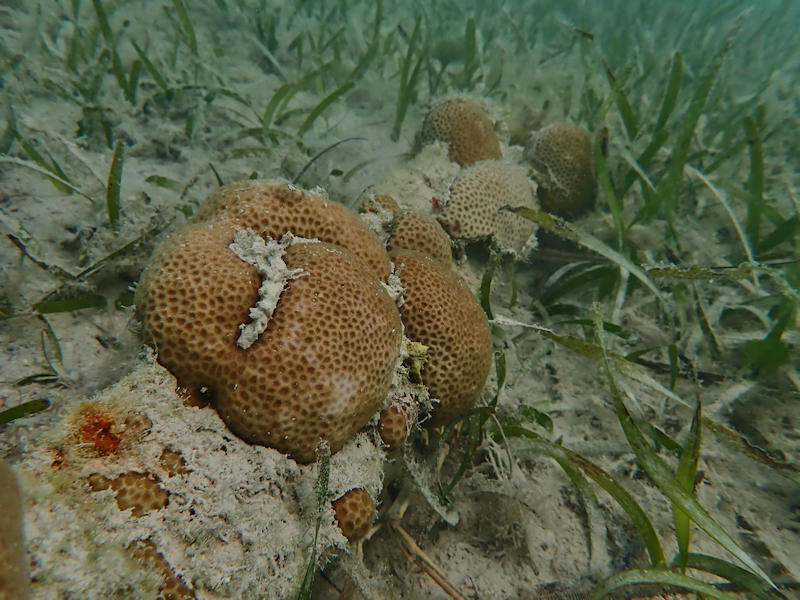
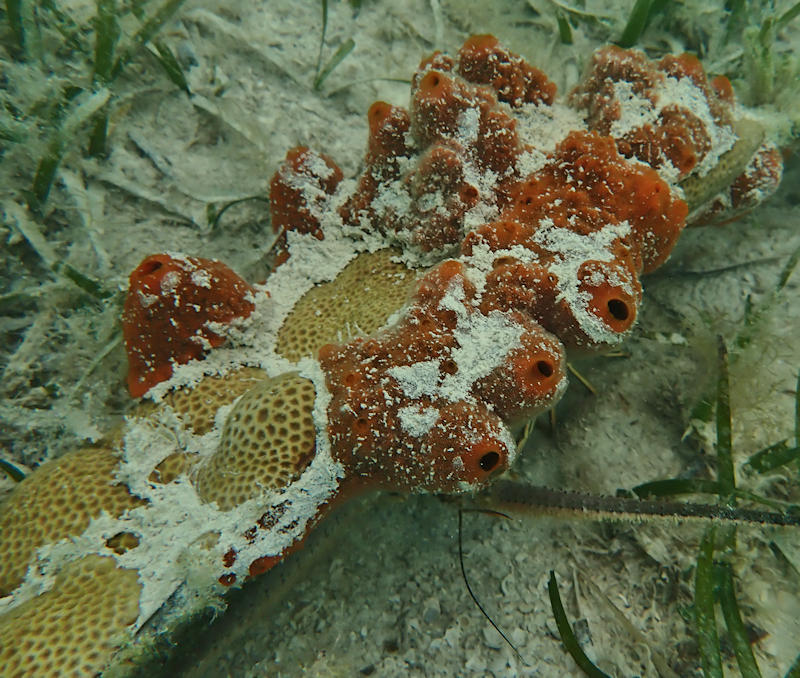
Two relatively large colonies of coral were also in this area. I’m glad we did not hit them with our anchor. I am trying to find out what species these are because I am not familiar with them.
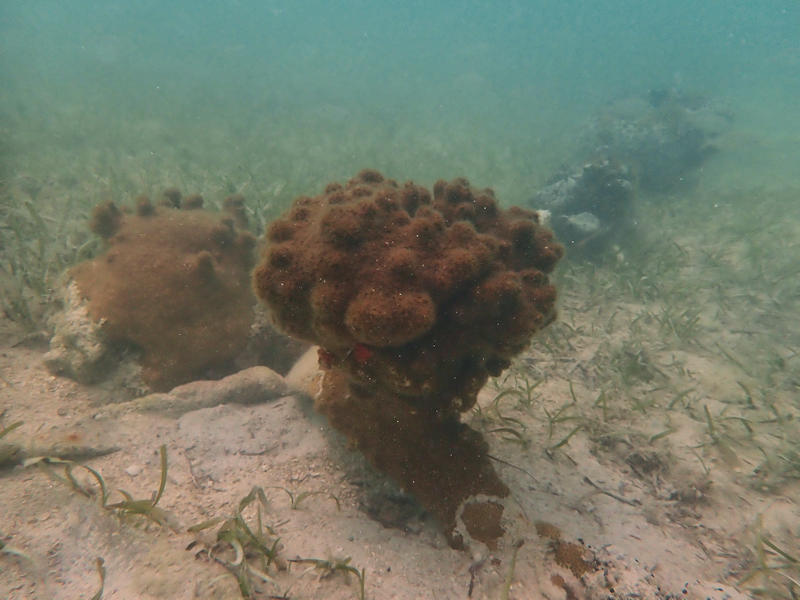

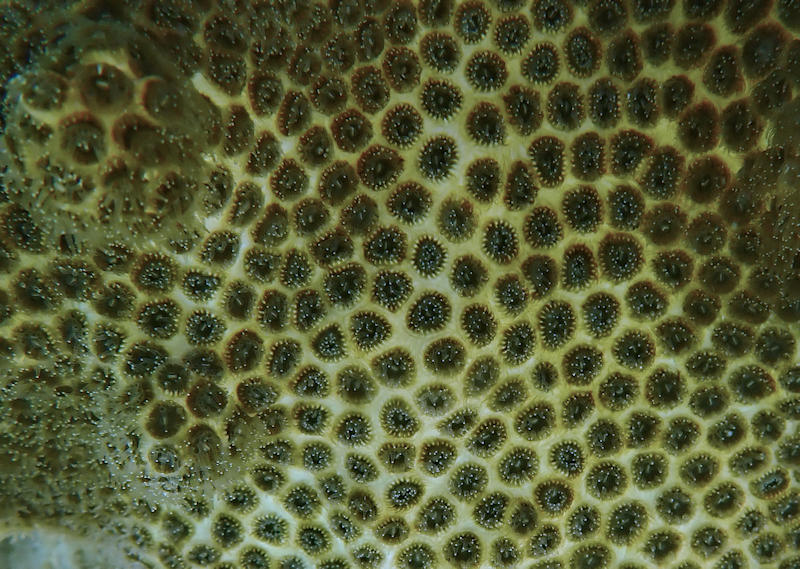
A large black sponge, possible a Loggerhead Sponge, was home to anemones and a small spider crab. The hairs on the Spider Crab’s body and legs were covered in white coral silt.
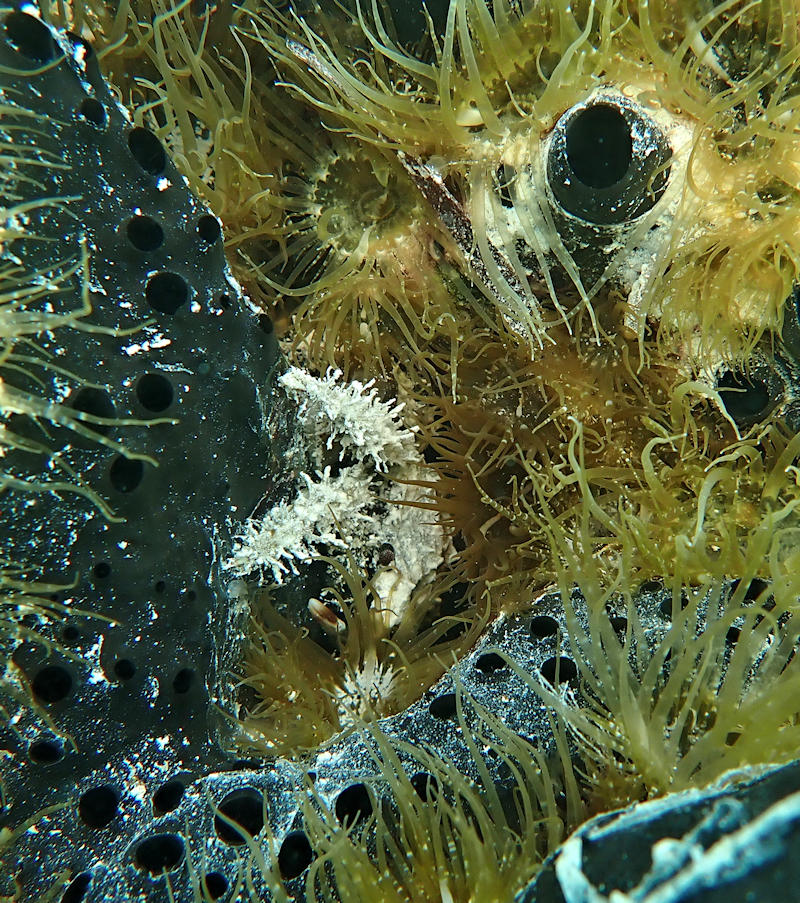
Lots of small and possibly legal size lobster greeted me from under the coral. They were laughing at me because they knew that the season ended on the first of April.

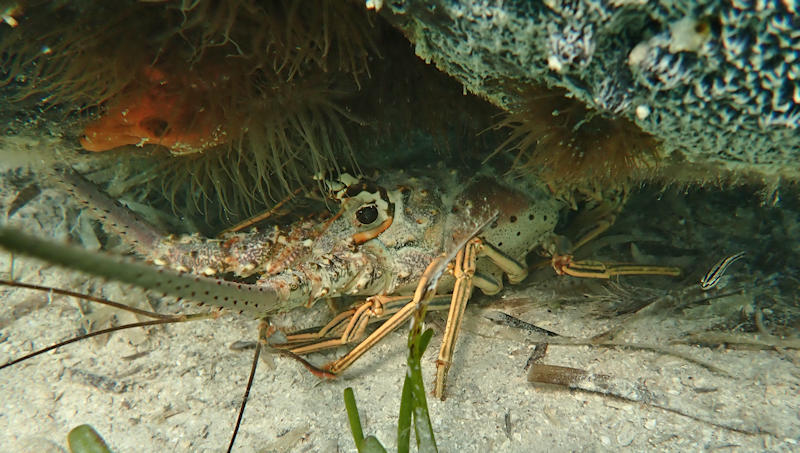
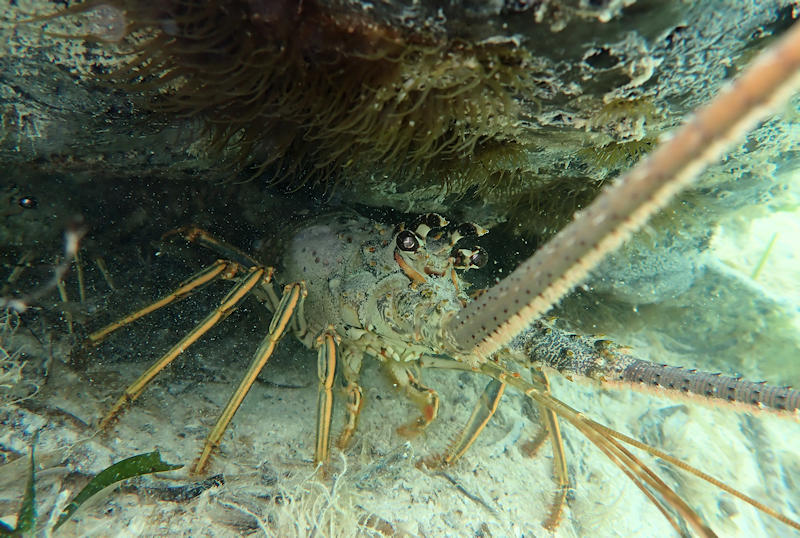
By this time, I was getting cold and my legs were cramping up so I had to come up and get warm.
All Plans Are Made Of Sand
April 7- 13
Having taken care of the big boat problem, we were ready to get out of Boot Key. Thursday I had done laundry, repaired the lazy jacks on the jib (going up the mast twice), and sewed the mainsail cover zipper back on. Bliss got a bottom cleaning Thursday afternoon. That’s always a job that no one likes to do. I had braved the canal, before we left, to scrape the barnacles from our props—they were so encrusted that they would not feather and would have not worked well—but I did not scrape the whole boat hoping to do that in nicer water. The hulls weren’t that bad considering our nearly 4 year old bottom paint. So we were all ready to go on Friday, the 8th—NOT! Friday morning we got a call from Bliss saying that they had been up all night dealing with a diesel leak and needed more time to clean it up. So back to the office to sign up for one more day. I used that day to get a sore throat checked out at the local urgent care. This had not been debilitating but was sore and had progressed to my voice box so I figured this delay was time to see if anything could be done for it. I had taken a couple of home Covid tests which were negative. Turns out it was not strep, but I accepted a prescription for an antibiotic since that is always nice to have on the boat. While waiting at Publix for the prescription I watched the chickens and soothed my throat with a pint of Cherry Garcia.
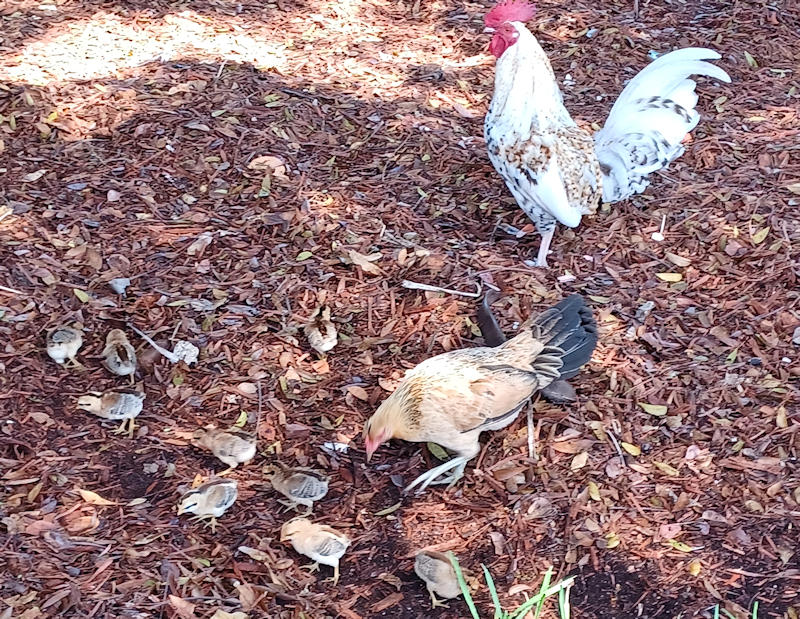
Saturday we were all ready to go when Bliss informed us that one of their engines would not start. But then it did and we were on our way to Islamorada!
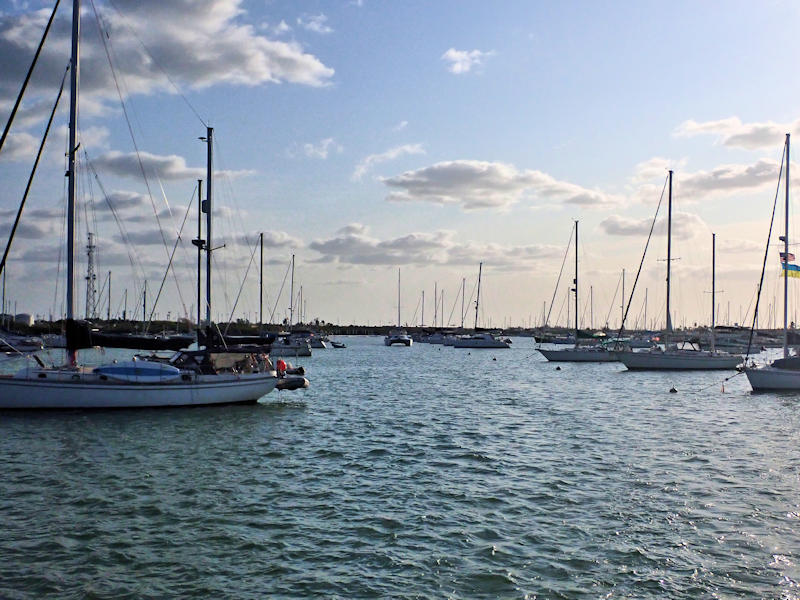
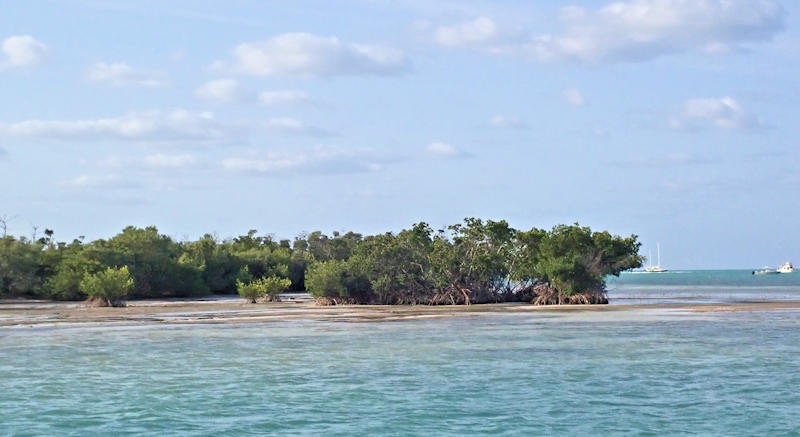
We had great wind and made water as we sailed on the Atlantic side. Our sail was reefed (taken in a little to shorten the sail) because the bottom batten pocket was not repaired yet and we didn’t want to loose the batten. Bliss, with her clean bottom and new sails, soon caught up and sailed right past us.
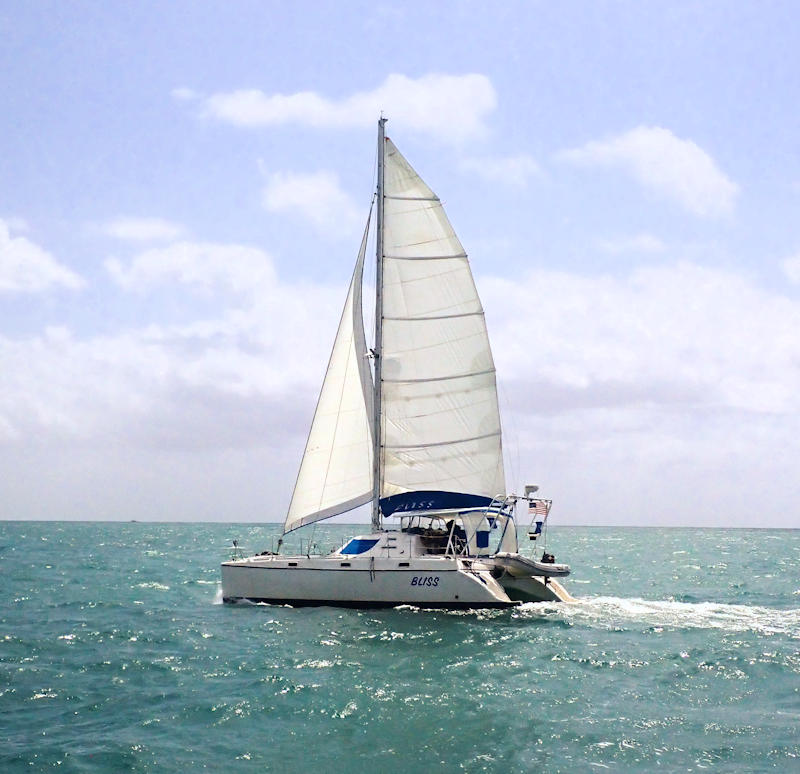
We turned on the engines to make sure we had control when passing under the bridge. Bridges always look like we are going to hit them. Even when the height indicator reads plenty of room I hold my breath as we go through or just don’t look.

The wind clocked around during the day in front of a cold front and our anchorage was a bit rocky but, with the passage of the front, it promised more protection.
Early sunday morning, April 10th, the front wind came through and woke us up at 3:30am. We monitored our position in near 30kt winds for a couple of hours then, satisfied the anchor was holding, went back to bed. The morning was FRIDGID—10 BELOW! (my zero stands at 70F). This is seriously winter weather here and not to my expectations—and who cares? The sun came up and warmed up our enclosed cockpit and the waves calmed down enough for us all to go to Lorilei’s for lunch. I immediately ordered their very yummy Key Lime Colada. After lunch we walked down to the Islamorada Brewery where we had a pleasant afternoon listening to live music. We are all mellowing out a bit.
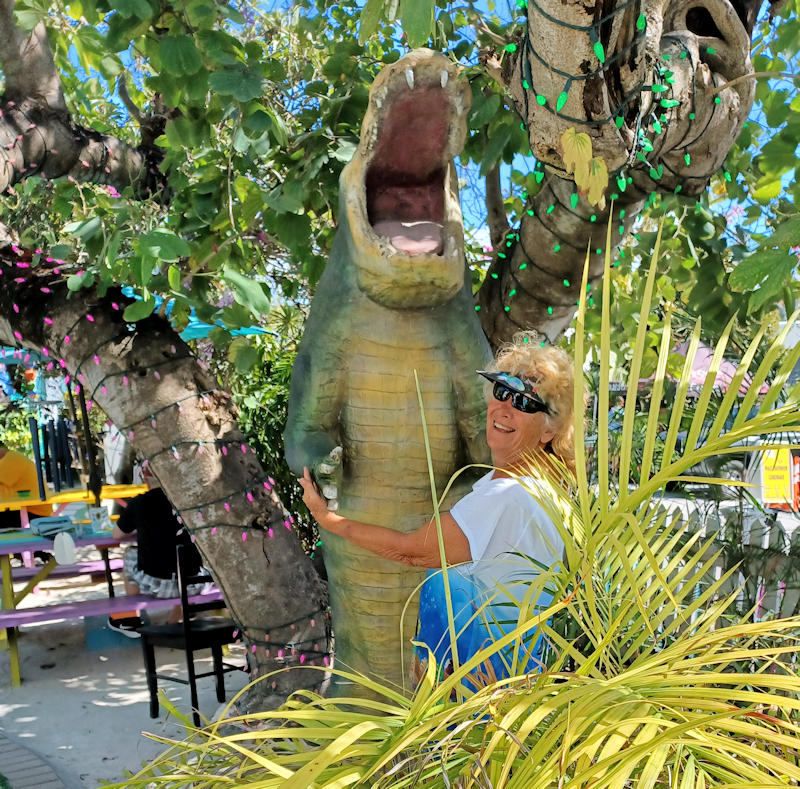
The wind is still blowing in the 20s on Monday and the weather forecast appears to show a window for a crossing next weekend. However, next weekend is Easter which is a very big deal in the Bahamas with holidays on Good Friday and Easter Monday. In order to cross then we would have to get our covid tests done on Thursday and hope that all the on-line paperwork could be processed in time for us to arrive Friday or Saturday. We know that the reality is that the holiday mood slows things down from Island Time, but we are willing to try. I make use of the day by dealing with the ripped seam in the batten pocket, That took a lot of umph and pliers to get the needle through the thick sail material and batten reinforcement and luckily, it was only a few inches. We ended up again at Lorilei’s for dinner and my favorite drink. Eat dessert first—-and last! We stayed up far into the night playing a rousing game of Mexican Train Dominos.
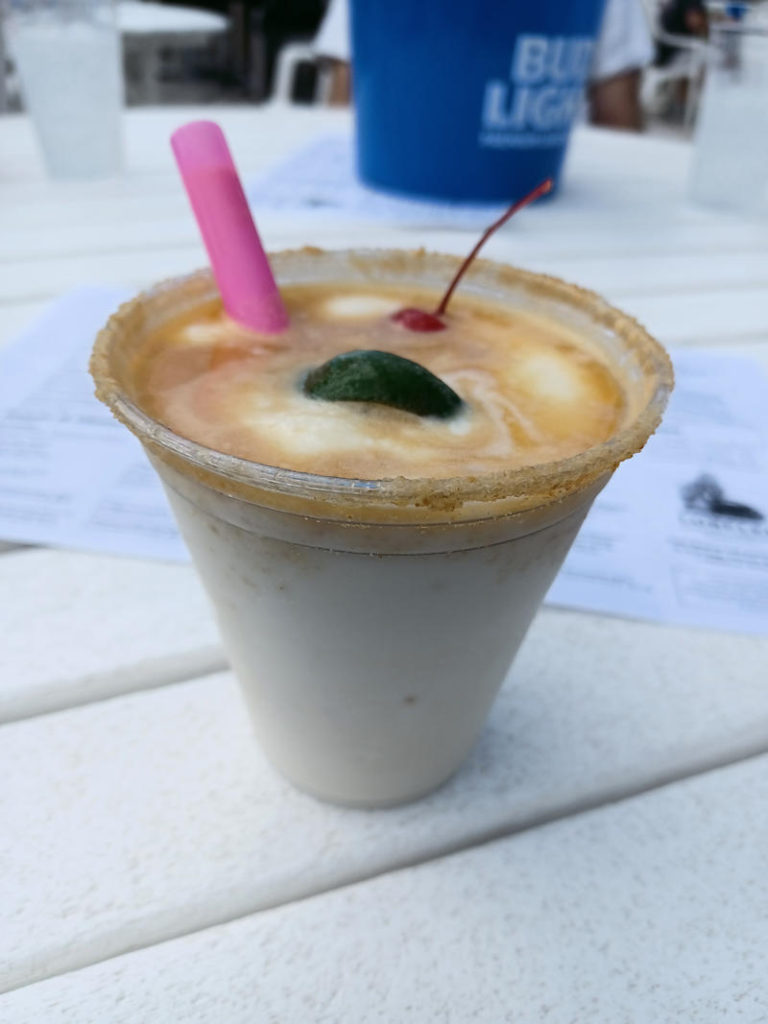
So on Tuesday (yesterday I think), the wind was still blowing and there was one more thing to repair on the boat. Our jib sail had torn a couple of years ago and I had repaired it with sail tape. The tape had come off and it needed a more substantial repair. So I constructed a patch and sewed it on. That was much easier than the batten pocket.
After a short trip to shore, our friends on Bliss informed us that they were not feeling comfortable with going to the Bahamas this season. The decision to cross is a complex one, involving weather, condition of the boat, right now the timing of covid testing, and just plain gut feeling. We respect their decision and, frankly, had some misgivings ourselves. Boat insurance has gotten very restrictive and expensive, since several hurricanes have cut into their profits. Our present policy will allow us only 30 days in the Bahamas in a restricted area. In talks with several insurance brokers before we left, we found that our long experience in cruising was considered a detriment. Evidently they want to insure only weekend boaters. There is no making sense of it—it is just the way it is. Furthermore, our countless delays getting started have cut into the time we could stay in the Bahamas before we want to head up the U.S. Coast to Maine, making it really not worth it to go ahead and pay the exorbitant price for an adequate policy.
So this Wednesday morning we are disappointed, but relieved that the decision has been made. The weather will eventually calm down here (maybe this weekend and in the next few weeks) and we won’t be in the Bahamas stressing out about bad weather days cutting into our limited time there or if we can operate safely within the insurance box. There are plenty of things to do here, once the weather calms, and we may even try the Dry Tortugas again.
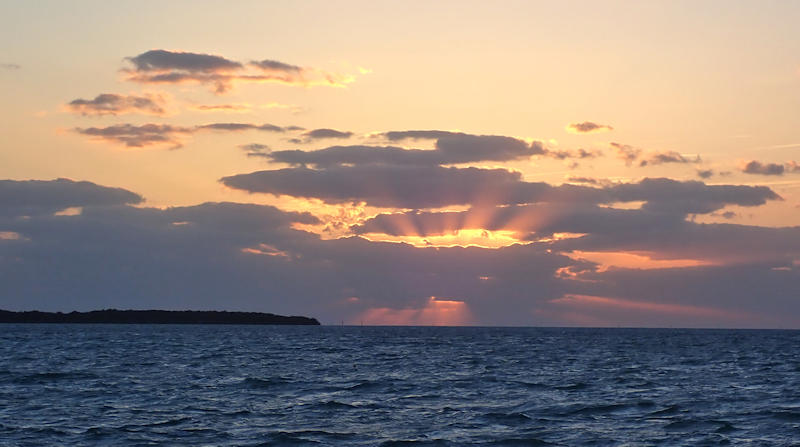
Go With The Flow!!
This is a new type of posting for me and I am having a bit of a learning curve so please bear with me.
From CLOD to Cruiser: Regaining our Sealegs–part III
March 30 to April 7
Well the good news is that on the way to the Everglades we decided to see how bad things really were. We started up the watermaker—IT WORKED!!! We tested the holding tank pump out. This has never has worked after sitting so long—IT WORKED!!! I brought out our little ice maker. It grinded and squealed when I turned it on and I had to apply what Bill calls “percussive maintainance” but —IT WORKED!!!! We attempted to sail but the wind was coming straight at us and we finally put the sails away and motored. Samantha is getting her sealegs and has found some of her favorite kitty perches.
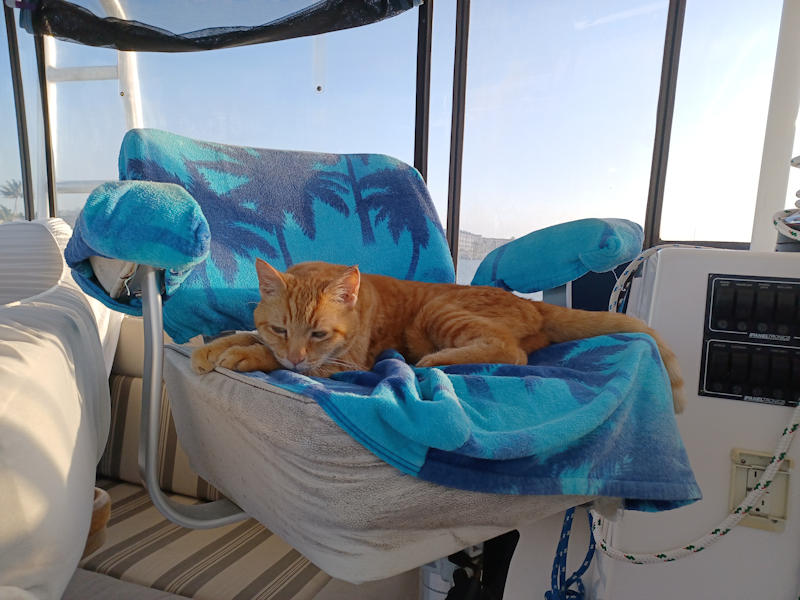
Just as we approached the planned Shark River anchorage, we had a hitchhiker. This Royal Tern sat on the boat for an hour or so. It’s buddy circled the boat several times and I thought it might also land. Samantha was oblivious.
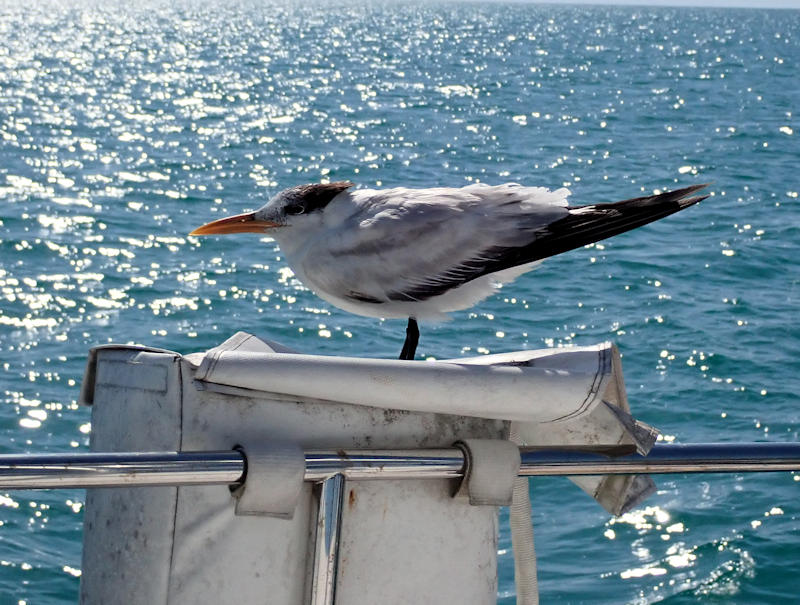
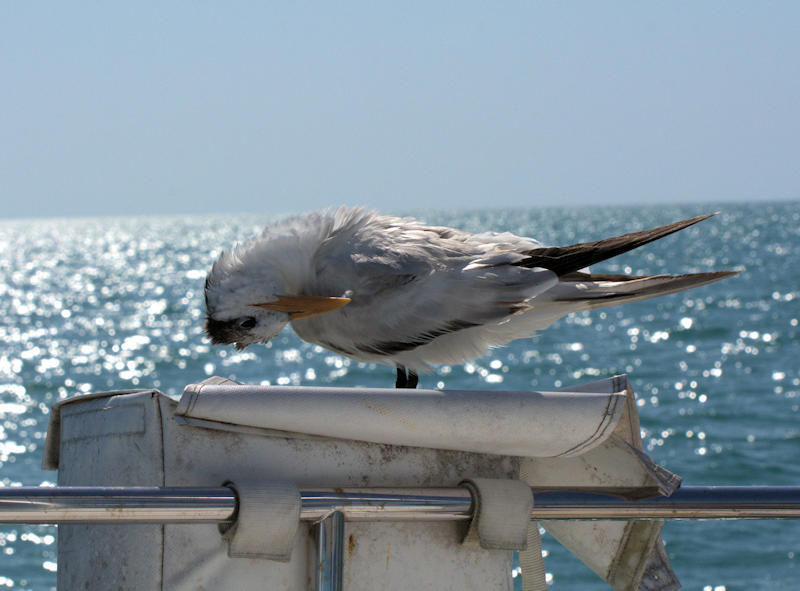
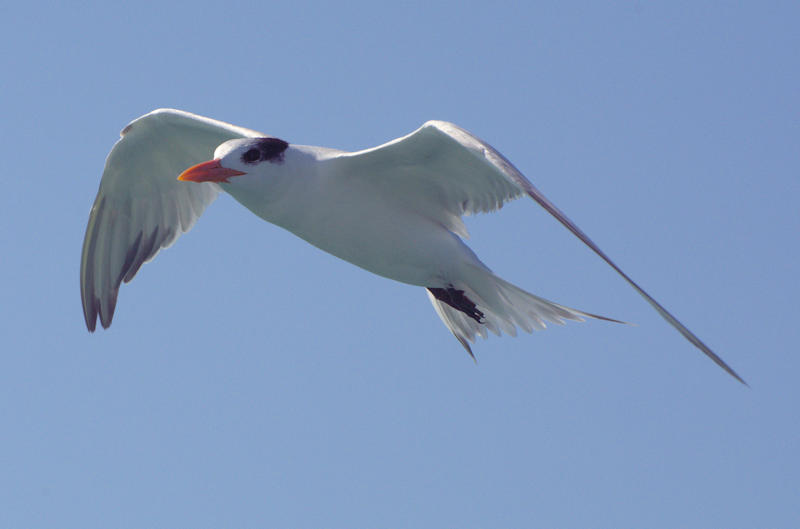
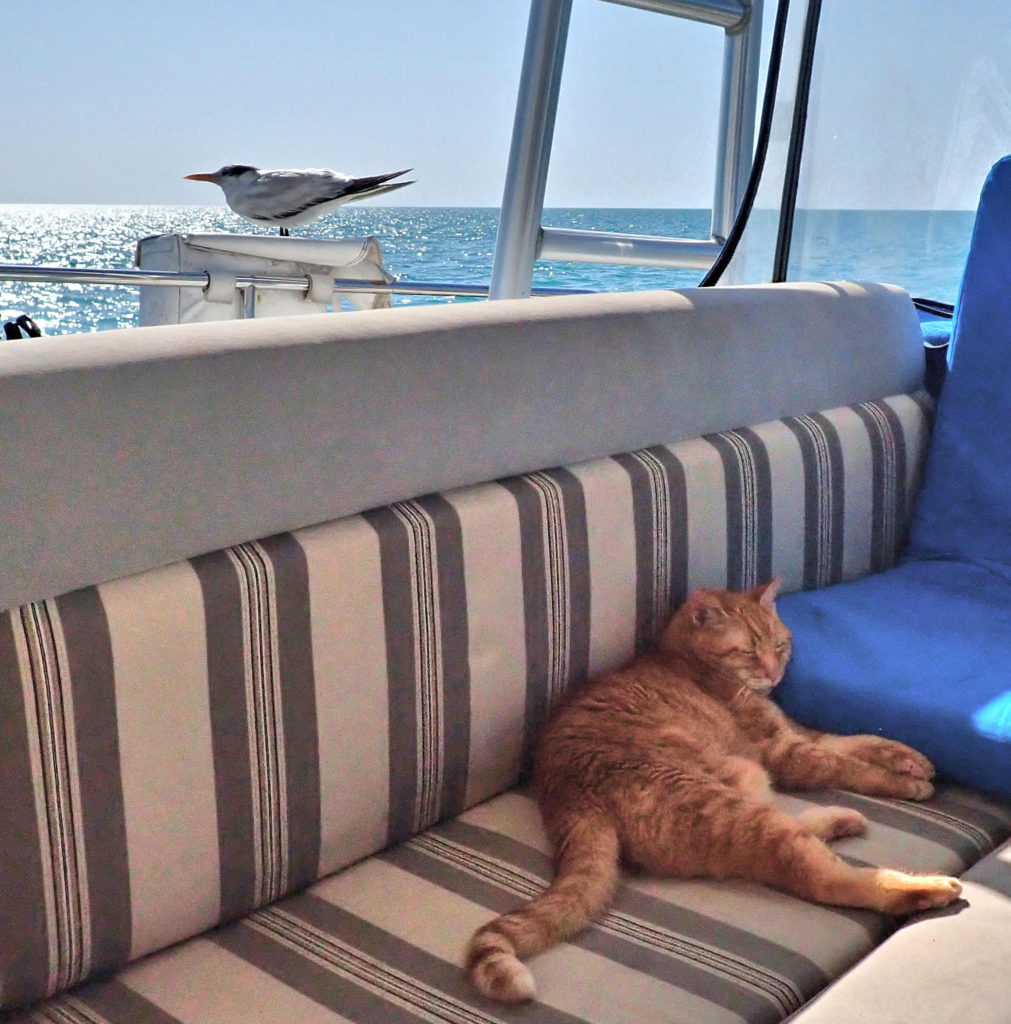
The delay in Factory Bay meant that we would run into winds of 20-30 kts from the southeast before we could get to the Keys, causing us to have to stay put in the Everglades for a couple of days. The quiet and remote anchorage was nice after the bustle of the ICW and towns. No internet or cell phone service. The wind blew in the high 20 kts and we stayed on board. I would love to go back sometime when we can get off the boat and explore.
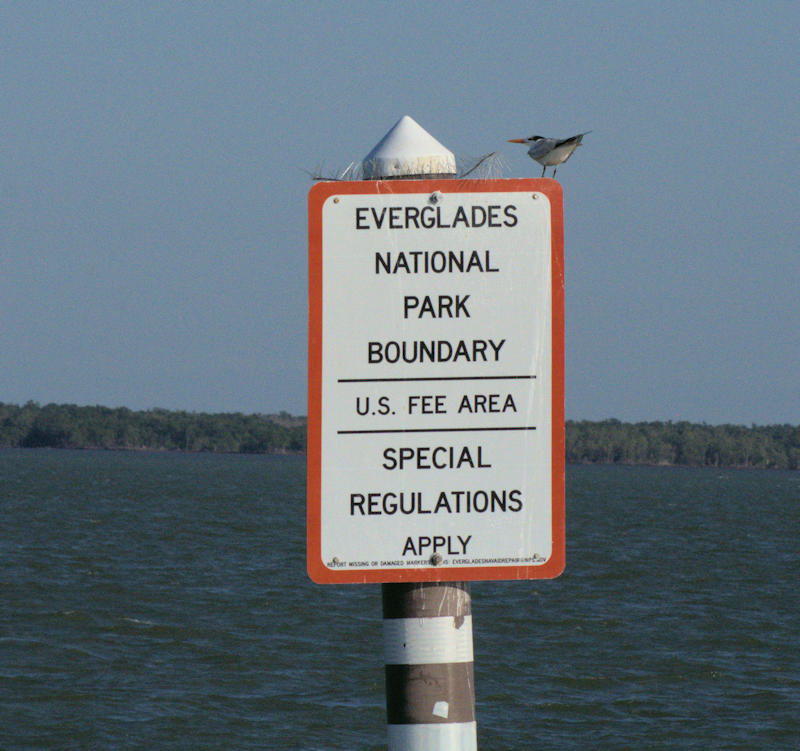
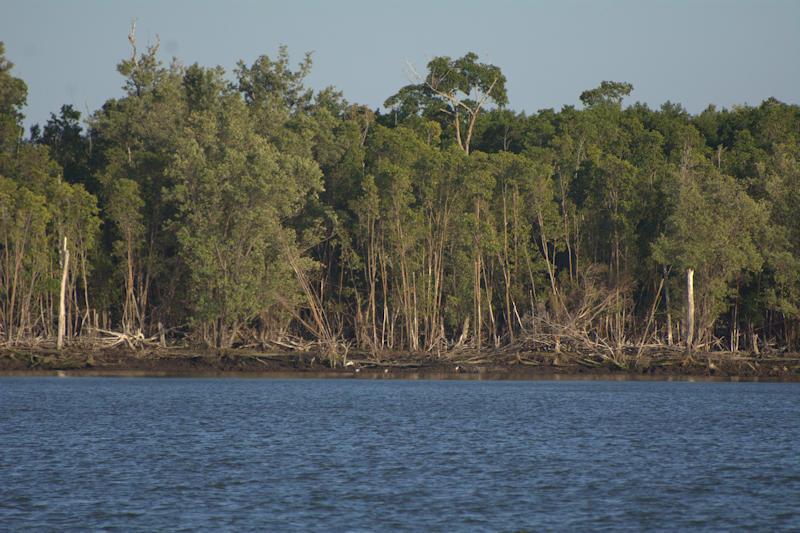
Thursday I made Bill’s traditional birthday pie, a piecrust lined with cream cheese and filled with strawberries and peaches. It required the use of the oven which I then discovered that I had forgotten the oven thermometer. Since the oven has no temperature control I had to just babysit it until the pie crust cooked. The wind switched during the late afternoon, and it was evident that we were not going to spend a good night where we were, so we weighed anchor and moved a little north to a cove. We should have been there all along—so nice and protected—we could have explored a little. Oh well, now we know.
Friday, Bill’s birthday, we left the Everglades at dawn and motored to Marathon in the Keys without excitement except for a couple of gannets. We also tested the laundry machine—IT WORKED!!!! Boot Key Harbor had no mooring balls available and the Atlantic side was rocky so we found a nice anchorage on the Gulf side. Bill started calling places to order parts but, alas, it was late Friday afternoon in the Keys, and no one appeared to want to do anything until Monday so there we were. We celebated Bill’s Birthday at Keys Fisheries Restaurant but we were all pretty worn out.
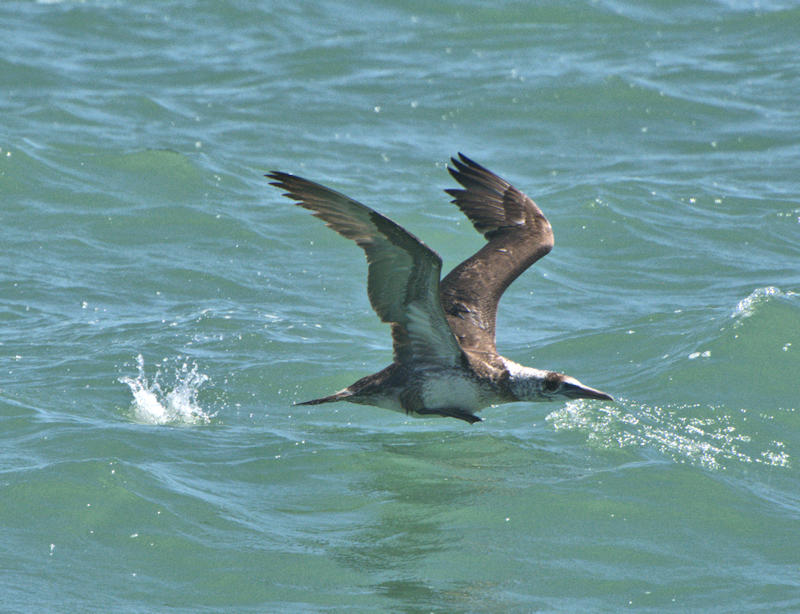
Early Saturday morning I looked over the side and the water was clear! I could see the species of seagrass on the bottom. By the time I was ready to go snorkeling, the tide had changed and the water turned murky again. Sunday morning we were awakened by a big storm at around 2am. Lightning and Thunder and wind we had, but the worst of it stayed west of us. We were up about 2 hrs or so making sure we held. By Sunday, the weather had changed, and there was a big exodus from Boot Key Harbor so we came into the mooring field and picked up a ball and a well-deserved good night’s sleep.
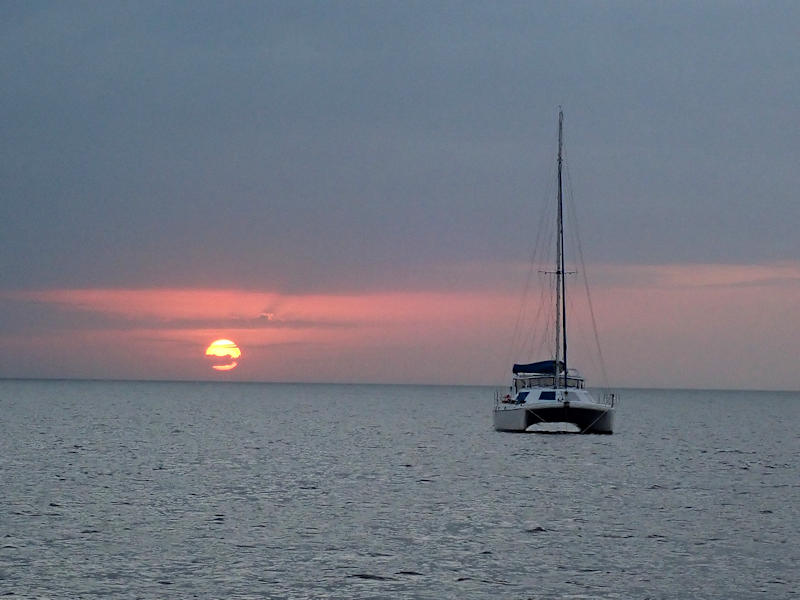
Boot Key Harbor, in Marathon, has access to most anything you need or can order. It’s a popular stop over and resupply place for cruisers, and home to many locals that can’t afford the high price of Keys housing. This makes for an interesting and friendly bunch of people. It’s not a place I like to spend a lot of time in but there are good restaurants around and being on the mooring ball means you don’t have to worry about dragging at night. We needed a little rest and recuperation.
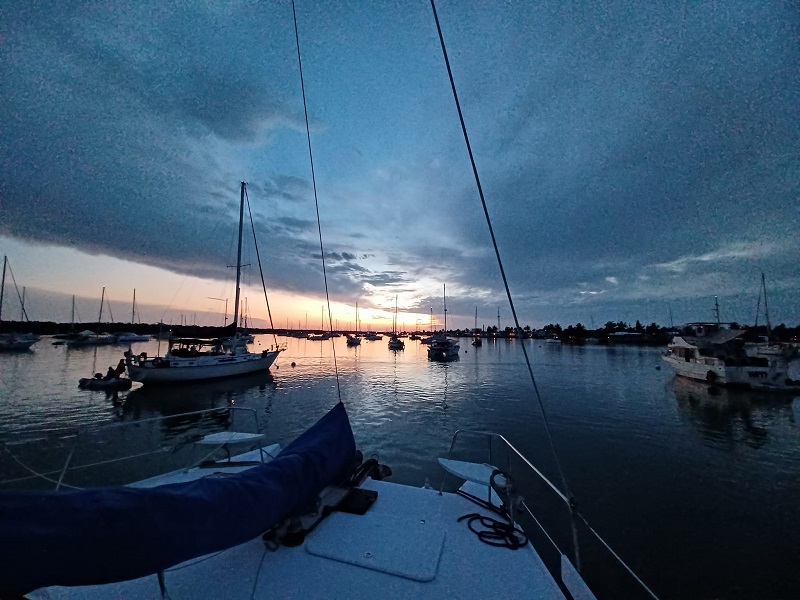
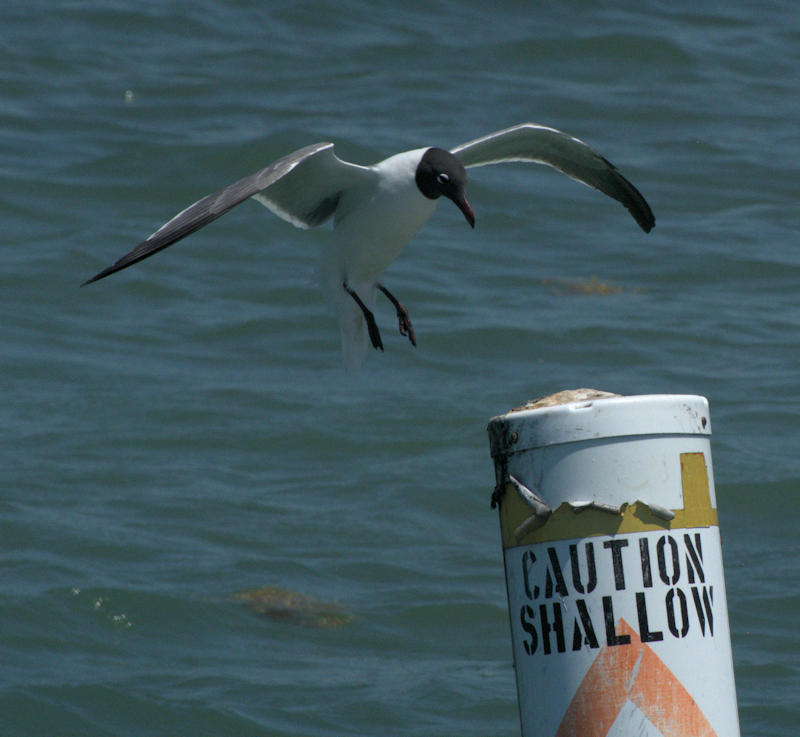
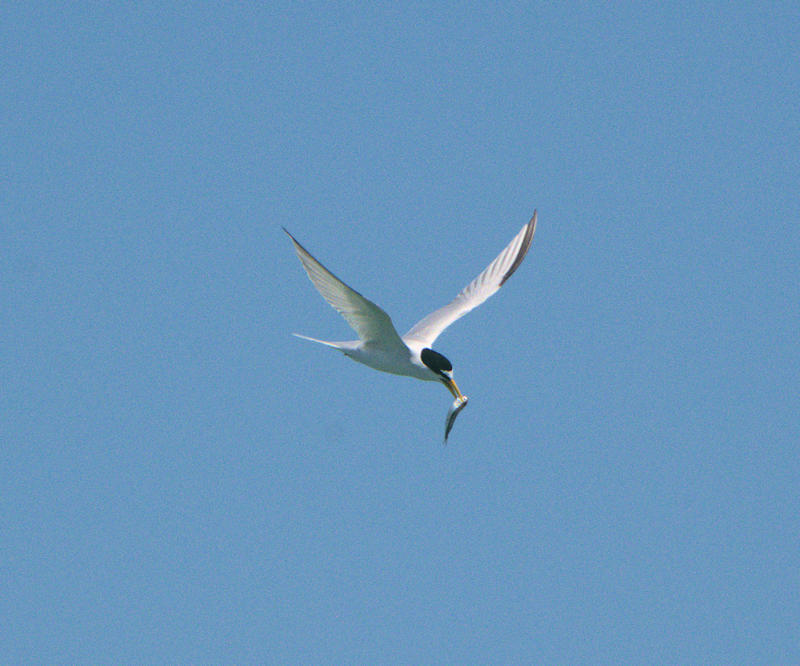
On Monday we were able to get the parts ordered and now we had to figure out where we were going to get hauled out so that we could replace that valve. We knew a place in Key Largo that we went to several years back in an emergency with the saildrive. We figured we would have to go there. That’s not too bad since we are headed that way to make our crossing to Bimini. However, while Bill was taking the dinghy down to pay for the parts, he noticed that the local boatyard advertised they could pull out up to 22 feet wide (we are 20 ft wide). Bill called and made arrangements for them to haul us when we got the parts.
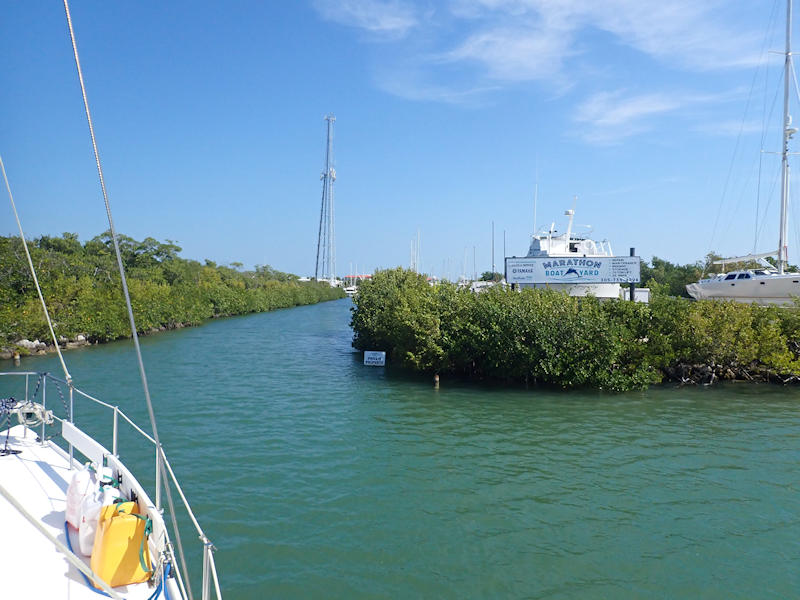

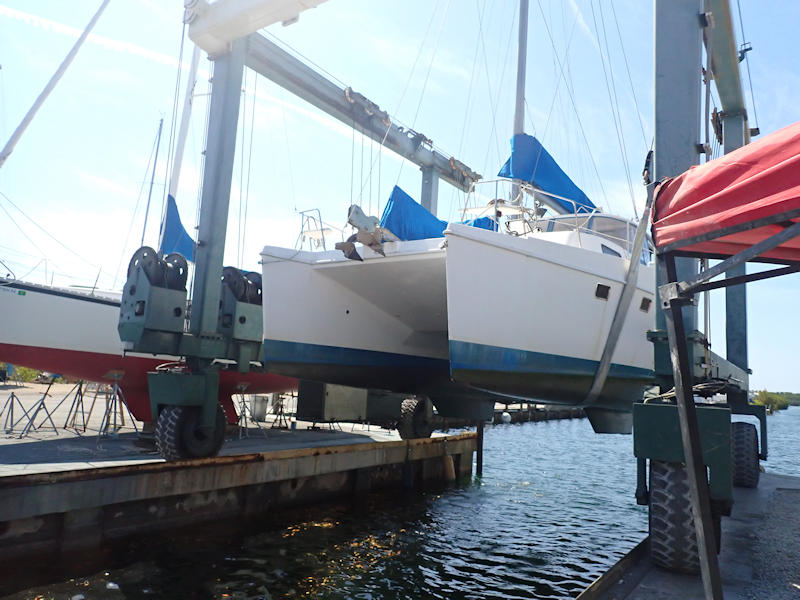
So the score now is things that broke = 7—batten pocket and sailcover zipper torn, water pump, intake valve, engine wires, lazy jacks, autopilot switch. Things working (right now) = 4— watermaker, holding tank pump, ice maker, laundry machine (but these are big ones). Something Breaks Every Day—sometimes we don’t know it. This has surely been a Shake-Apart Cruise but better now than later.
Whyever we do this, I think we're insane. Whyever through breakdowns and storms. So never ask why, just take joy in the wind. Sailing off to the sunrise, my friends
Are We Having Fun Yet???
From CLOD to Cruiser: Regaining our Sealegs–part II
March 26-29
And, indeed, on Saturday morning, we were greeted by fair winds and following seas. The sails went up and, other than a couple of battens being loose that was easily dealt with, we had a lovely sail down to Factory Bay in Marco Island.
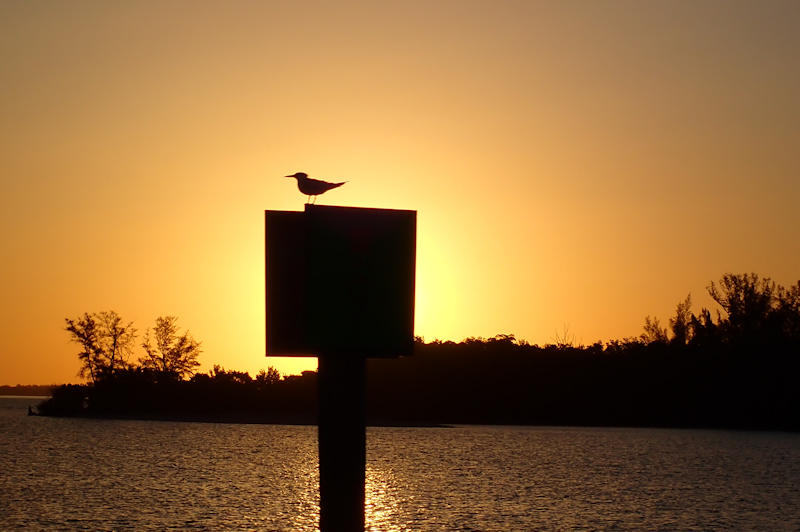
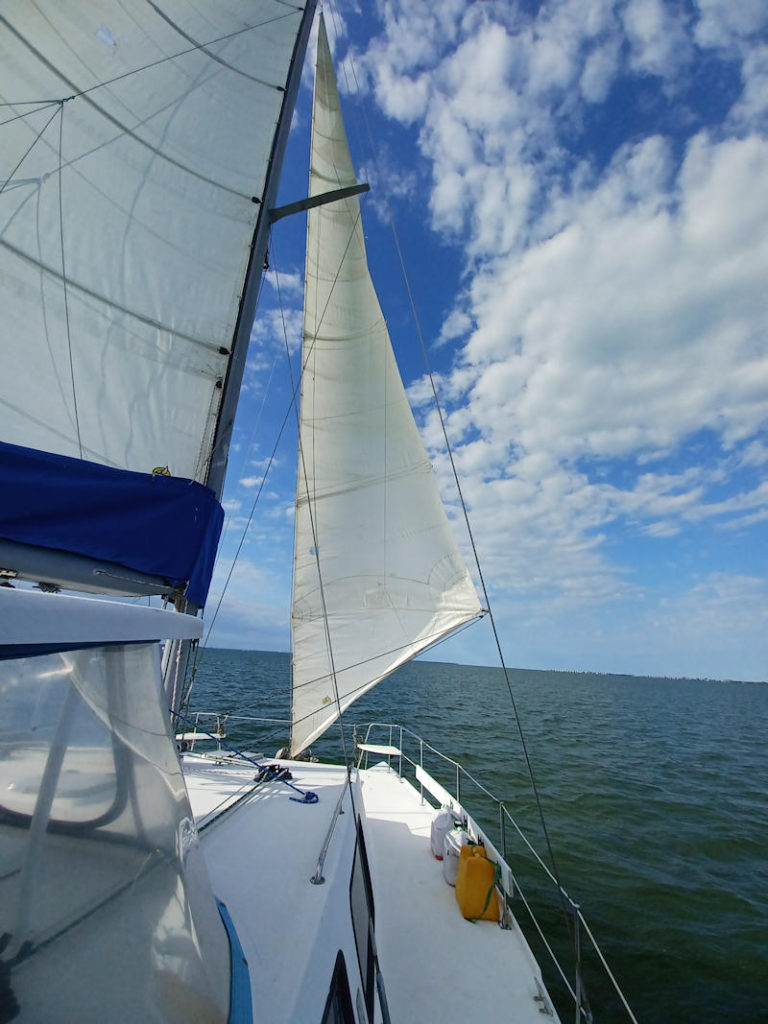
Yea! Hey! The sun is shining, The sails are up, The water is green, We're going six knots, It's a cruiser's life, It's a cruiser's life, It's a cruiser's life for me!
After being off the boat for five months and not getting any younger, our bodies and minds need some transition time to accustom to the physical and mental rigors of cruising. We have steep stairs leading to the salon and down to the heads and galley imposing a stair-stepper exercise regime. The boat is always moving and our muscles always accommodating that motion. Sail preparation and stowing includes climbing the mast and hoisting your body up onto the cockpit roof. We expect to loose 10 lbs or so in the next few weeks. Mentally, we always have to be prepared to deal with the changing conditions at sea, from inaccurate weather forecasts to equipment failures. We hoped for a gentle transition from CLOD (Cruiser Living On Dirt) to Cruiser. It was not to be.
As we settled into the anchorage at Marco Island, I fixed a nice dinner and began to settle down, thinking about how much we had deserved a fun, relaxing day mostly under sail. Then Bill heard the bilge pump go off—not long, just a bit. He looked down in the bilge and saw water in there—What was water doing in the starboard bilge??
It wasn’t much and the pump was automatically taking care of it but the reason had to be found. Bill looked in the engine room which is under the stern bunk and soon found the engine raw water pump was leaking. Not really a problem, we had a spare water pump. So he pulled the handle on the raw water intake valve to shut it off and the valve shaft broke off—uh oh—in the open position. Further inspection showed that the screws to the cap of the water pump were corroded and failing. One screw head had fallen off and he knocked another one off while inspecting it. If the cap blew off water would gush into the starboard hull. It was Saturday night and we were not in direct peril so we decided to monitor it during the night and deal with it in the morning. It looked like we were going to have to find a place to haul the boat out of the water to fix this one. The closest boatyard that could take our catamaran was back in Ft. Myers
Wham, Bam! The mast comes down, The engine blows up, The water pump leaks, The batteries fail. It's a cruiser's life, It's a cruiser's life, It's a cruiser's life for me!
So in the morning we were sorry to find this had not been a nightmare and we started looking at our options. Of course it was Sunday so we were pretty much on our own! We started brainstorming ways to shut off the engine water intake using flex tape and/or plastic wrap. The intake is a series of slits on the side of the sail drive, which looks like the bottom part of an outboard motor. It’s not a matter of just putting a plug in a hole like our other intakes. We finally called Tow Boat US to consult them for local knowledge as to where we could find a haul out. Tow Boat US is a subscription service that helps out boaters 24/7 and takes on many tasks that the Coast Guard formerly responded to, like boats running out of gas or engines failing and needing a tow back to port–kind of like AAA on the water. Tow Boat US will also respond to serious issues and assistance in bad weather but, at that point, they classify this service as “salvage” which is beyond the terms of the subscription. Tow Boat US soon showed up in their red boat and Bill showed them the problem. They agreed that it was serious and they formulated a plan to tow us to a boatyard. First the intake had to be plugged since any vibration during towing might dislodge the remaining water pump cap screws. Of course towing the boat at least 40 miles in the ocean when it could sink at any time fell under salvage conditions. Further more, if they were going to tow it then they had to also take responsibility for plugging the intake. We had little choice at that point and started calling the insurance company hoping it would take care of some portion the hefty bill.
So, in spite of the claim that flex tape adheres under water it didn’t, and the Tow Boat US guys came up with the idea of plugging the holes with underwater epoxy, which was successful. Now came the hard part of finding a boatyard. Both our mast height and hull width restricts the number of boatyards we can be hauled out in and it came down to two, one back in Ft. Myers and one further back than Punta Gorda, our starting point. There was also a matter of high winds forecasted in the next day or two. We told our friends on Bliss to expect that we would not be continuing the voyage.
Later on in the day, Bill got a call from Todd at Tow Boat US who explained that if Bill could replace the water pump now, it would be easier to remove the epoxy before it fully cured and then we could travel on with more options to find a boatyard on our way. We started clearing out the back bunk, which is our supply stash, so that we could open up the engine room. The water pump bolts can only be accessed after removing one of the motor mounts. This required us setting up a support ratcheting strap on a 2×4 over the engine. After doing that, “all” Bill had to do was to lean over the engine upside down using several different configurations of socket drivers and extensions to reach the water pump’s 4 bolts. One of the bolts took nearly an hour to get off and an hour to replace because it was in such an inaccessible place. All in all, this “simple” water pump replacement took over 5 hours – it’s never easy! Todd stuck around obviously worried that the epoxy would cure and be more difficult to remove. But he got it off and we all were relieved. Dinner then unconsciousness!
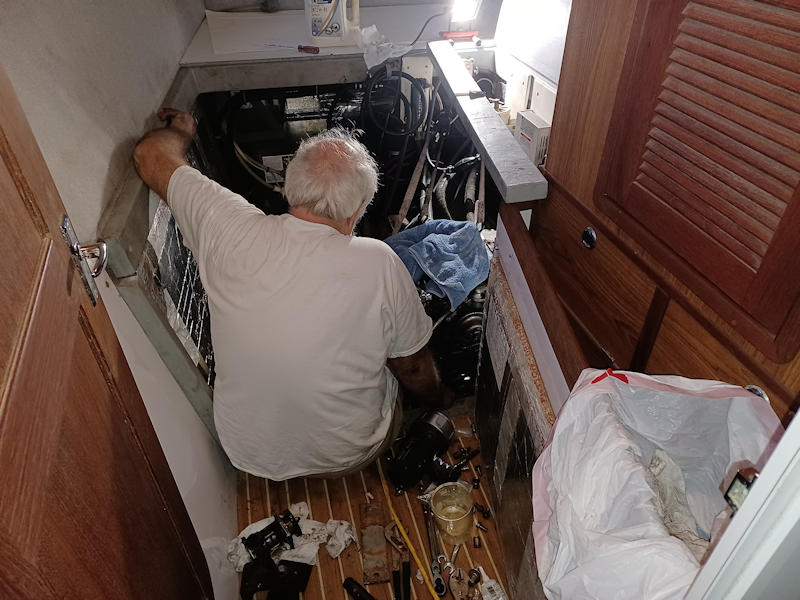
We had lost a day for a weather window and were eager to leave Factory Bay but the boat wasn’t done with us yet. The next day, Monday, we were starting to leave and starboard engine would not start—nothing. So back to the engine room to find some corroded wire connections, which took several hours to trace. Bliss hung with us as we replaced the supplies in the starboard bunk and went out to dinner. On Tuesday morning the engines started but now the autopilot would not come on. OK, we can live without the autopilot, but it makes for a stressful passage. We finally left Factory Bay and Bill traced the problem to a faulty switch along the way. All’s well, now!?
From CLOD to Cruiser: Regaining our Sealegs–part I
March 24th and 25th
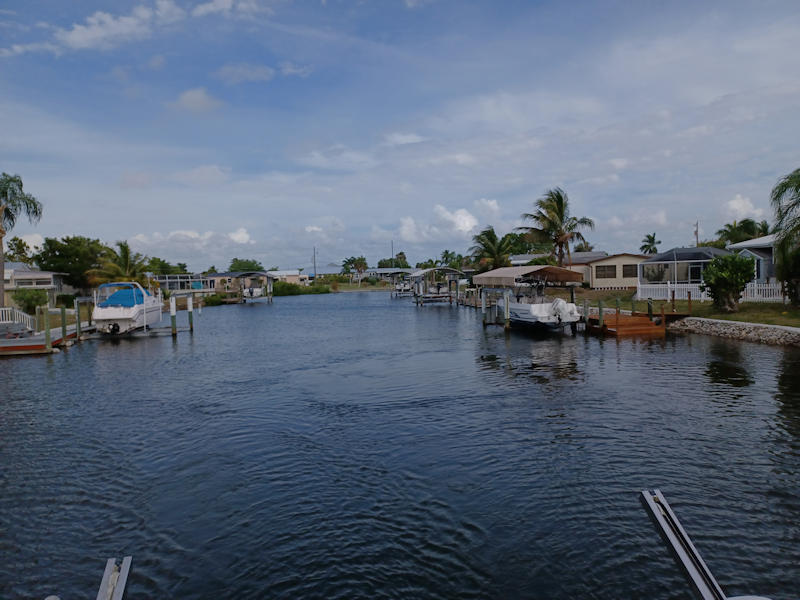
After months of checking the boat, checking supplies, closing up the house, we are off. Boy it was so much easier when we lived on the boat. Clothing and was already on board. Boat tools and house tools have been mixed up. So in the end we just had to leave.
However we do it, this dock we must leave. However we make up our minds. So cast off the lines and go look for the wind Sailing off to the sunrise my friends
The plan was to get out into the harbor and spend the night anchored just off Alligator Creek, however we had to wait all day for the front to pass and there was still unsettled weather present in the harbor, but fortunately heading away from us. I used the time to put even more stuff on the boat and remember what I had forgotten.
The wind had switched to the north which, mixing with waves from the south wind, created a “washing machine”. Our cat, Samantha got seasick and unsecured books rained down on the floor. It soon was evident that the anchorage just outside the creek was going to be untenable. We hauled up the anchor and used the last couple hours of daylight to travel to an anchorage just south of Bull Bay and tucked up to the island for shelter. Our buddy boat, Bliss, stayed in, opting to meet up with us in the morning. Great start, huh?

In the morning, as soon as Bliss was awake, we headed down the Intracoastal Waterway (ICW). We had been this way before coming back from the Keys last summer and vowed we would never travel the ICW again on a weekend. It was Friday so we figured it wouldn’t be so bad, except it was still Spring Break and every crazy person in a boat was out there. Boats of every kind and size up to megayachts (those over 100 ft long).

While dodging boats we did take in some of the wildlife utilizing the markers along the way.
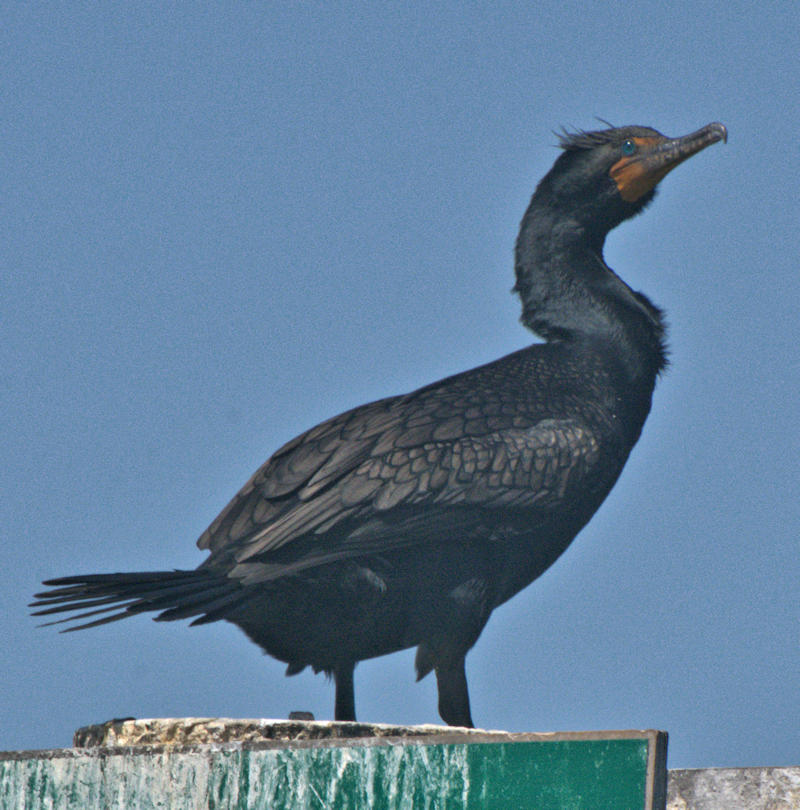
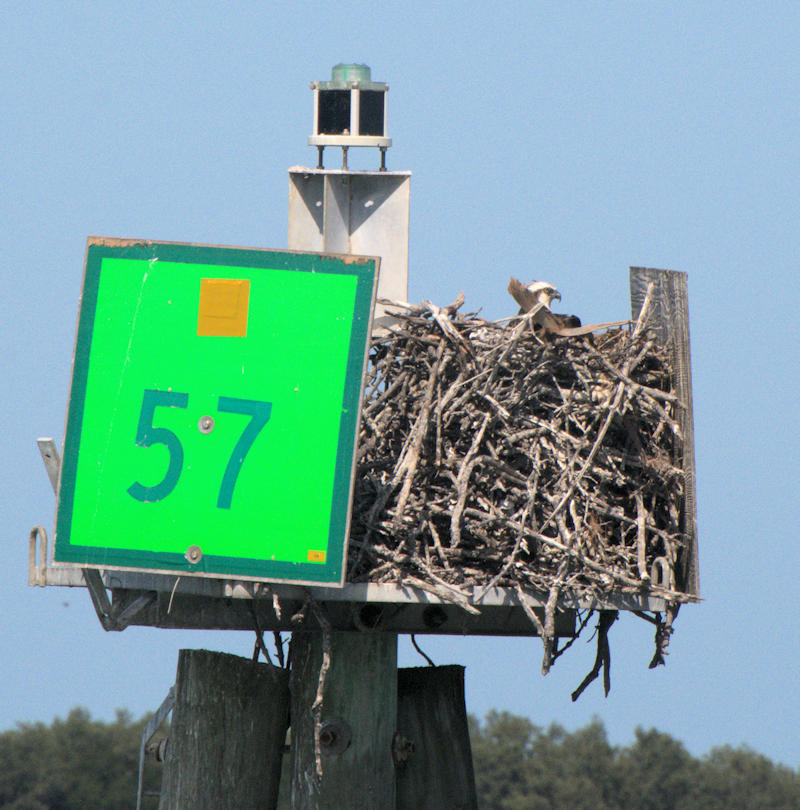
The east coast ICW is busy but not to this extent, and very few megas travel that way over there. It took constant vigilance to avoid the crowd and deal with wakes from close-passing powerboats. We were exhausted when we arrived at our York Island anchorage and happy that the next day we would leave the chaotic ICW for the open Gulf of Mexico.
